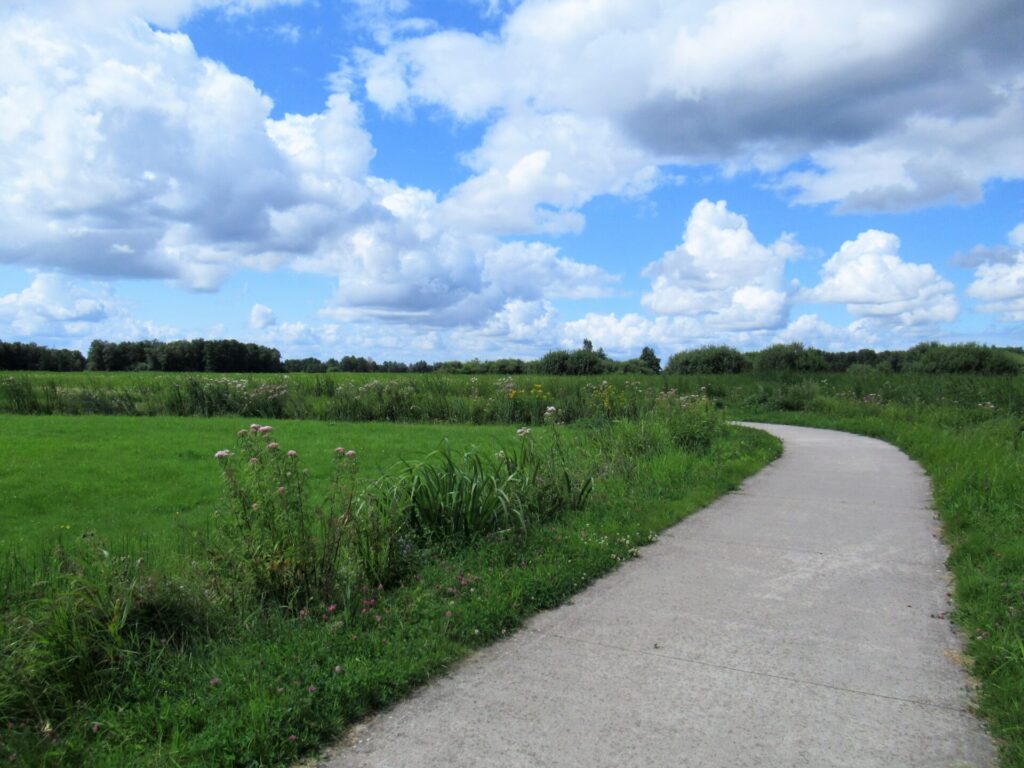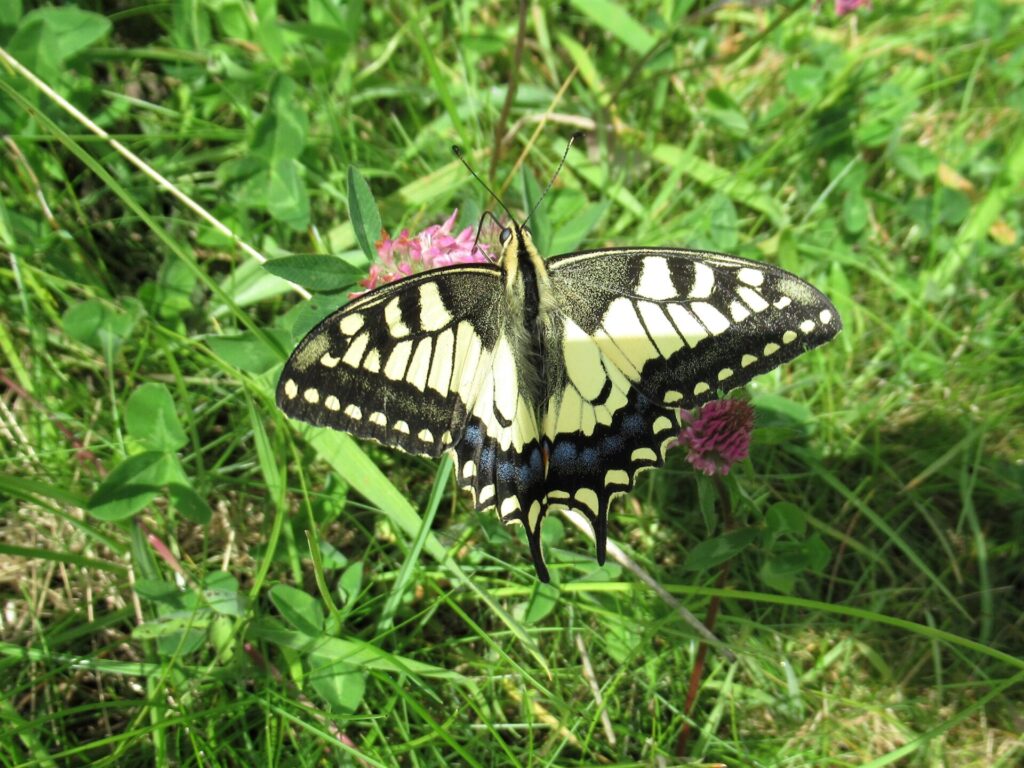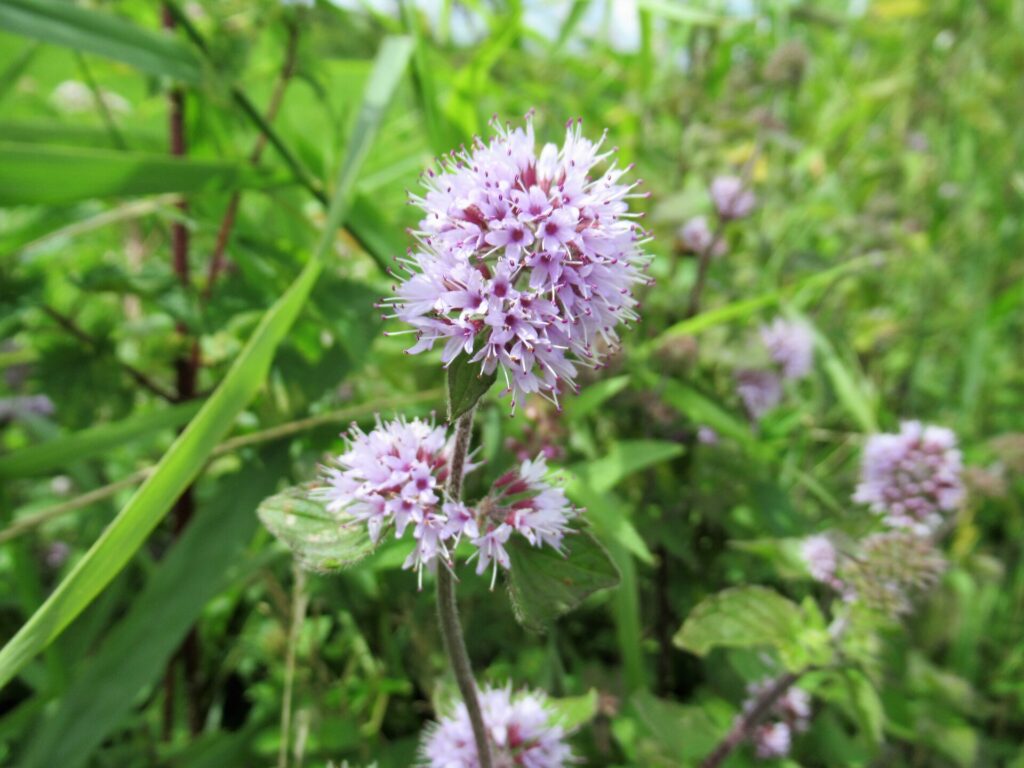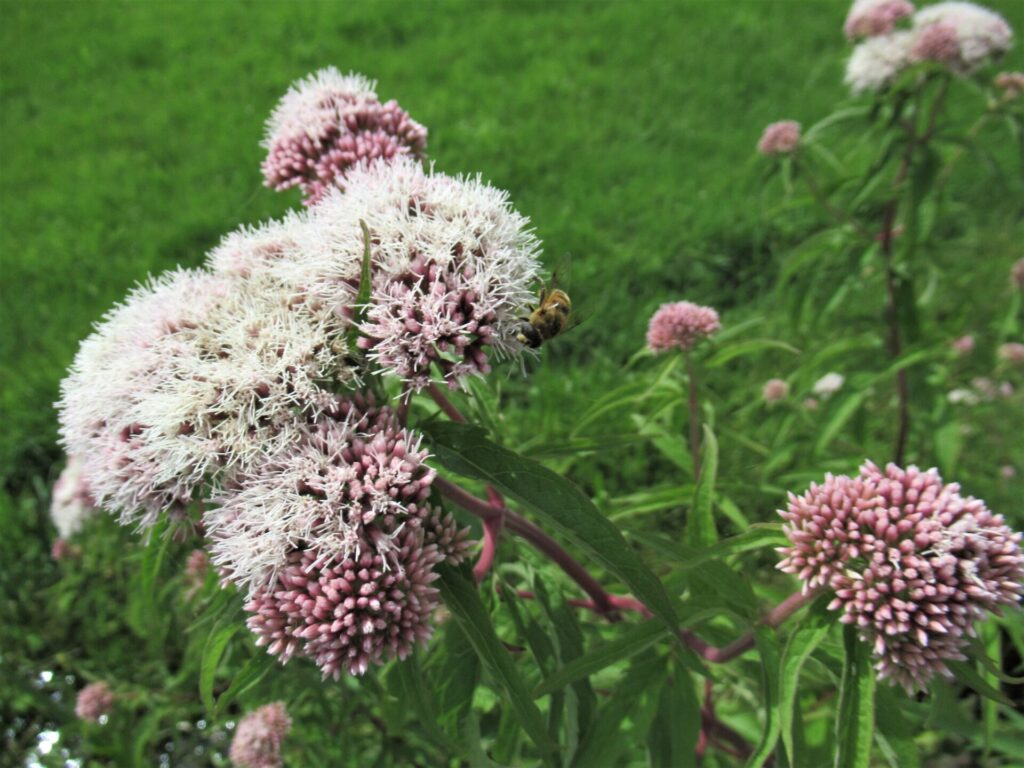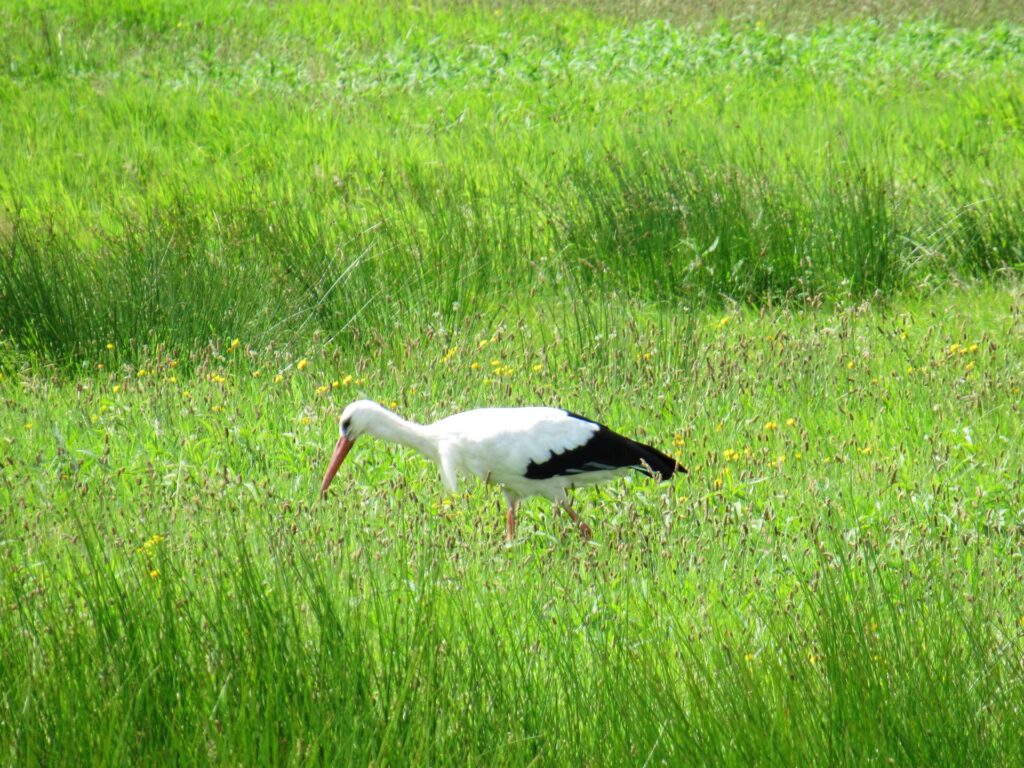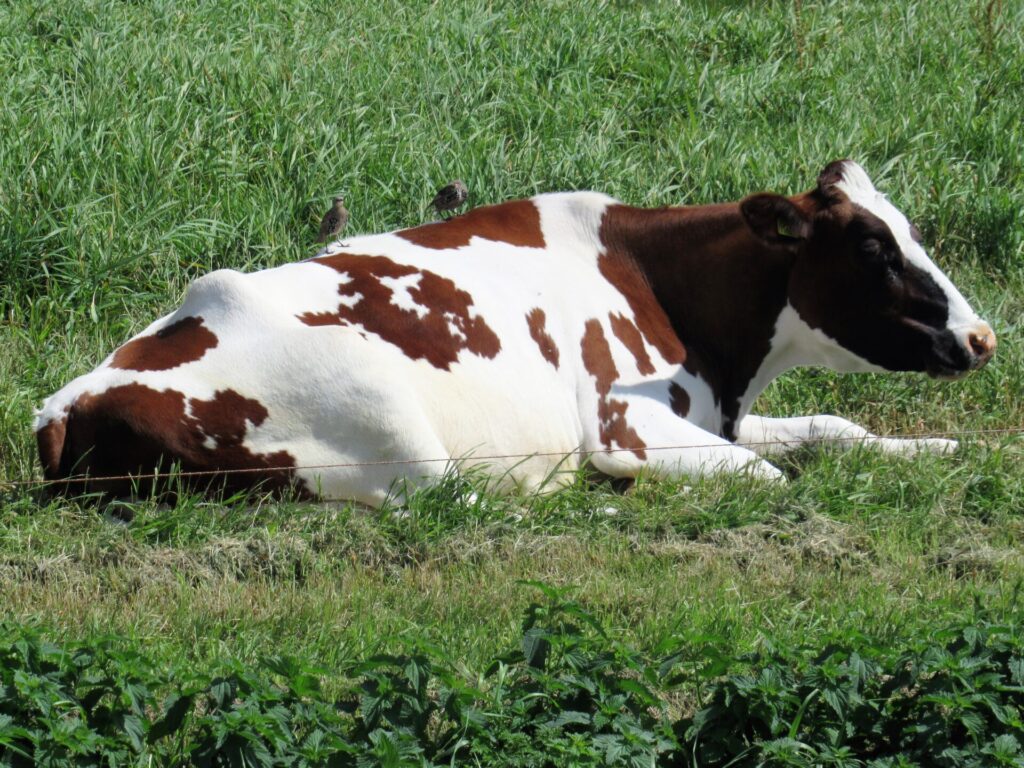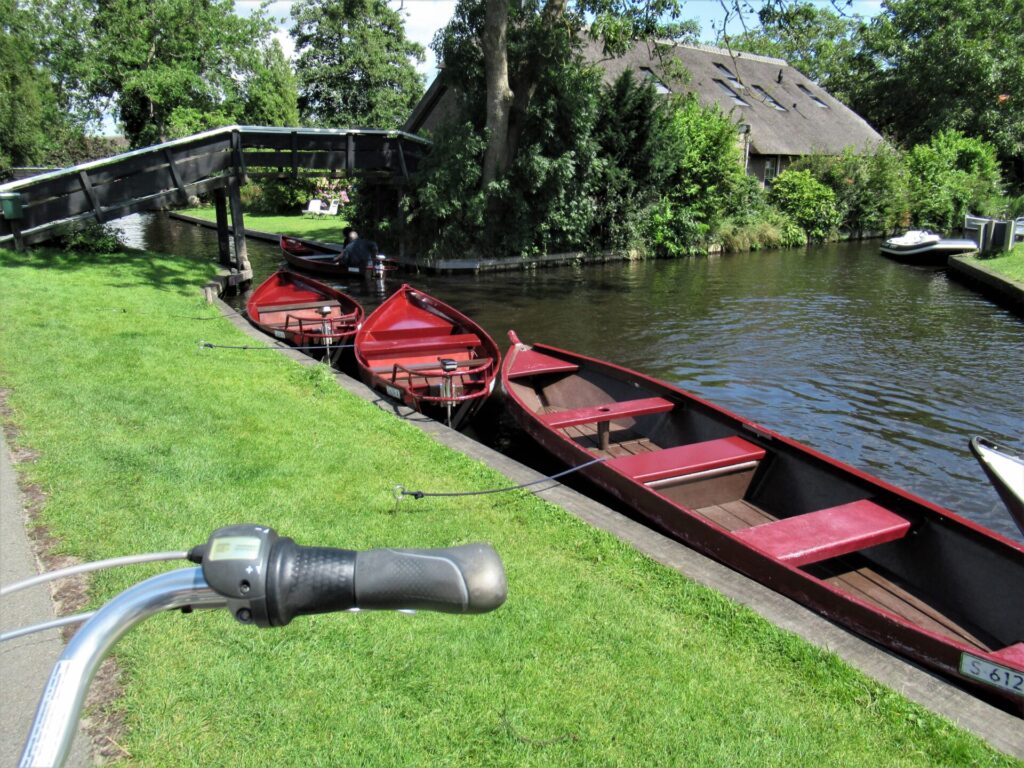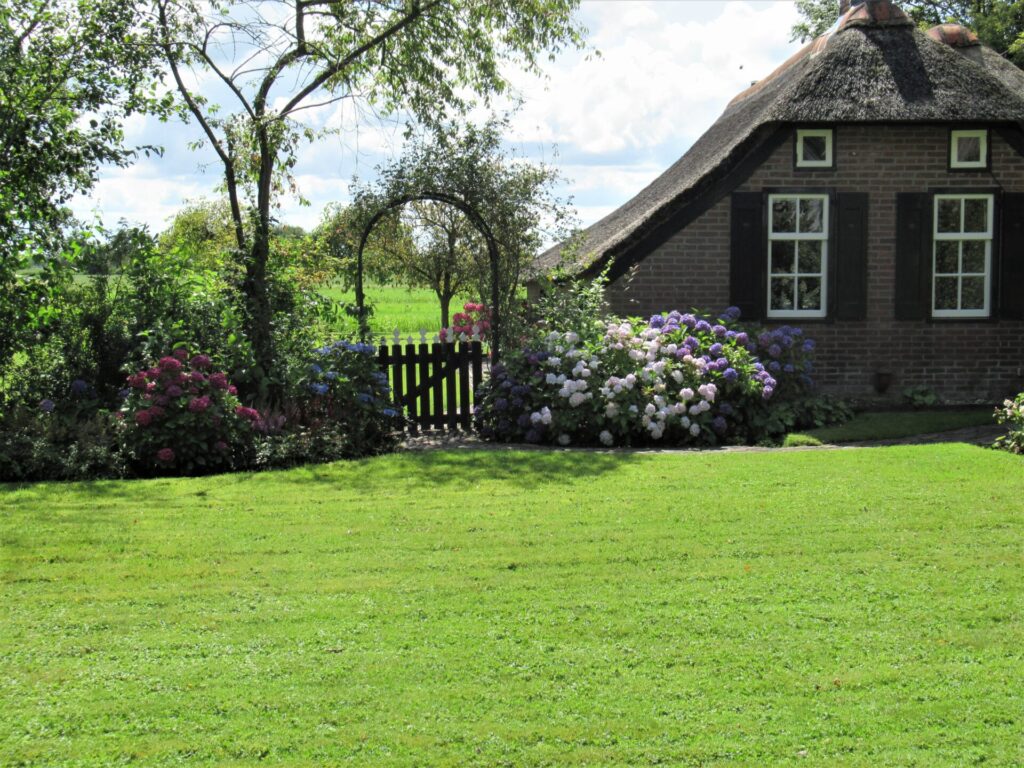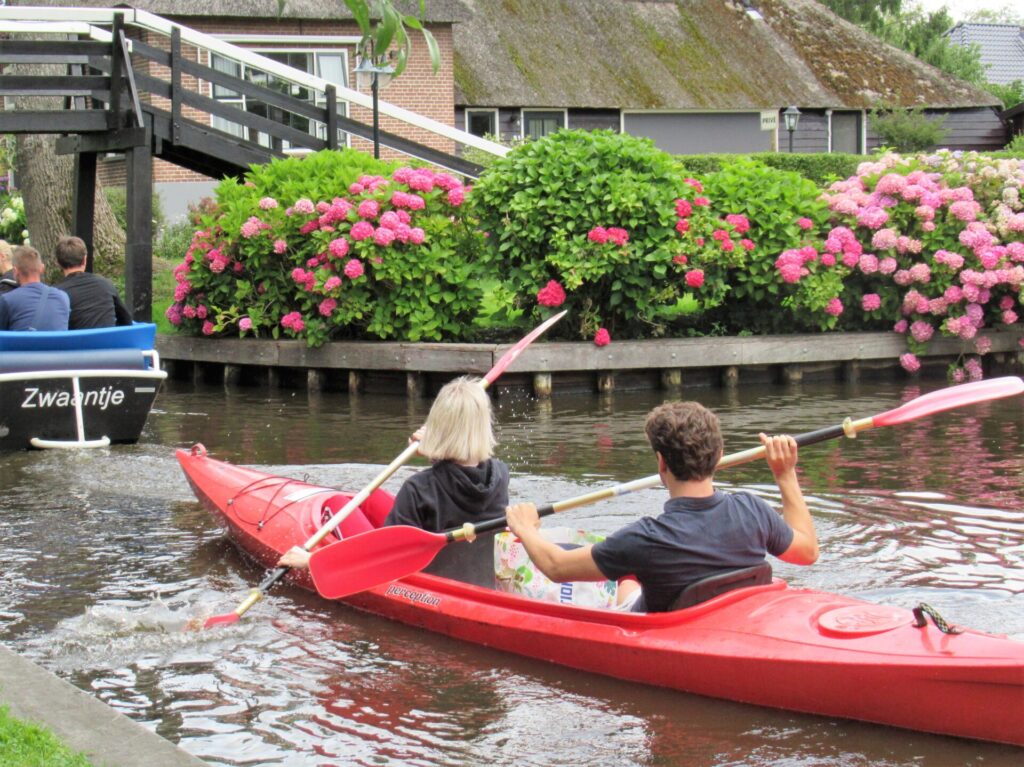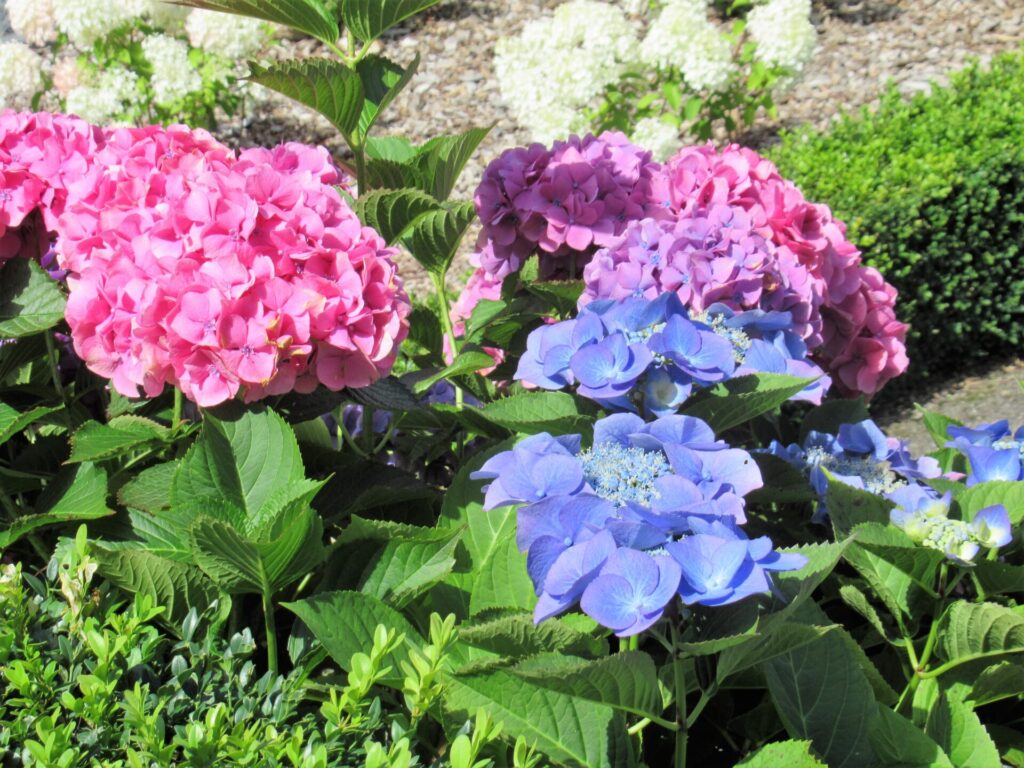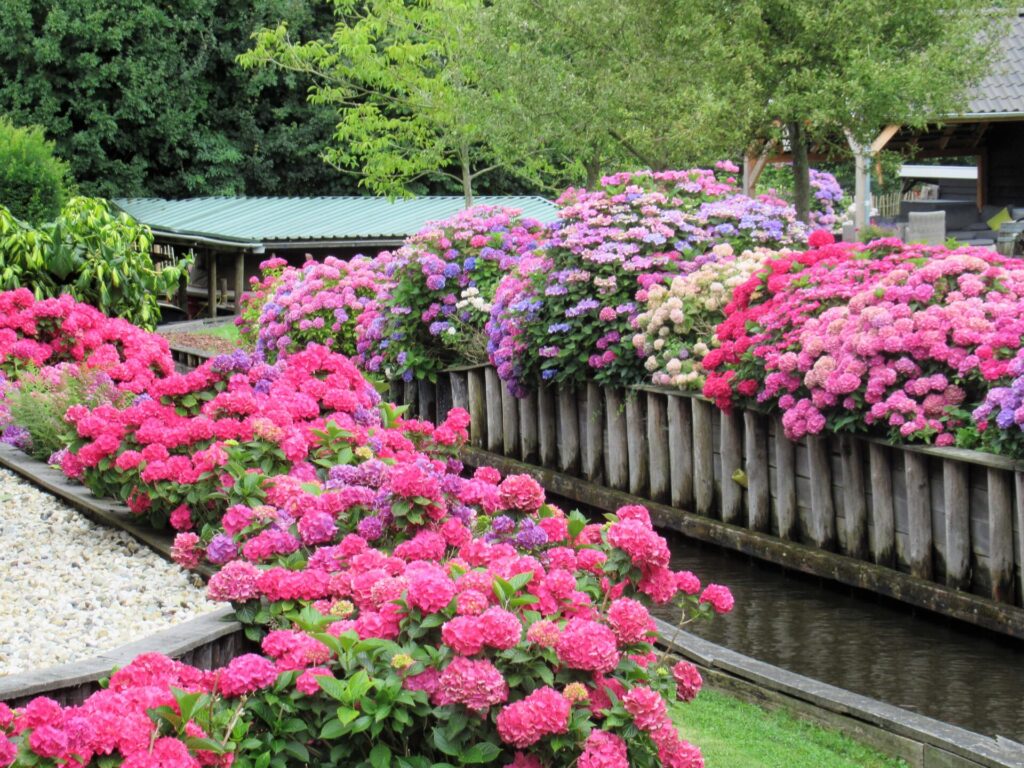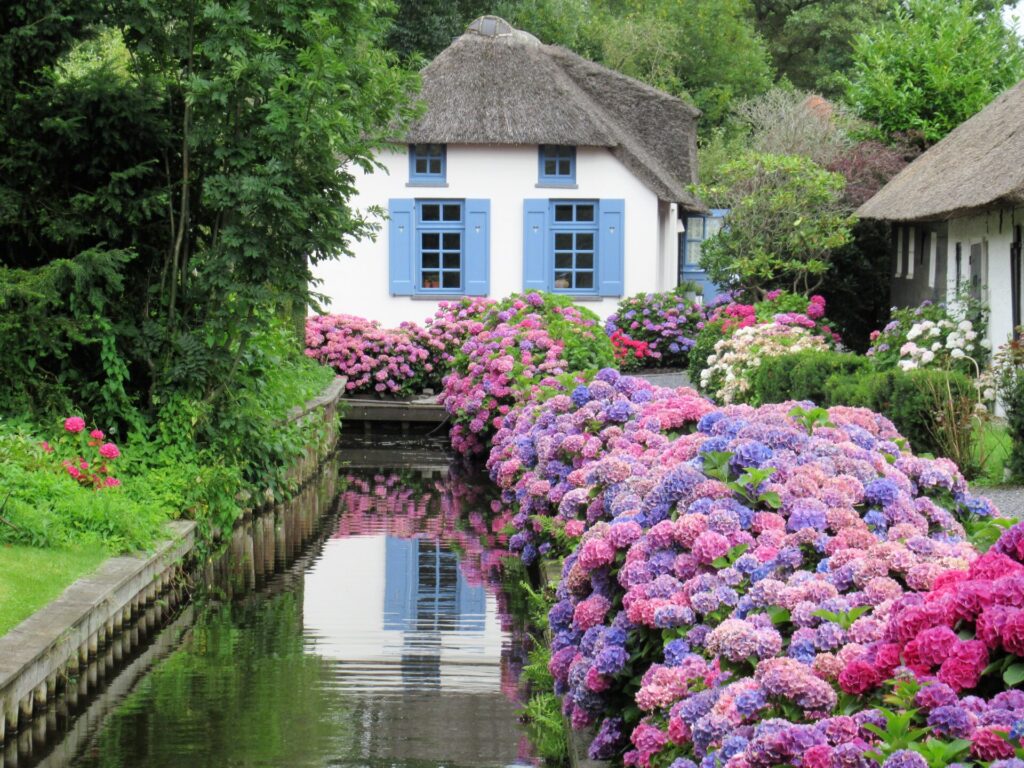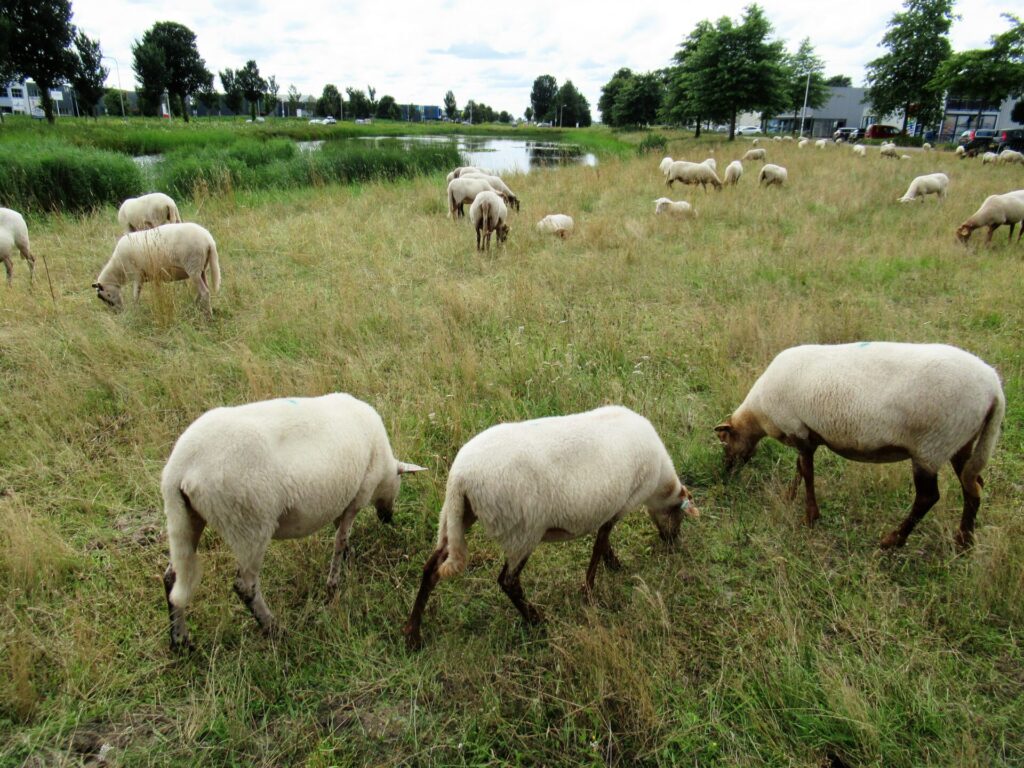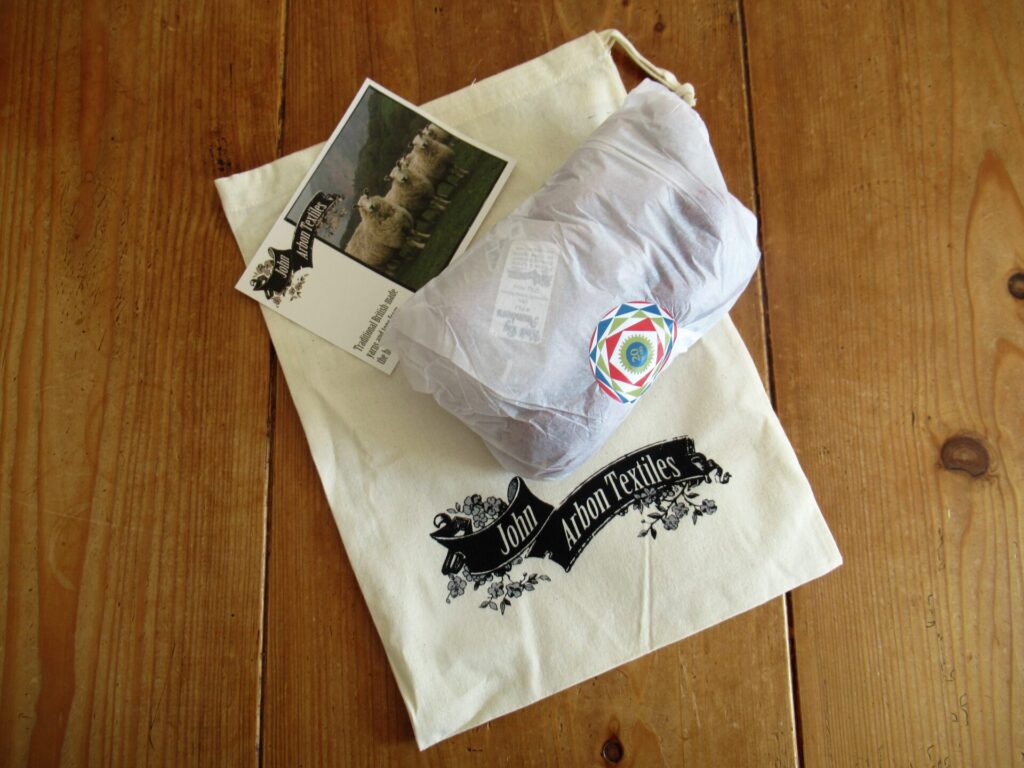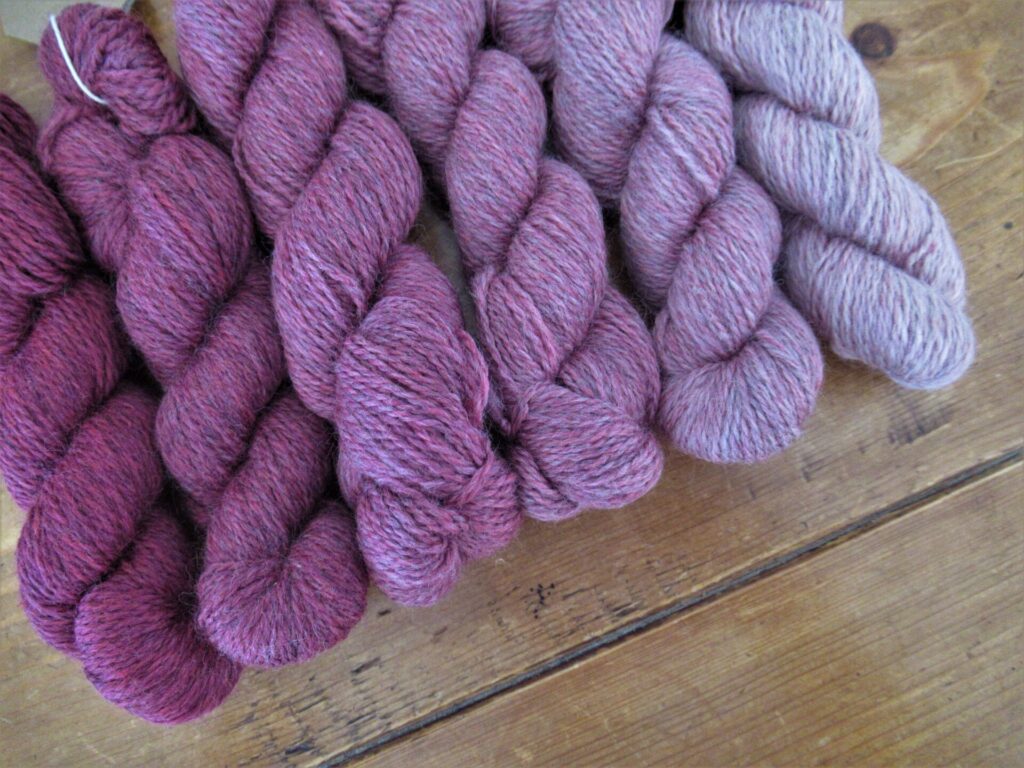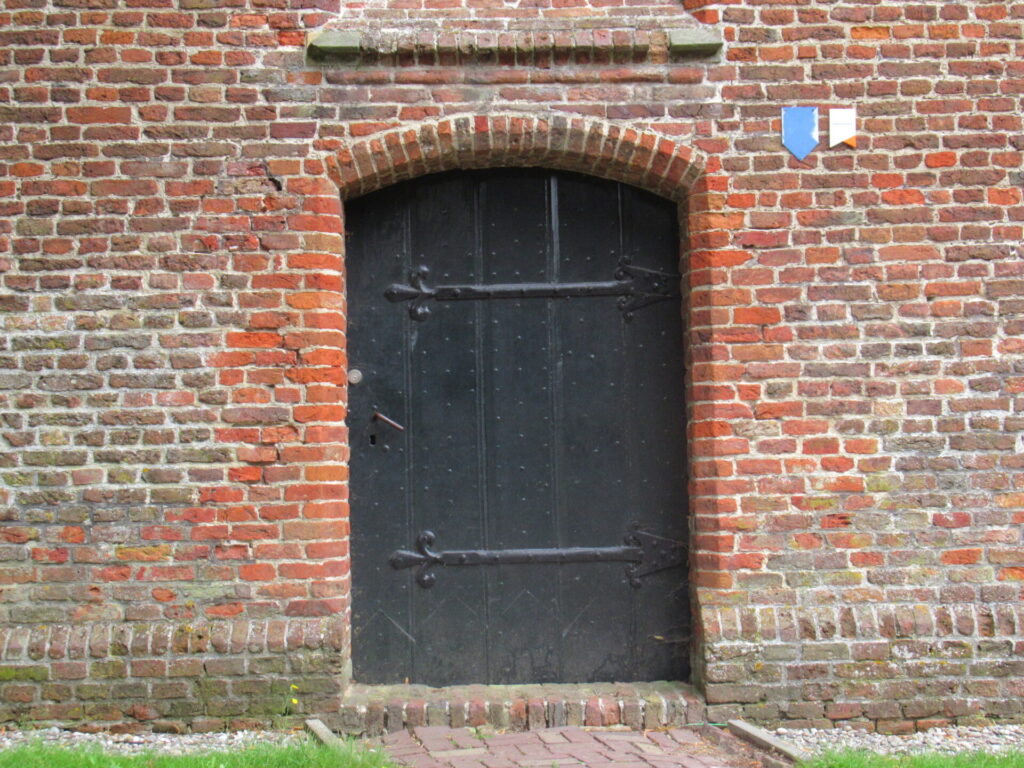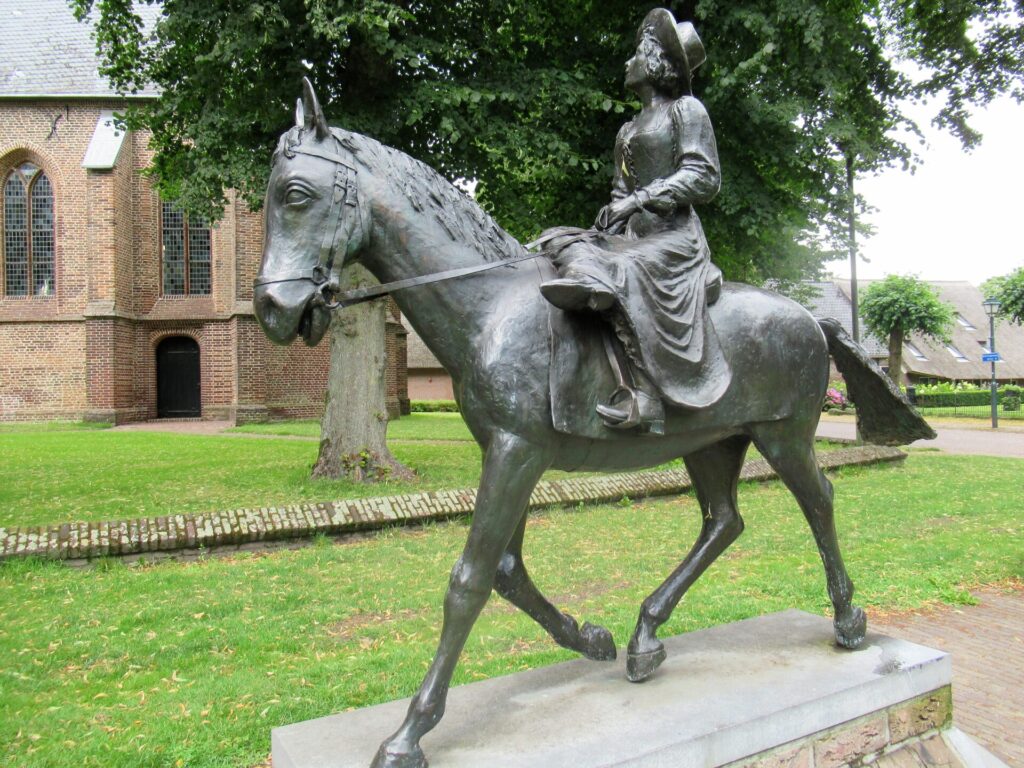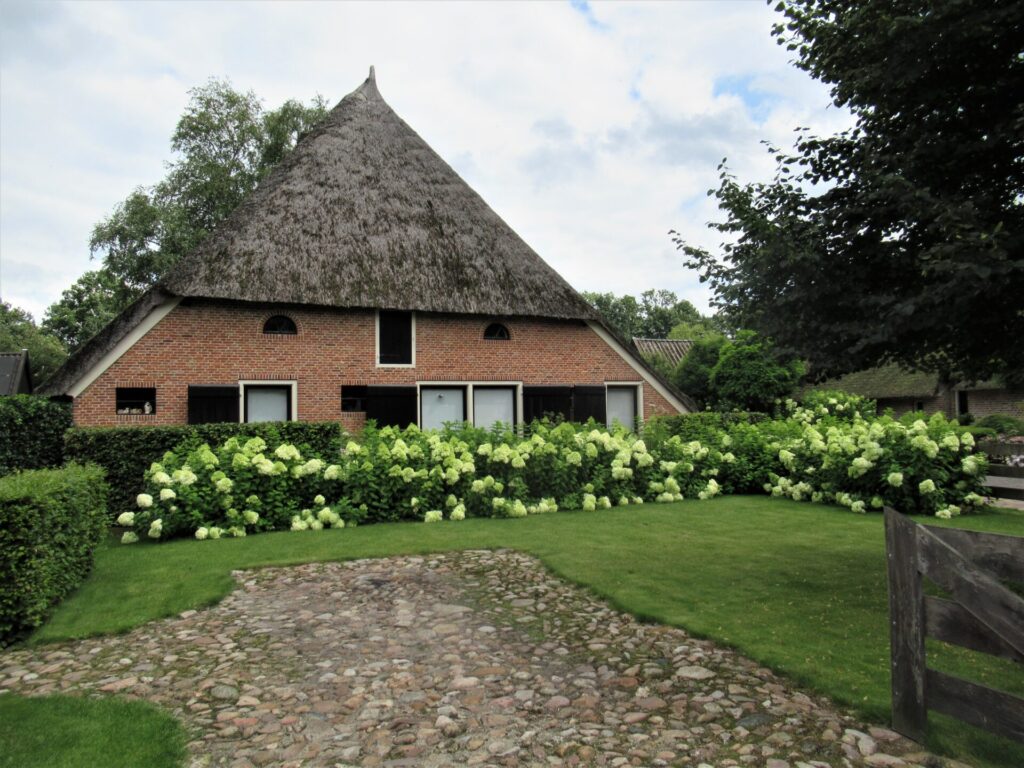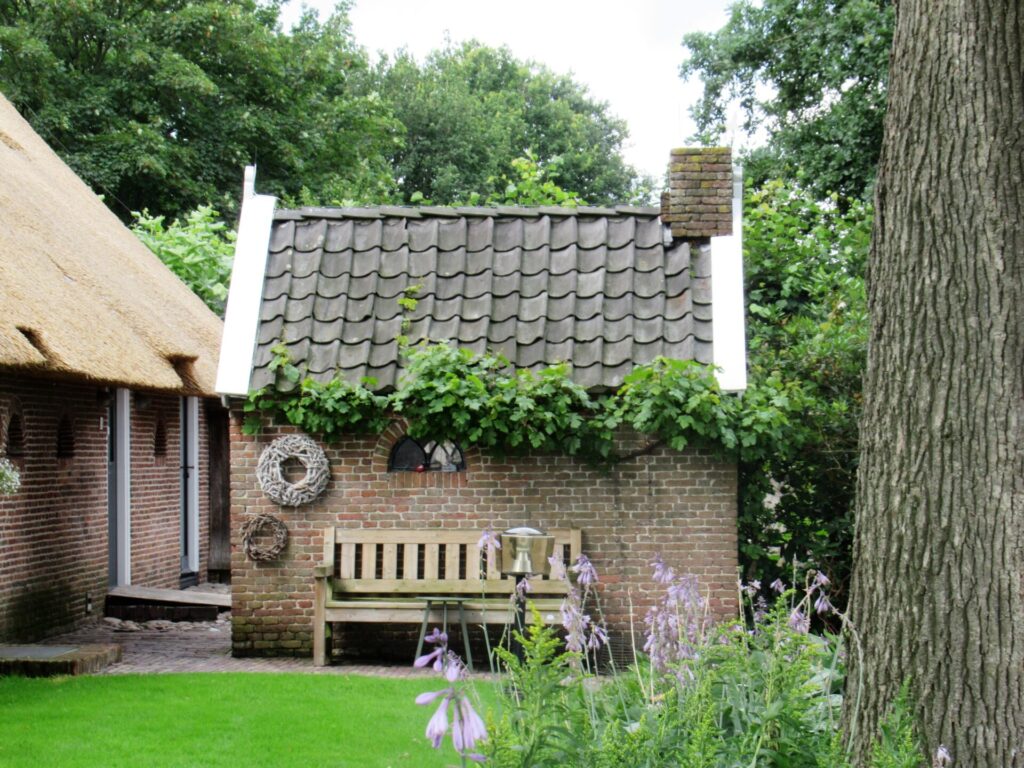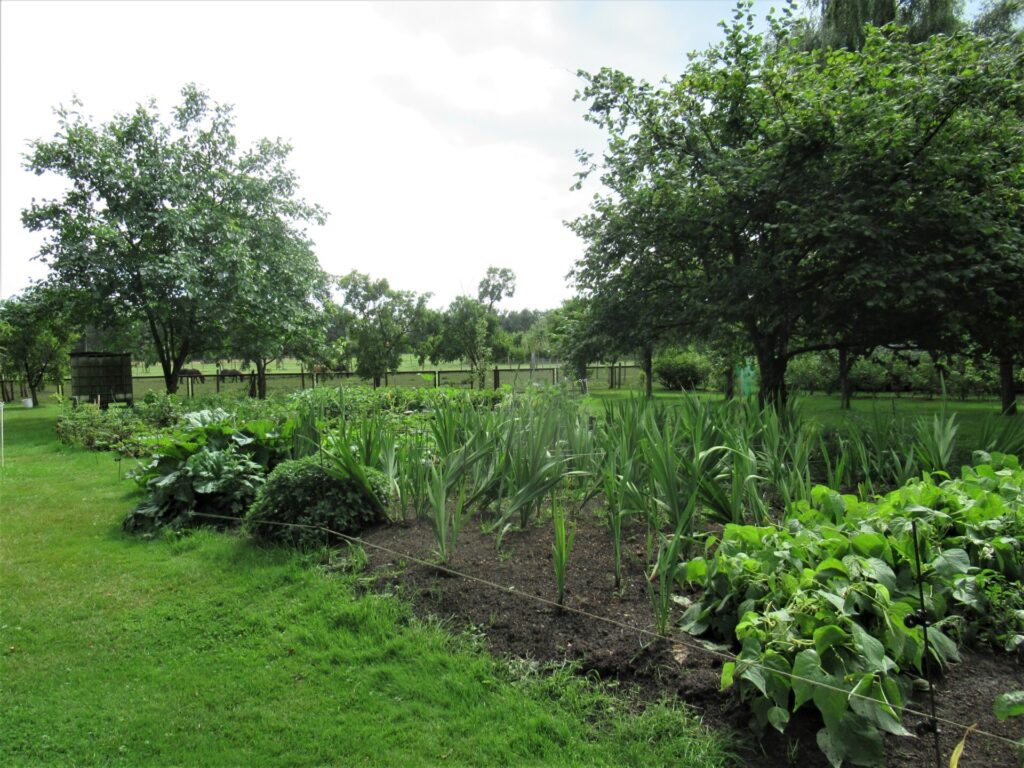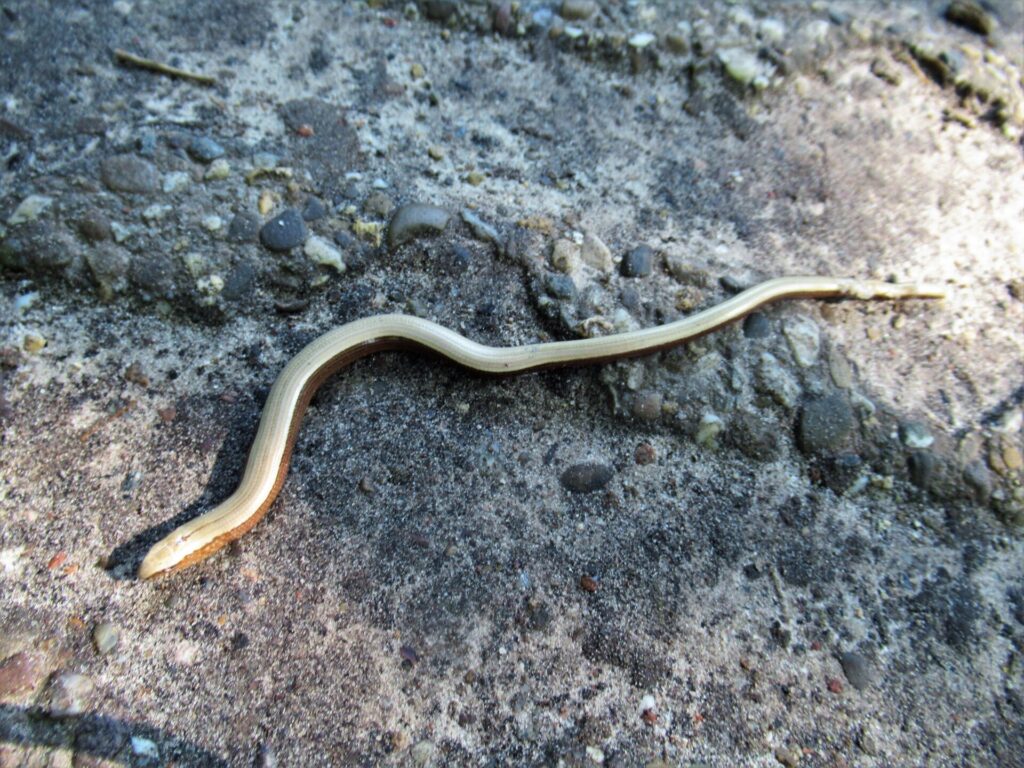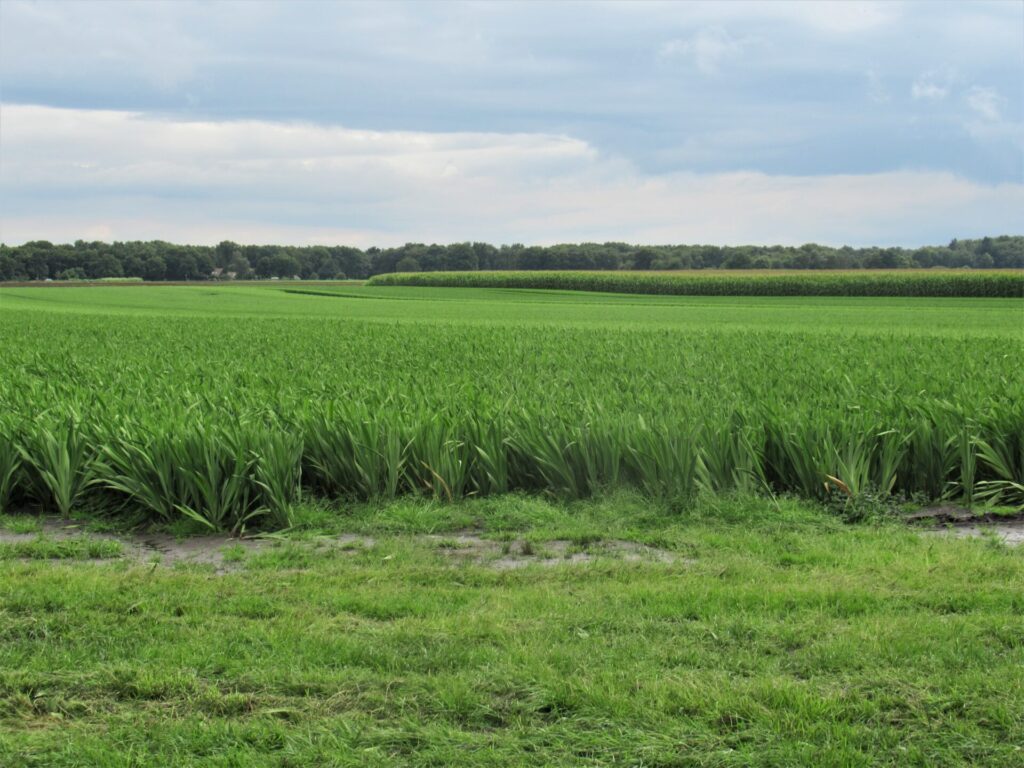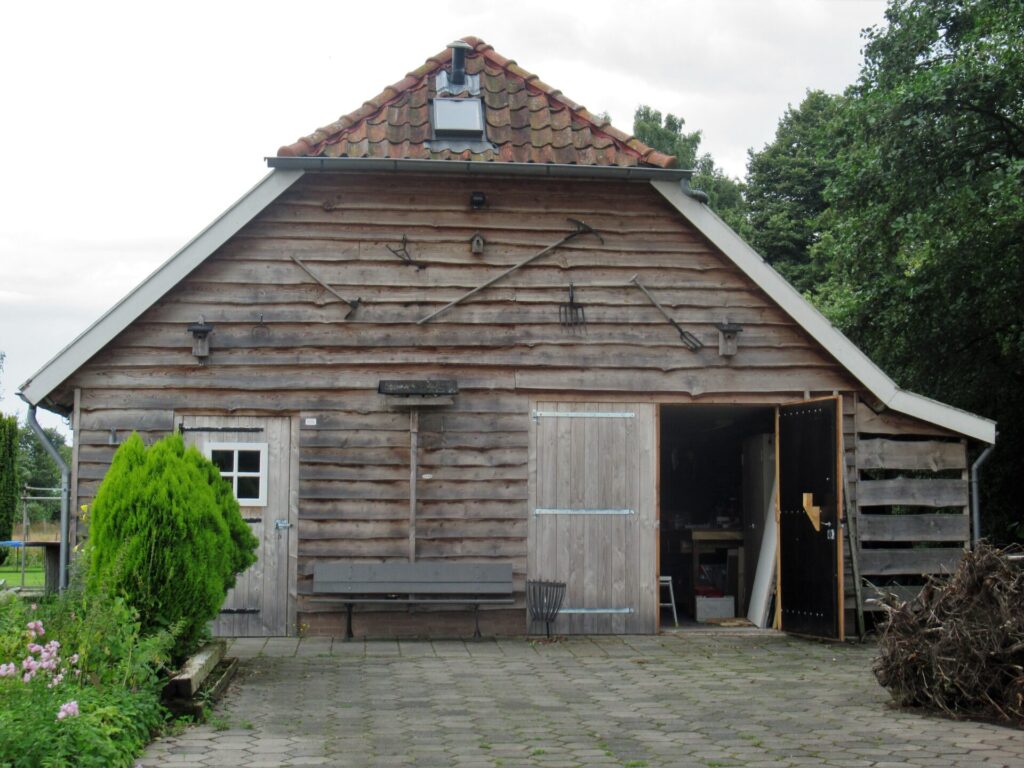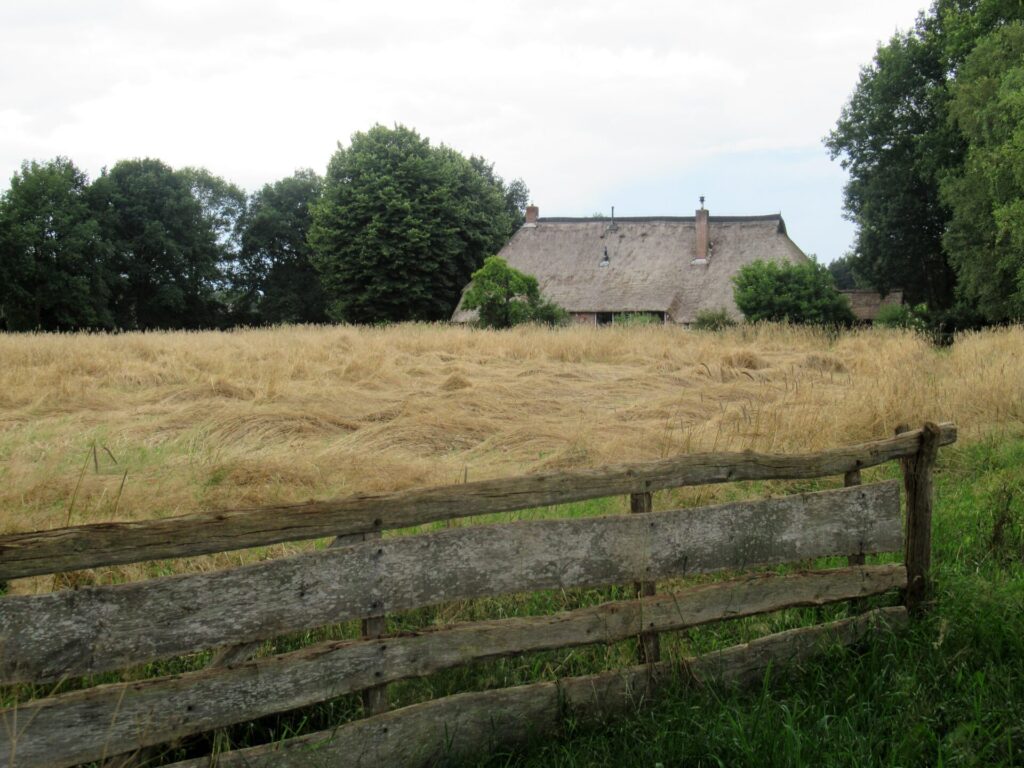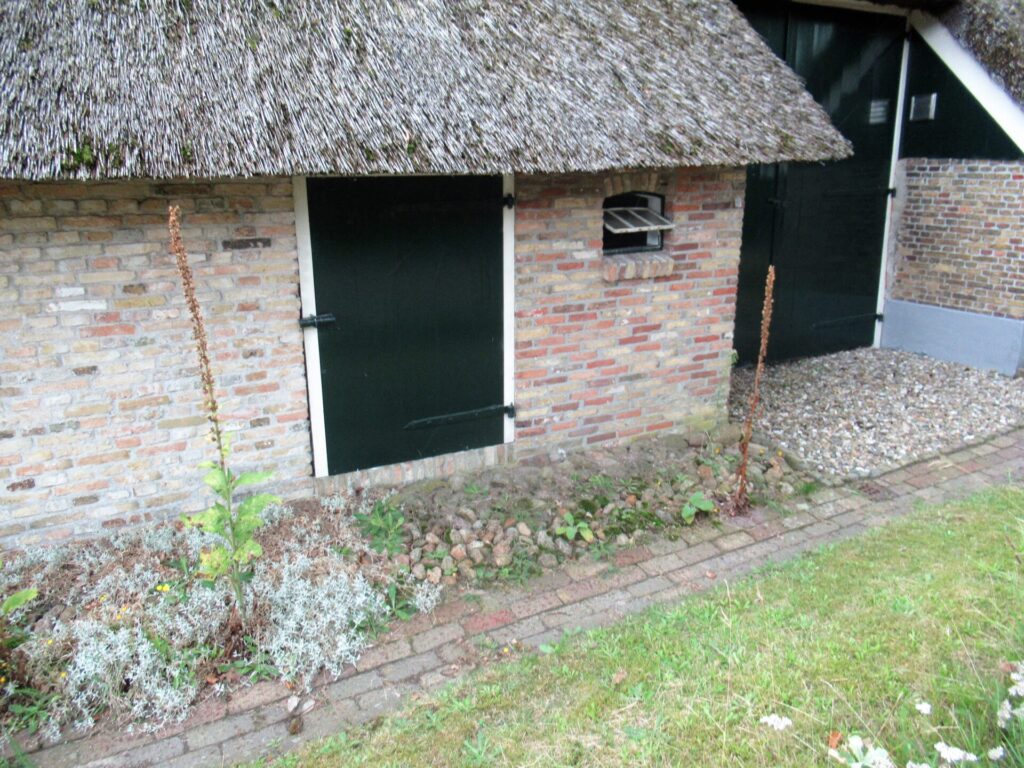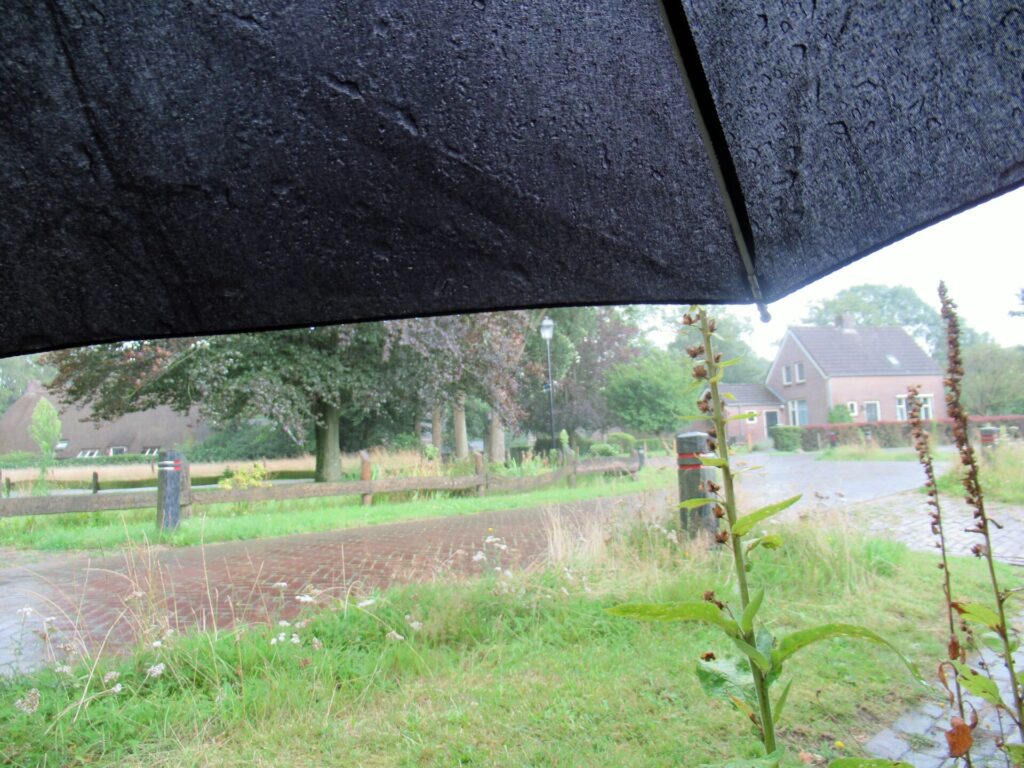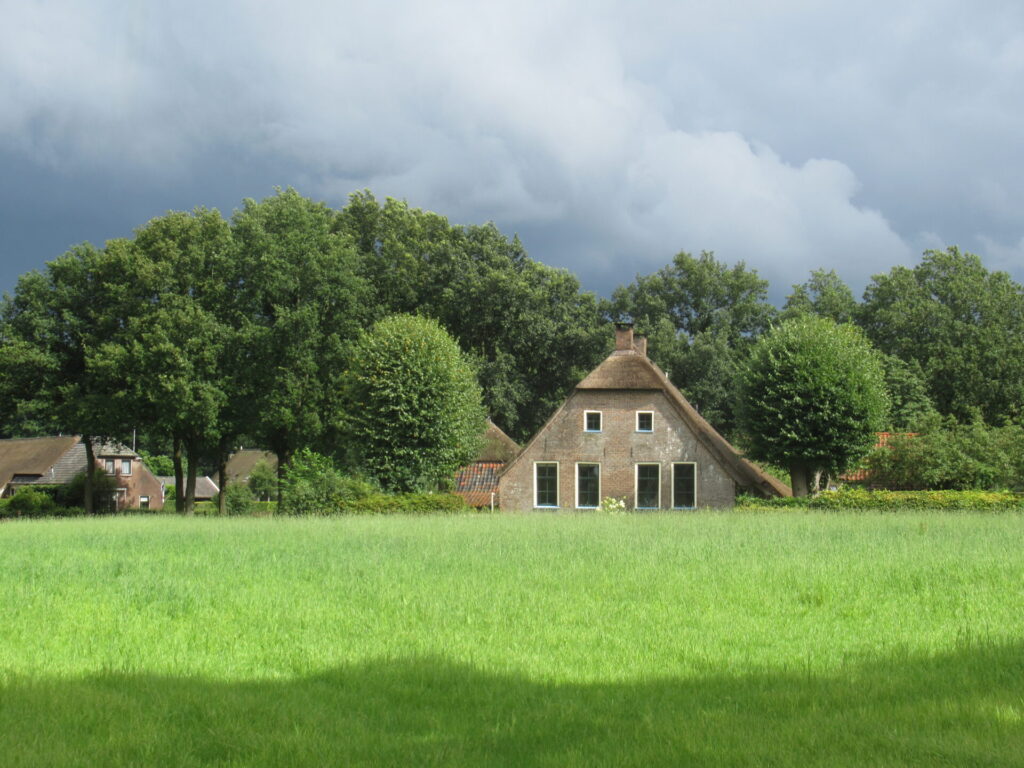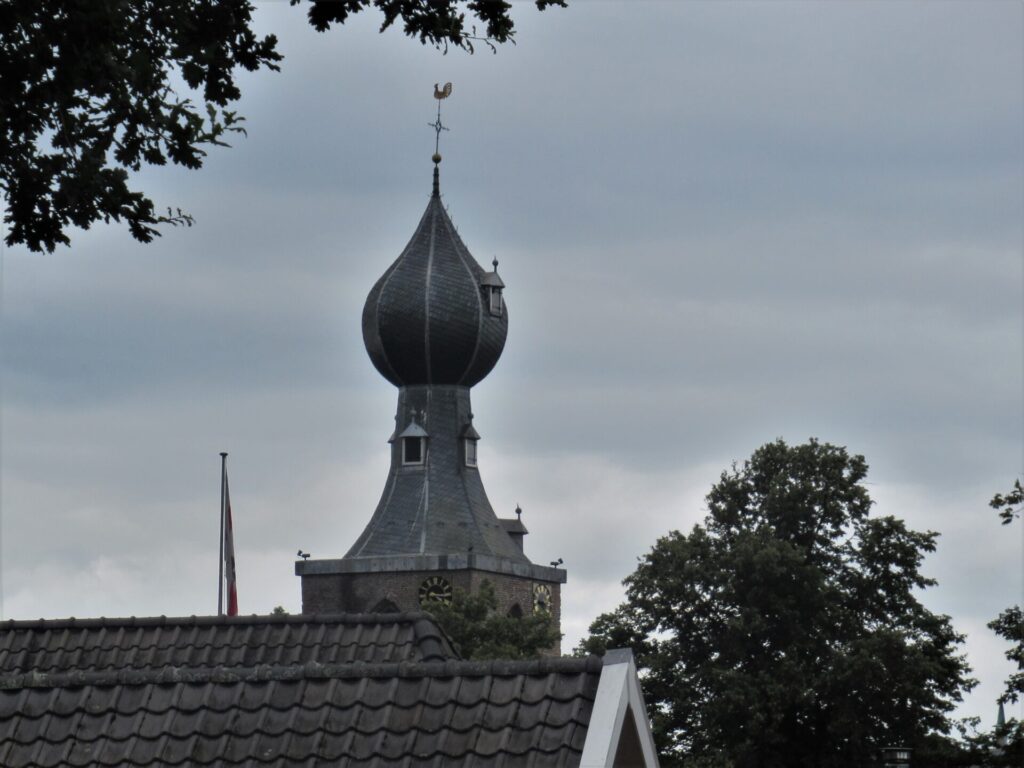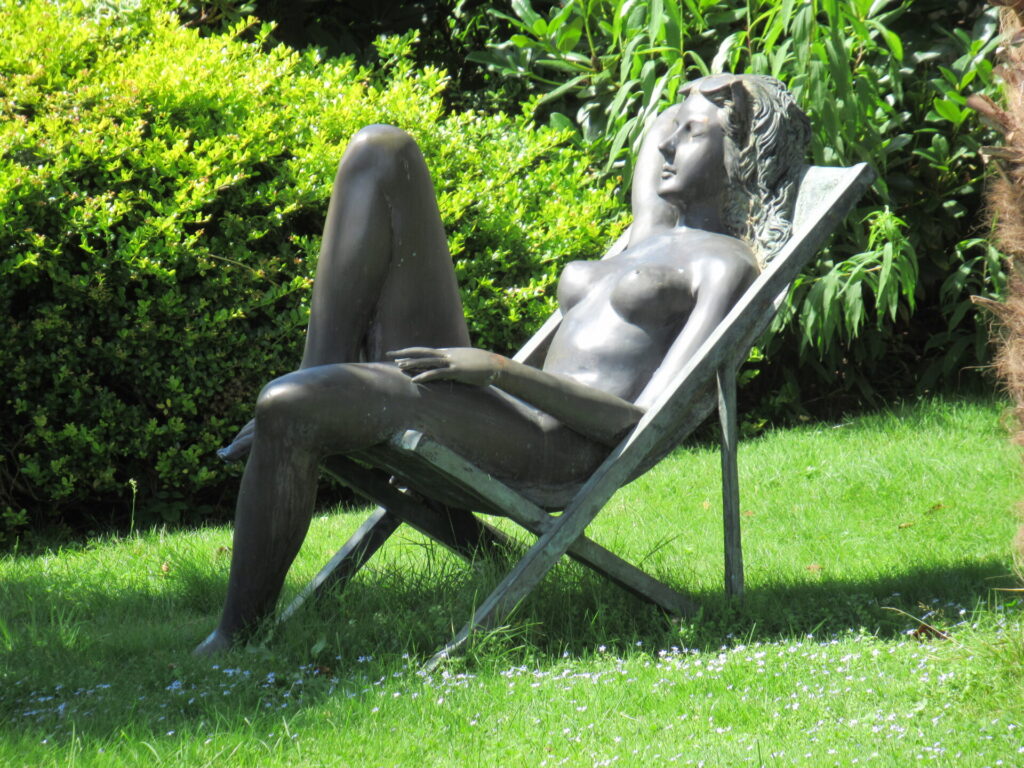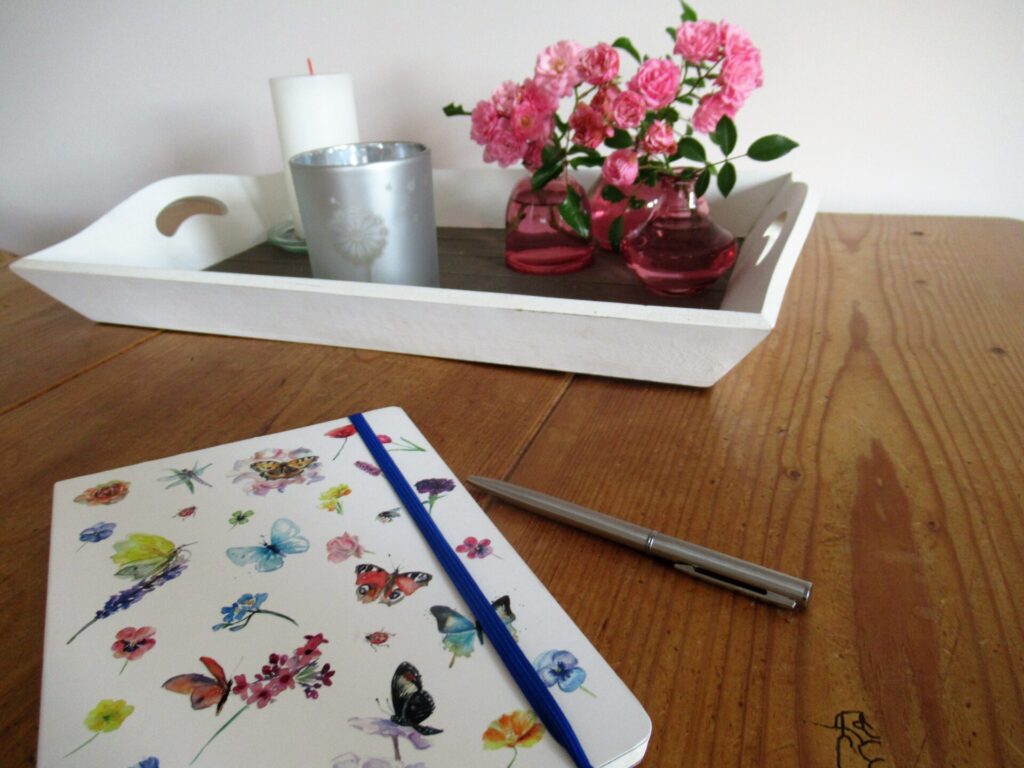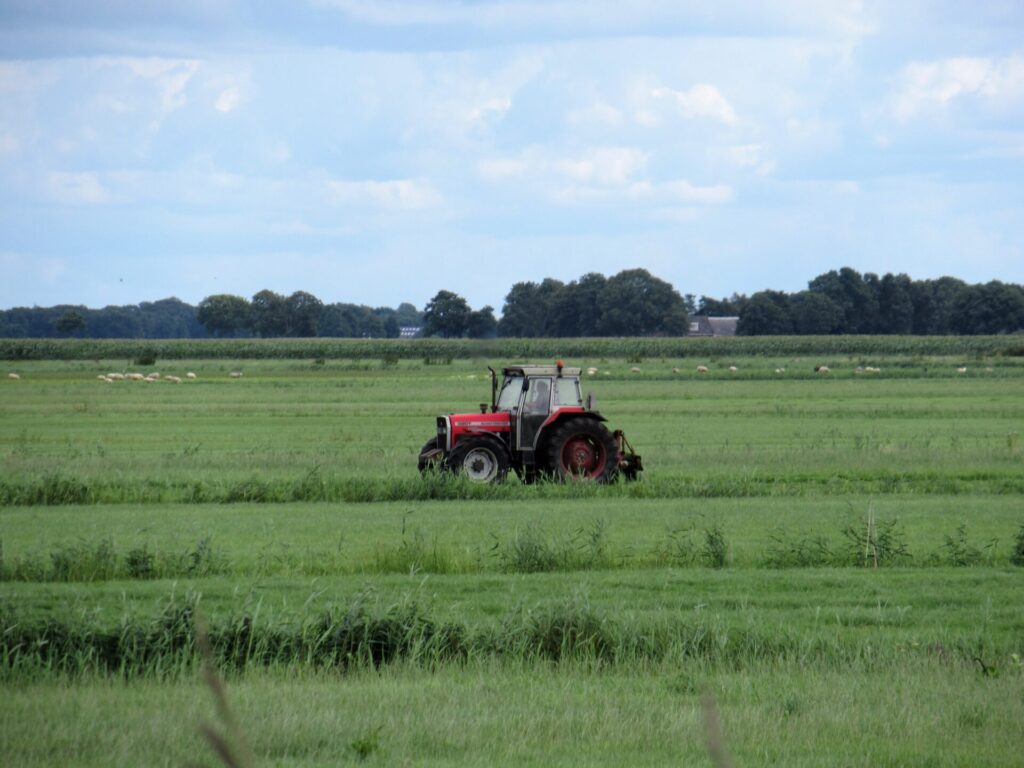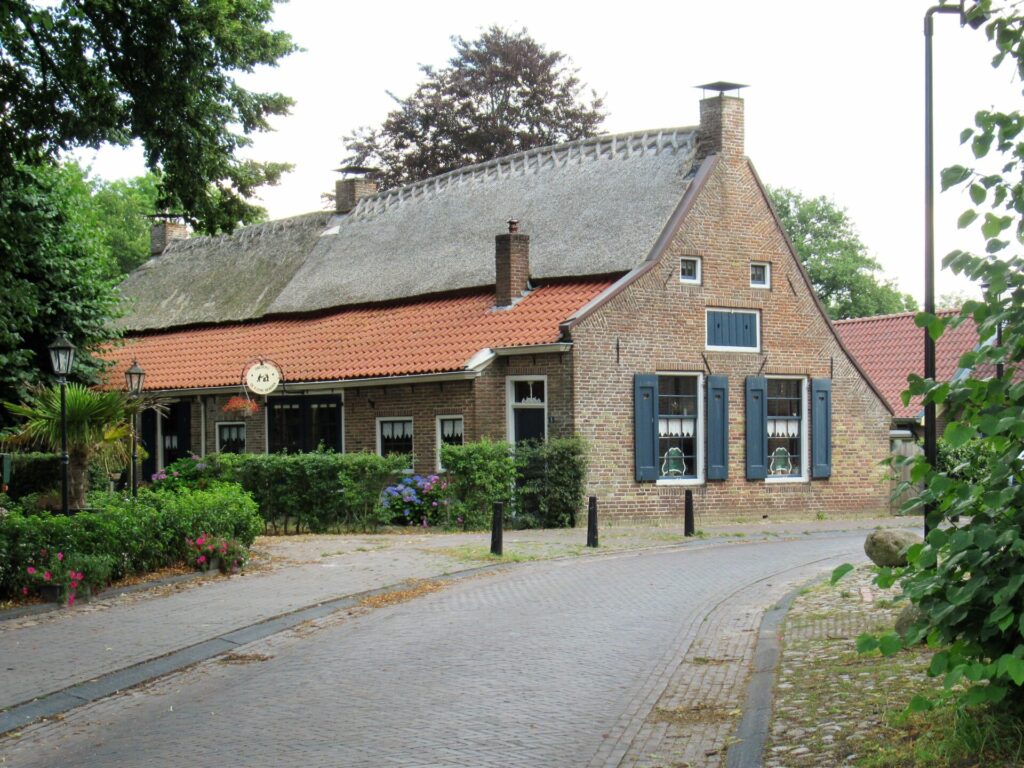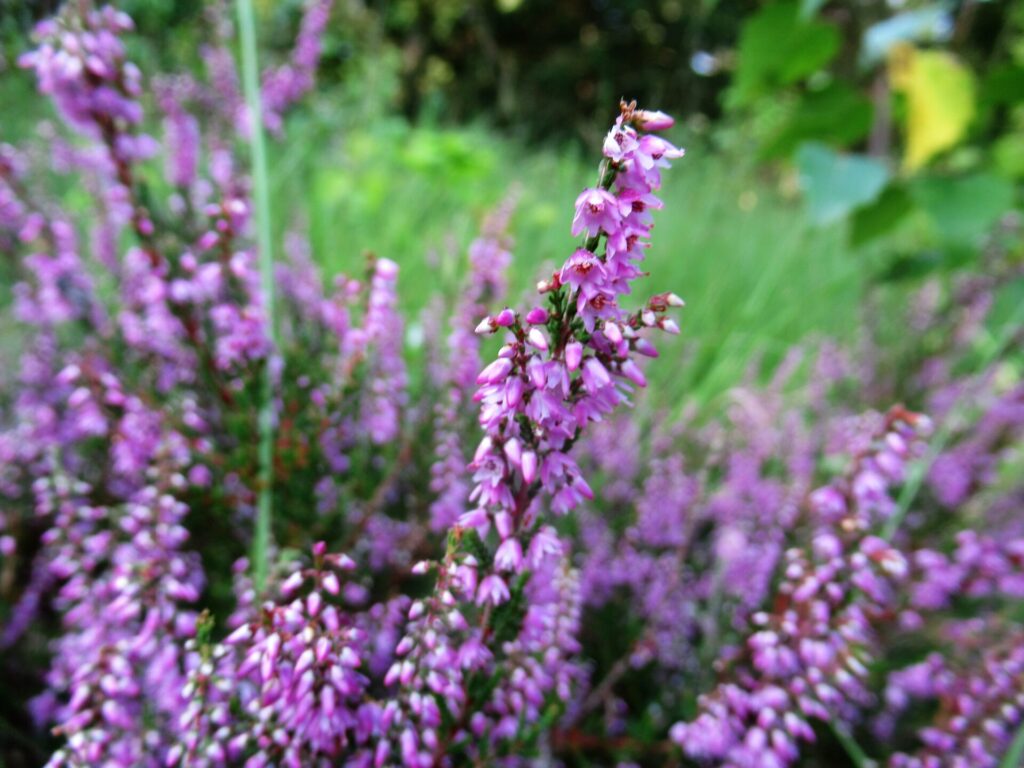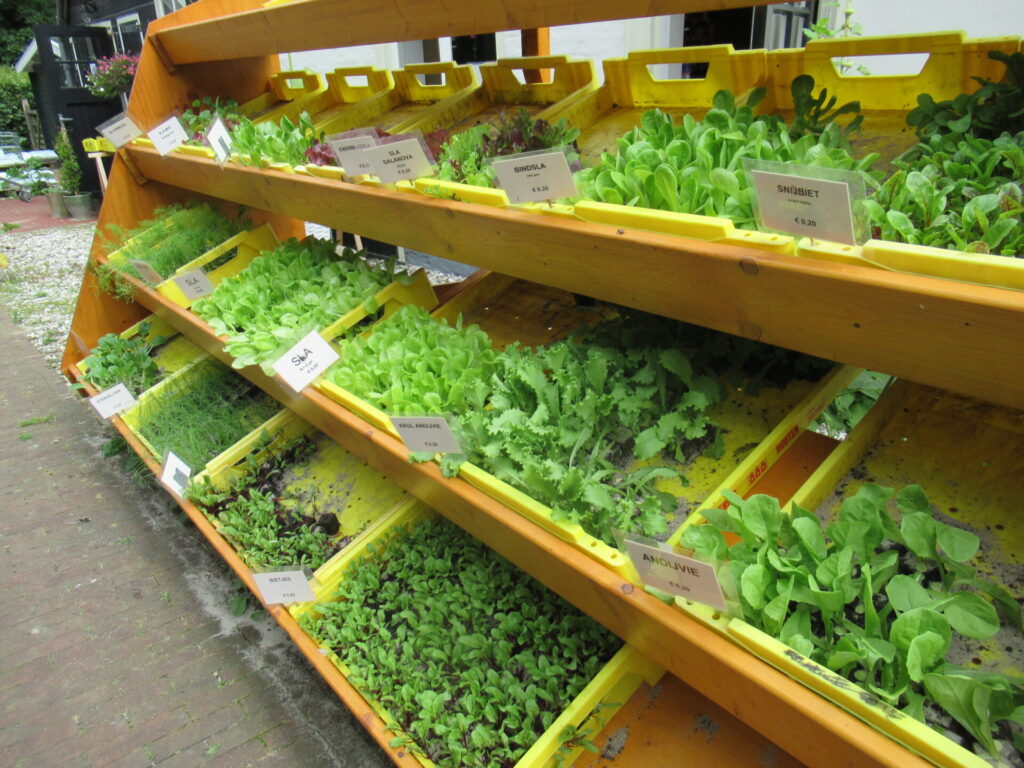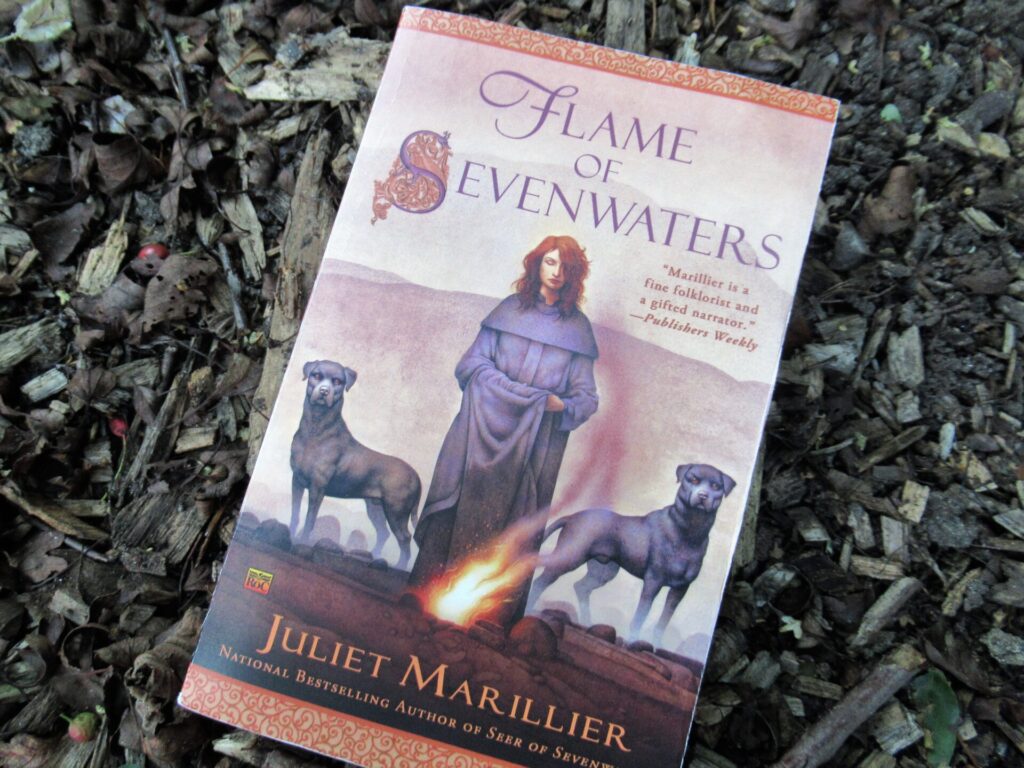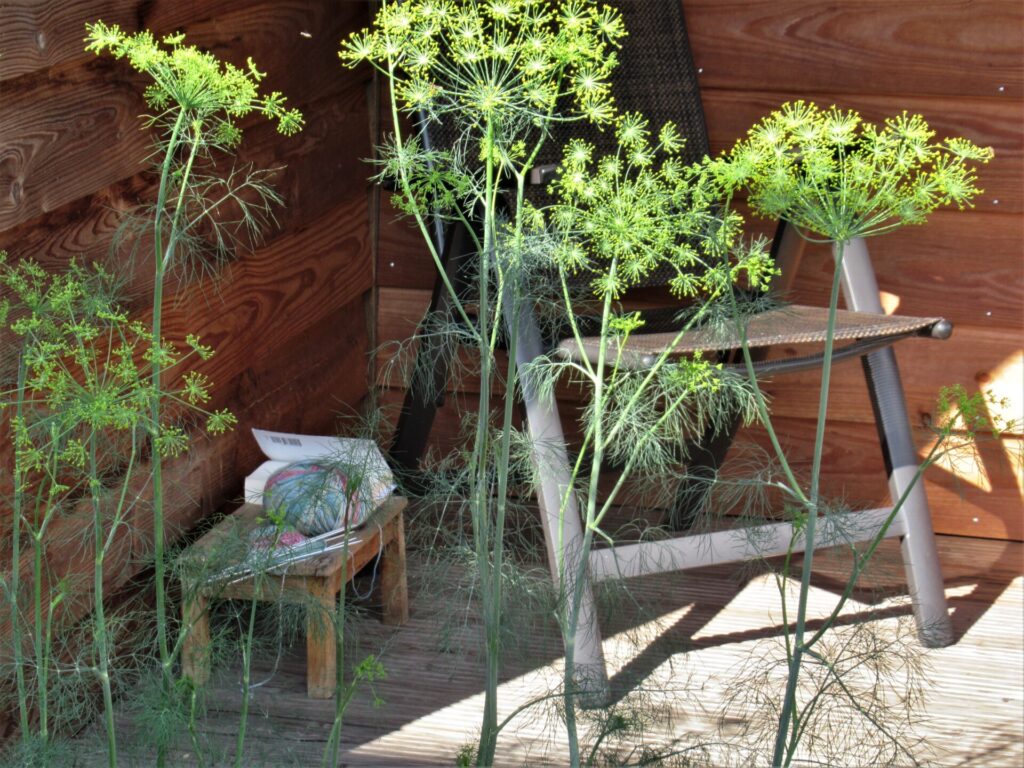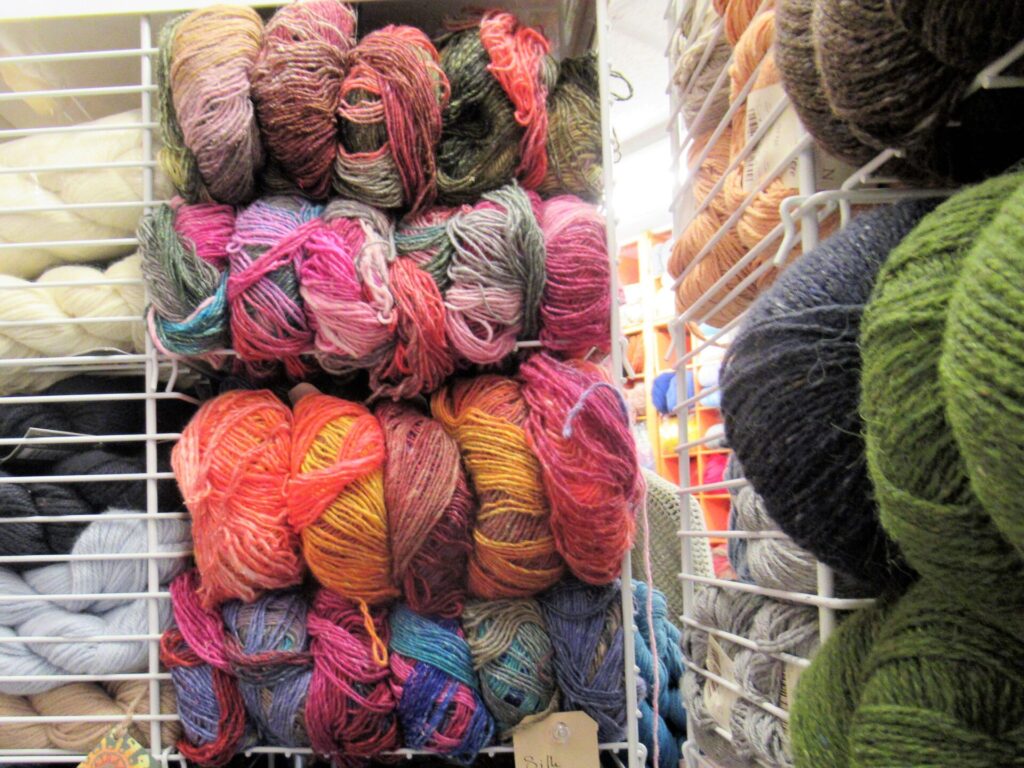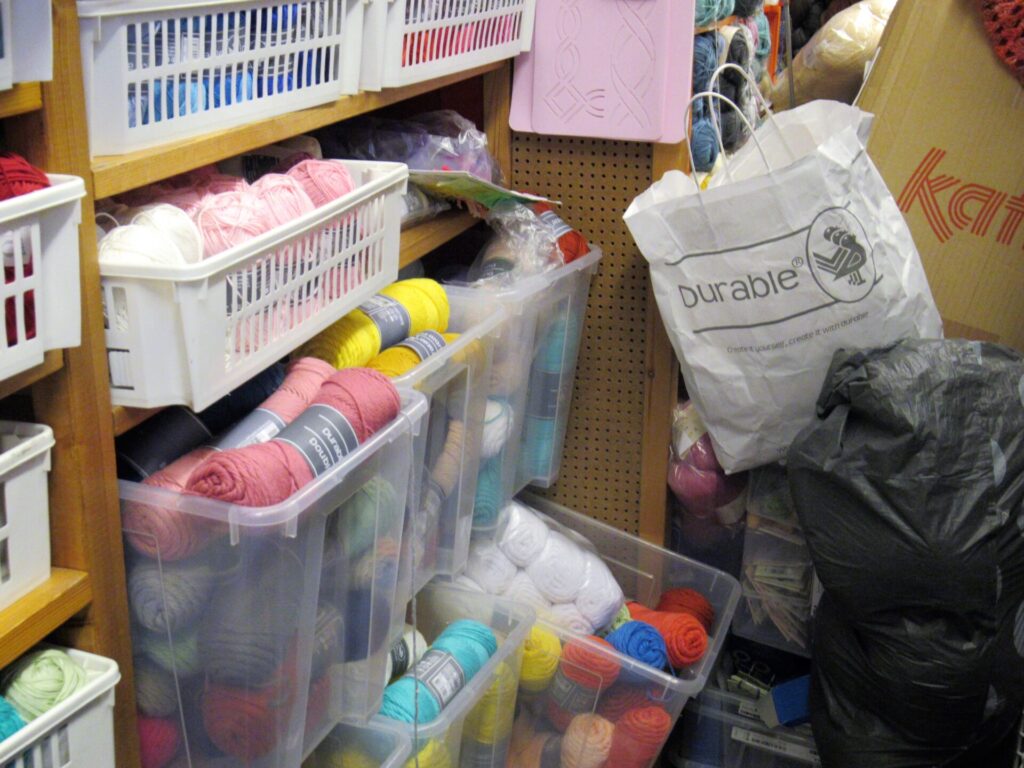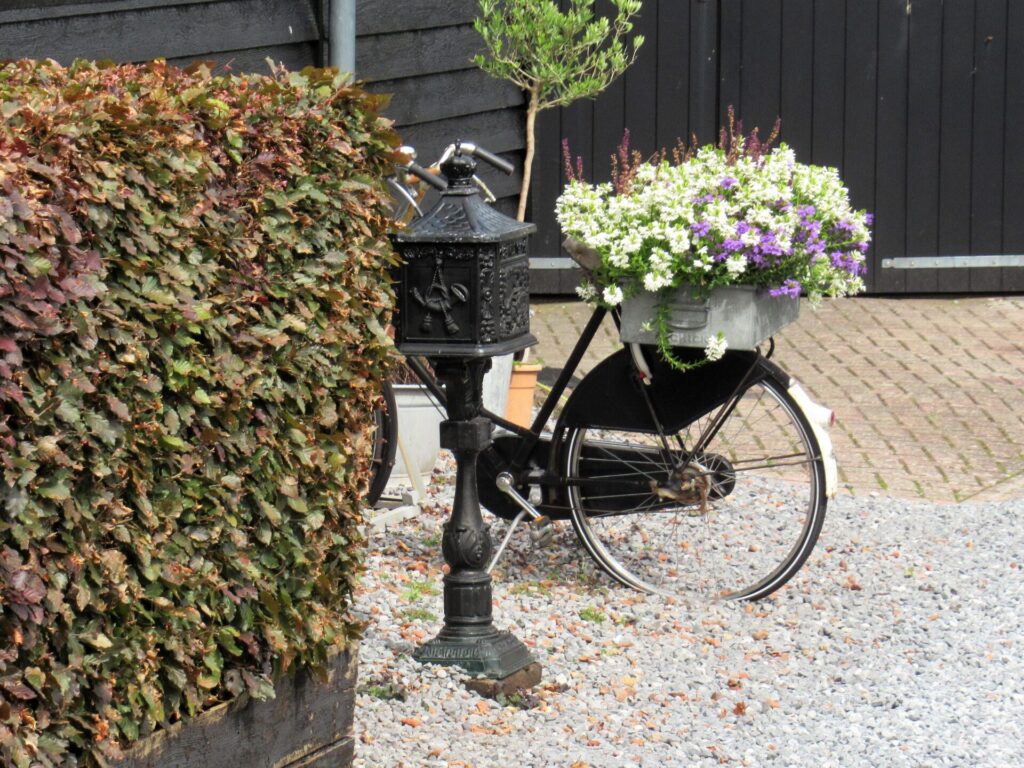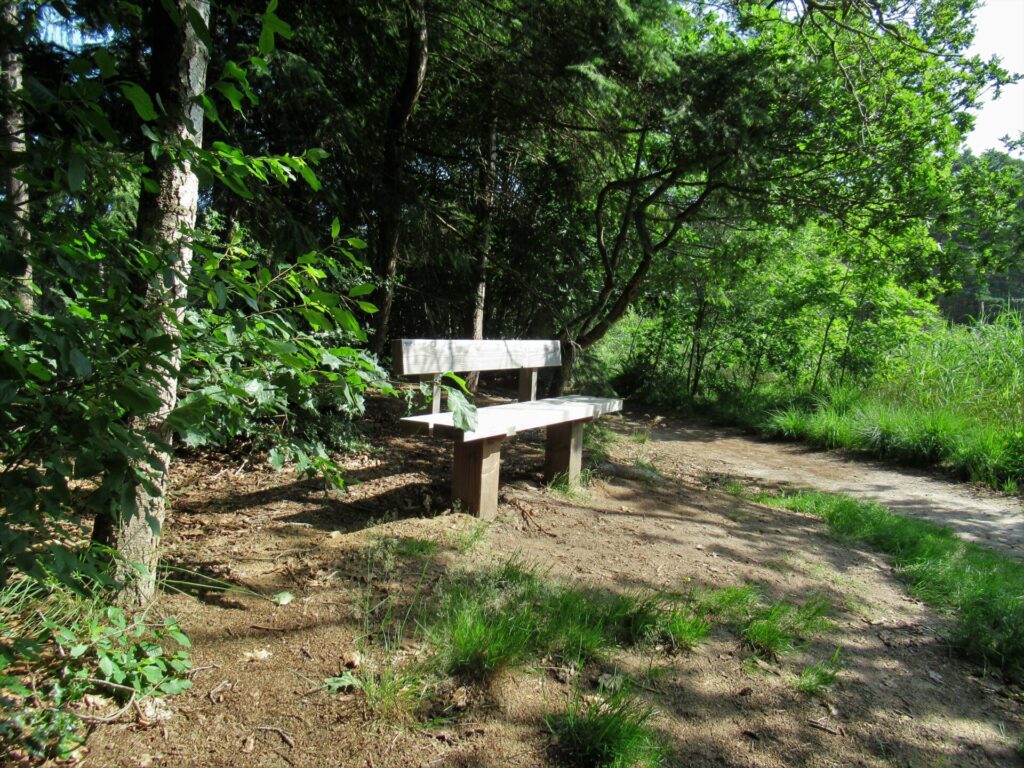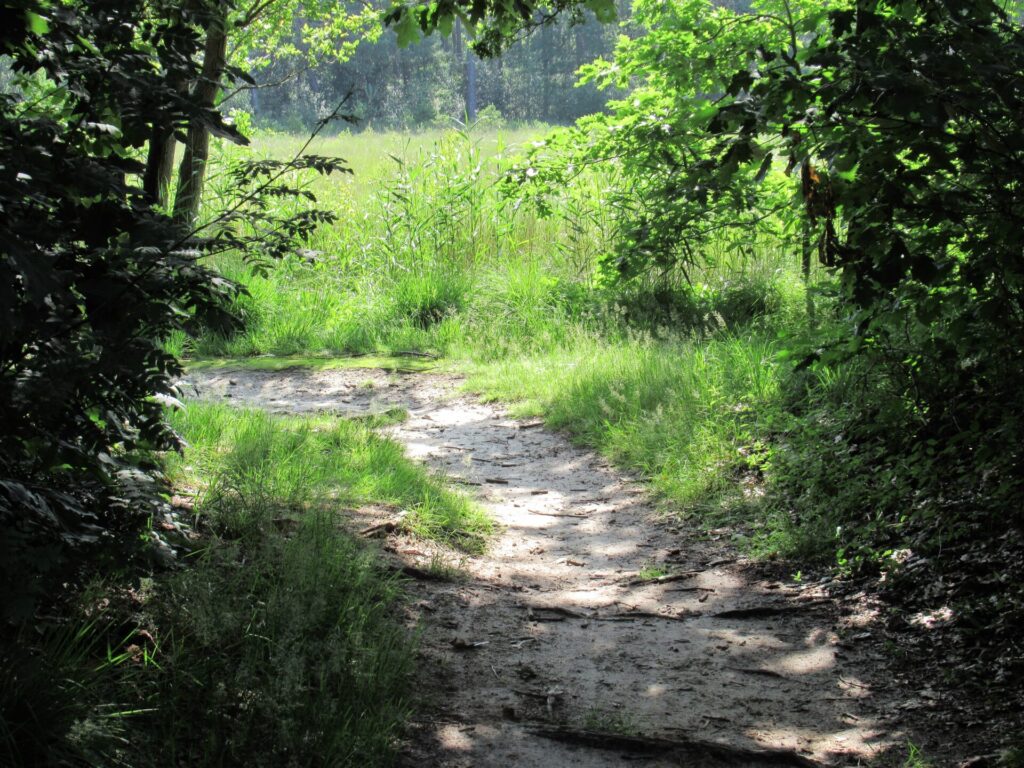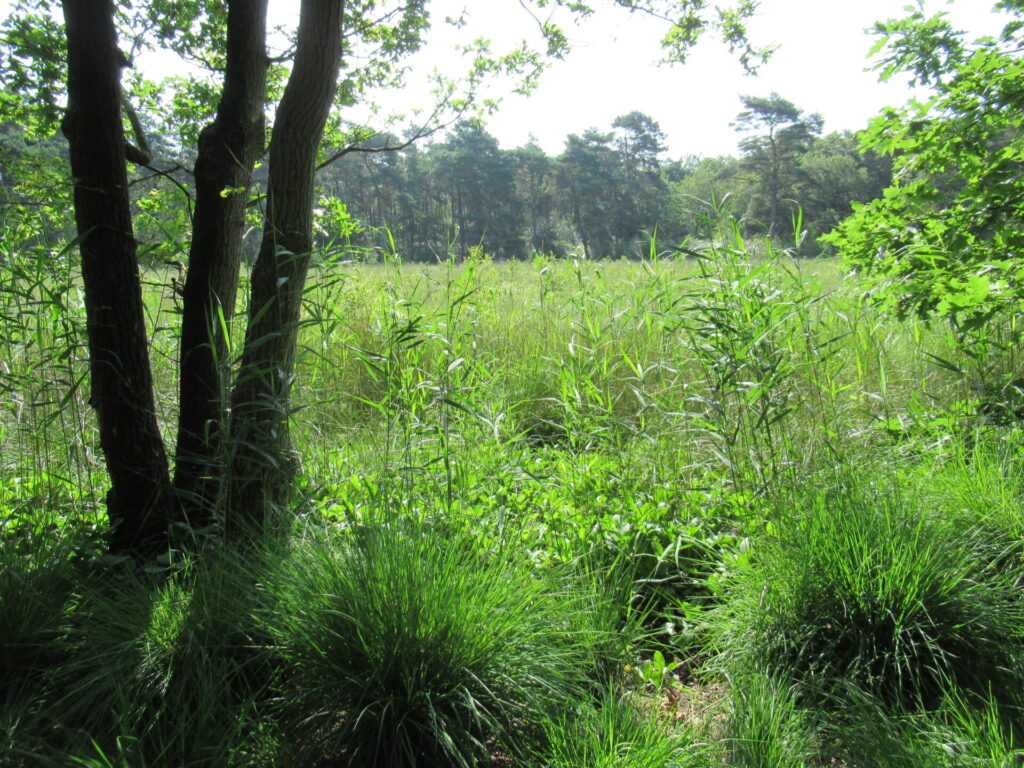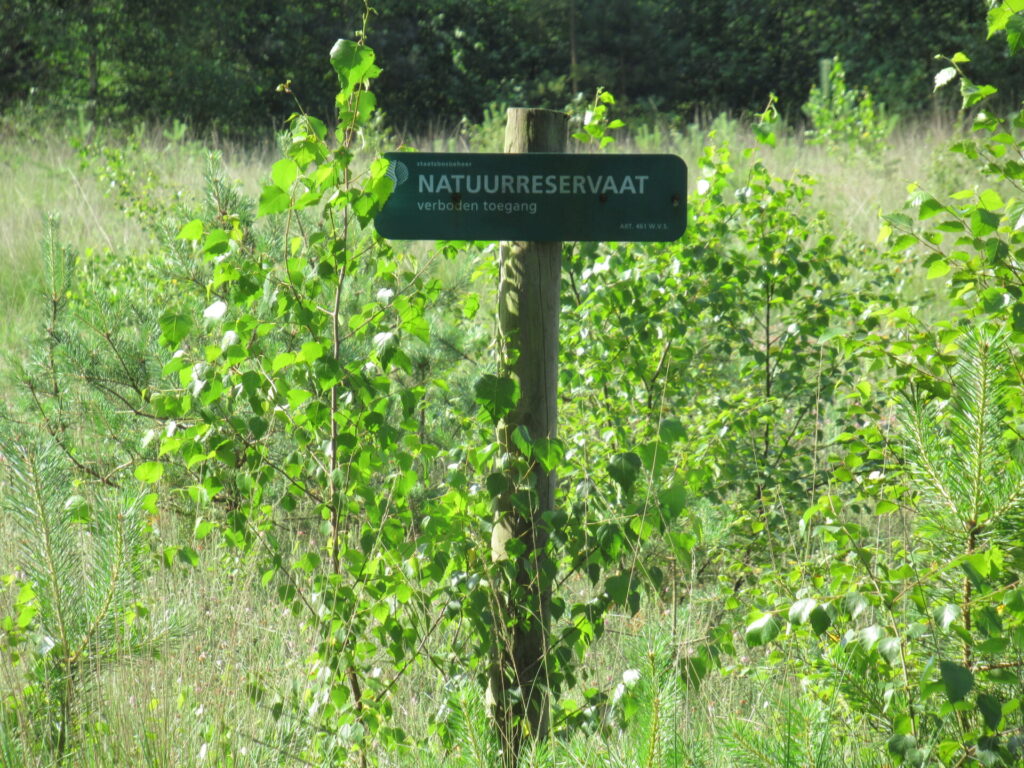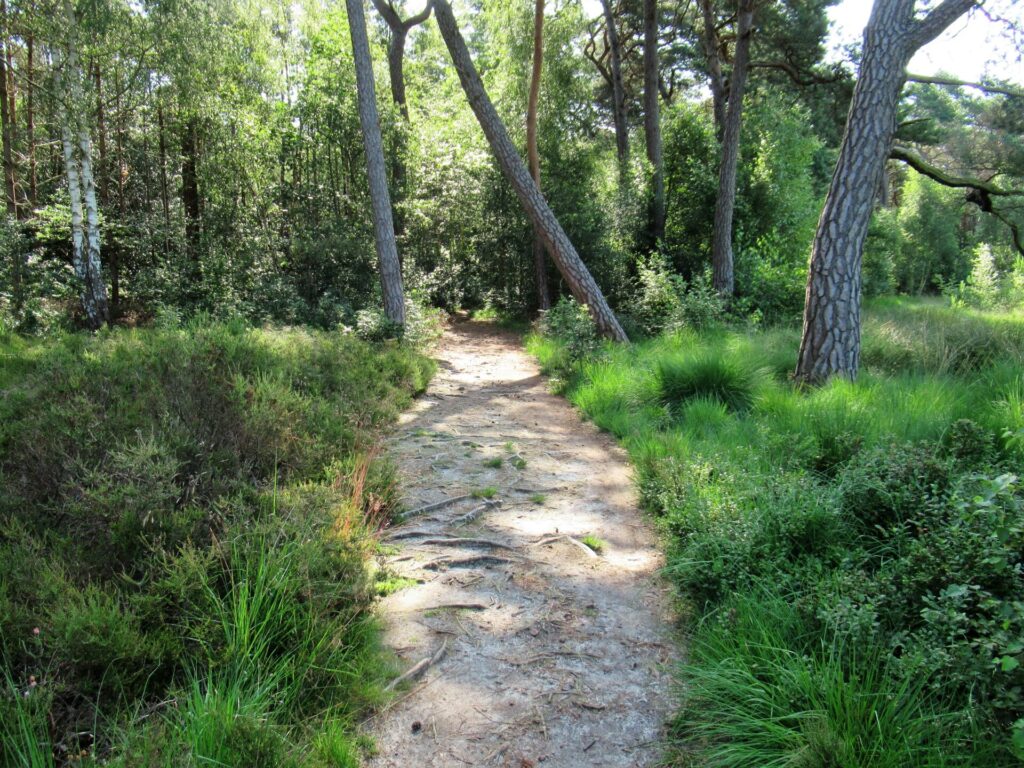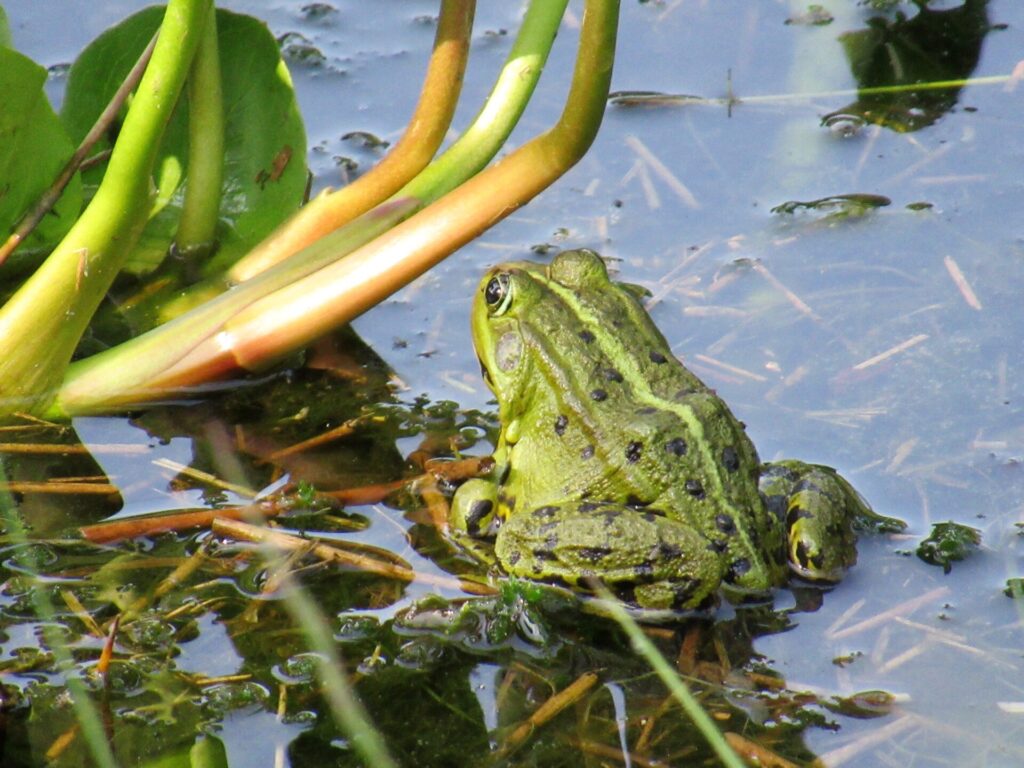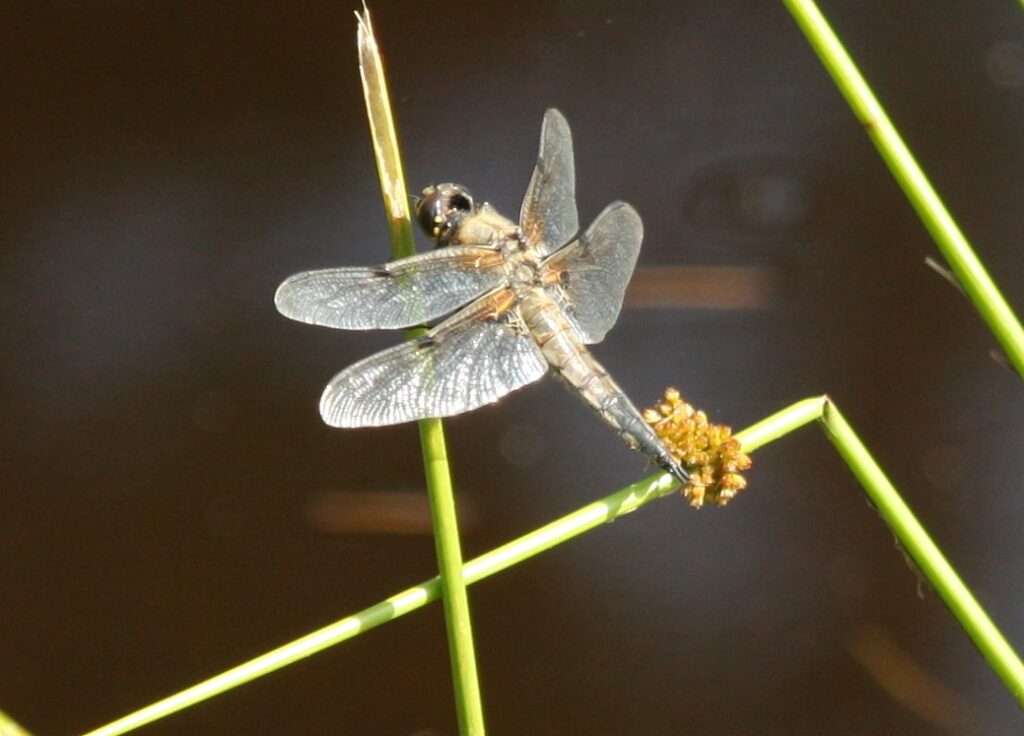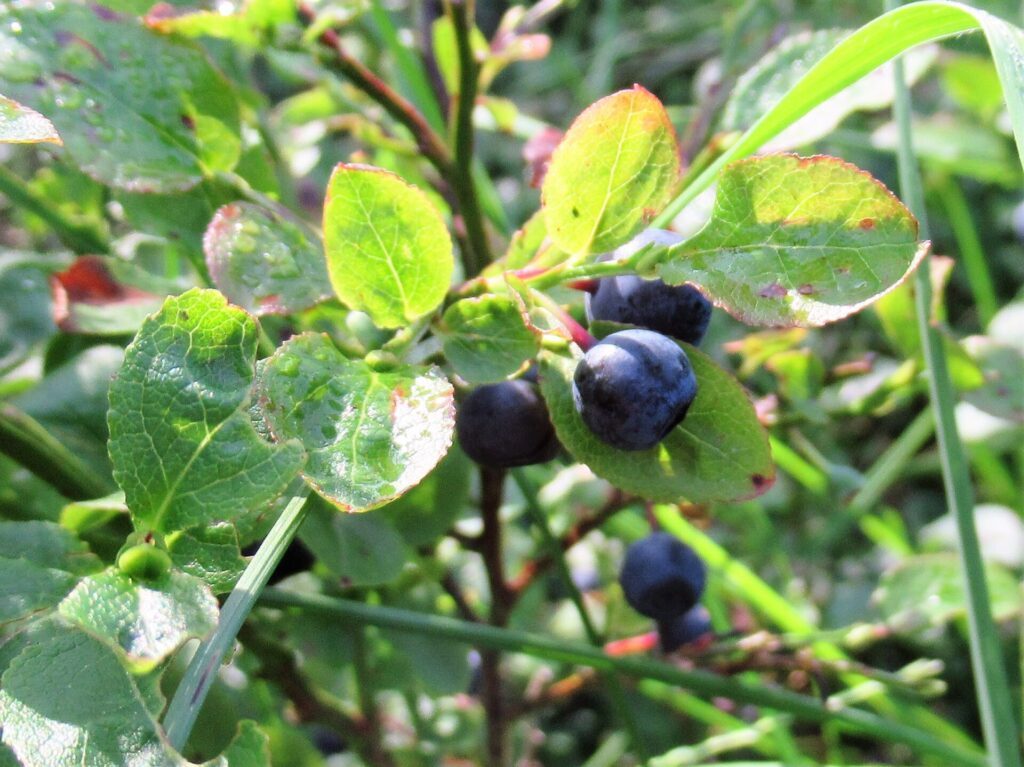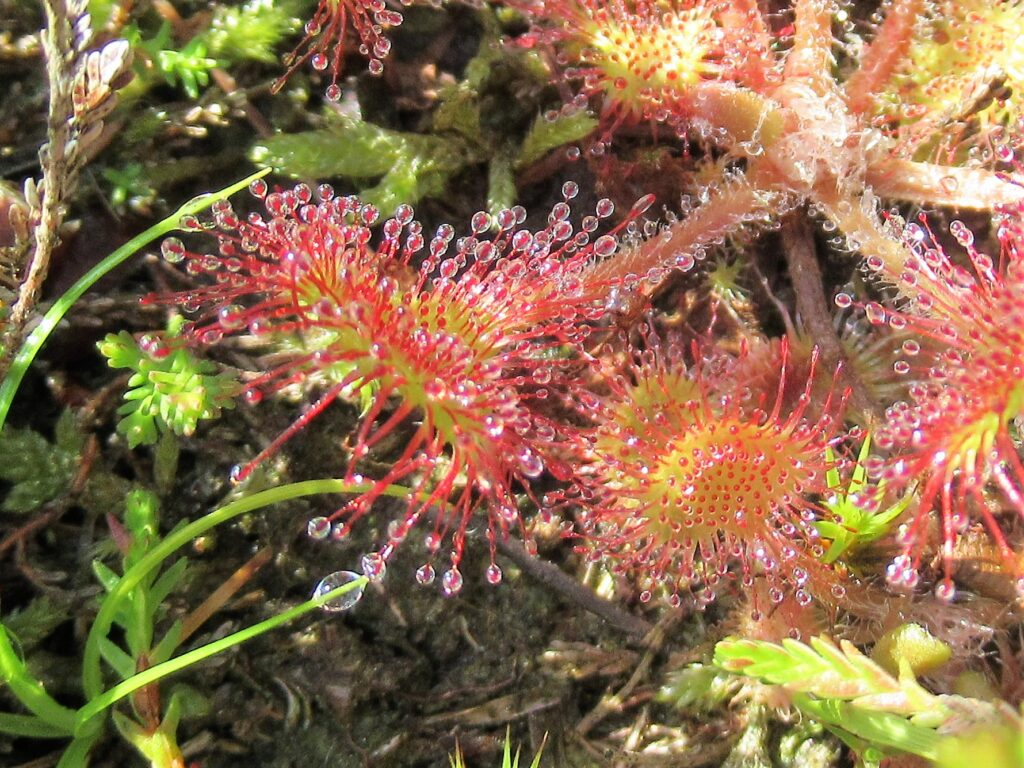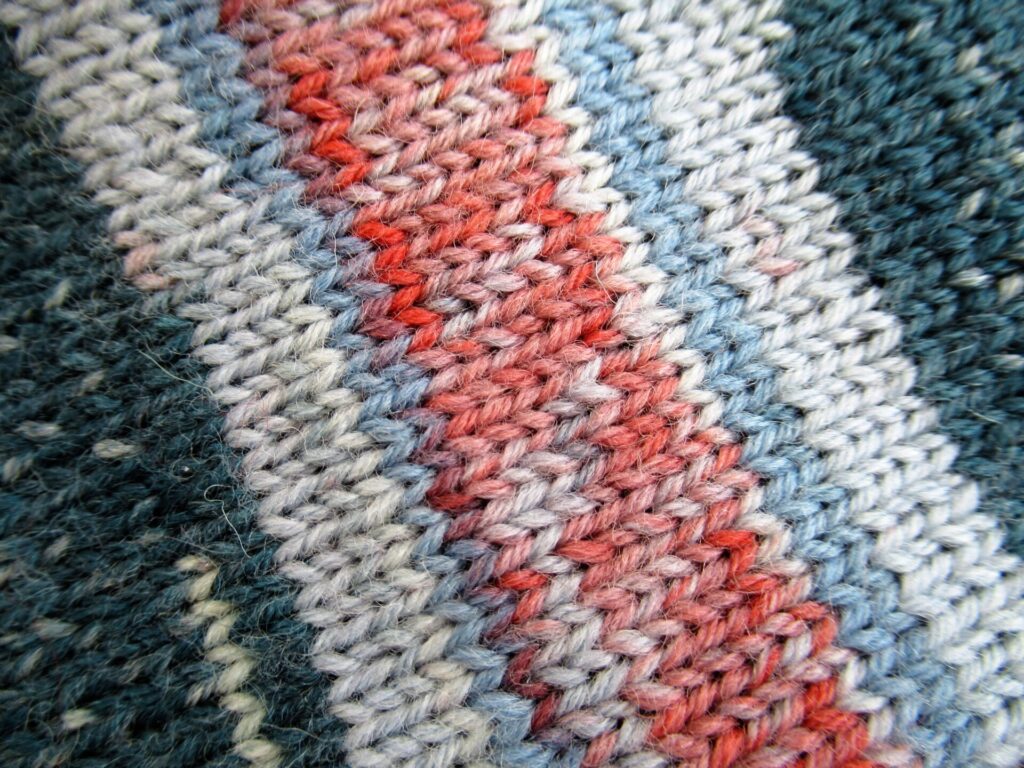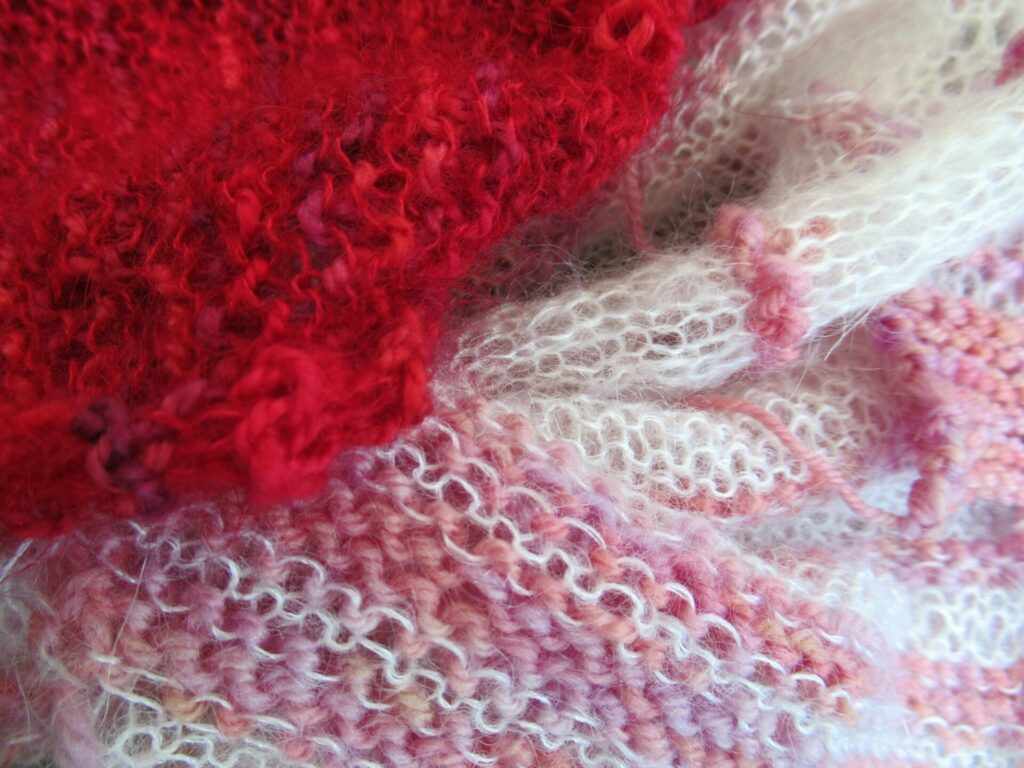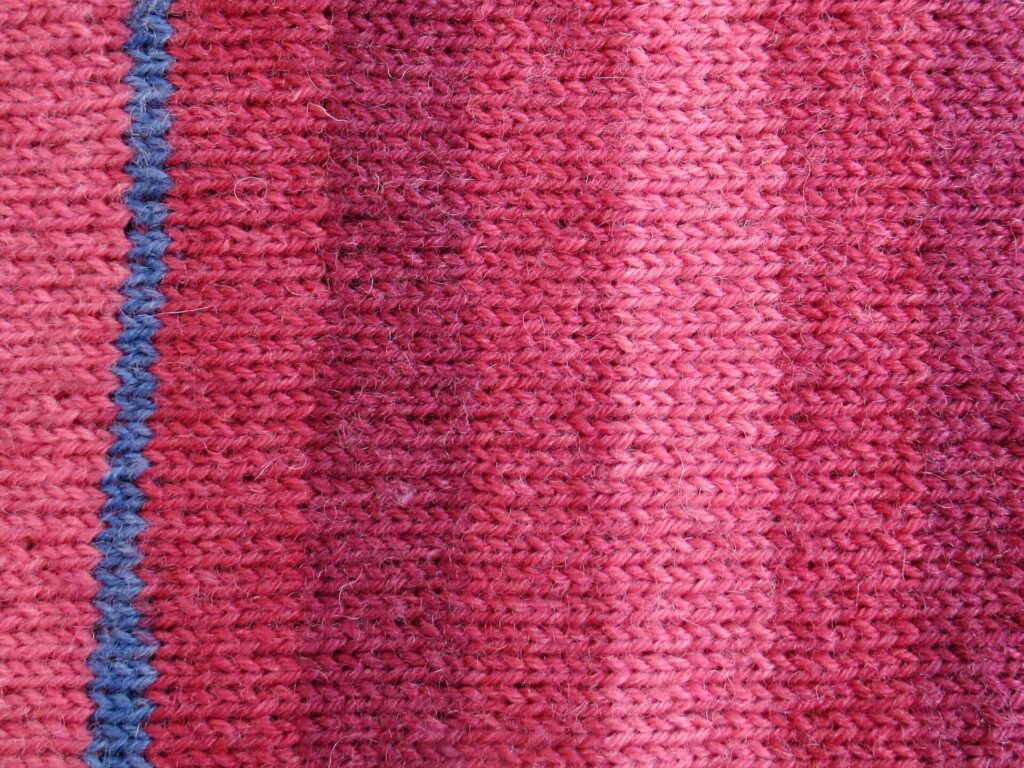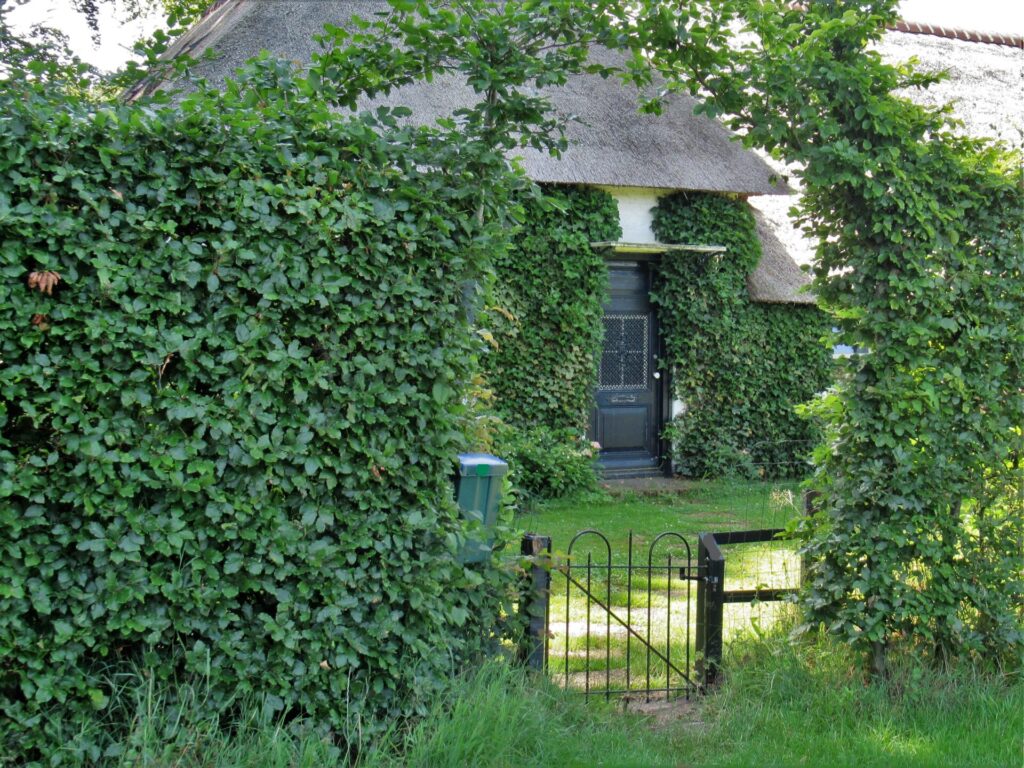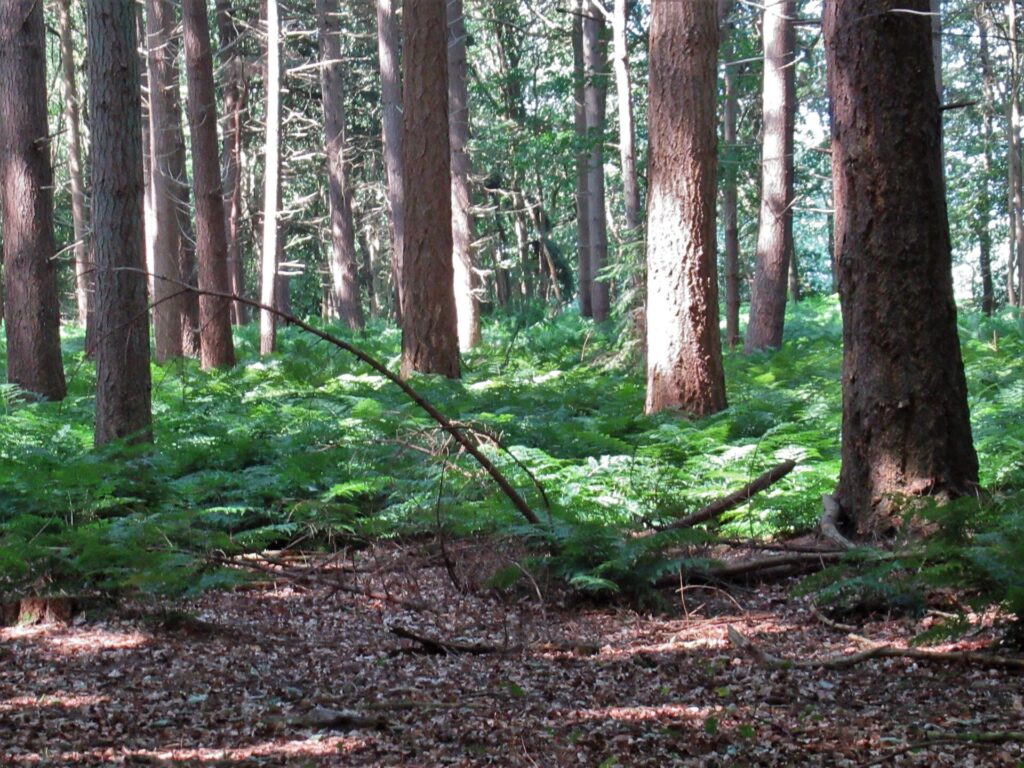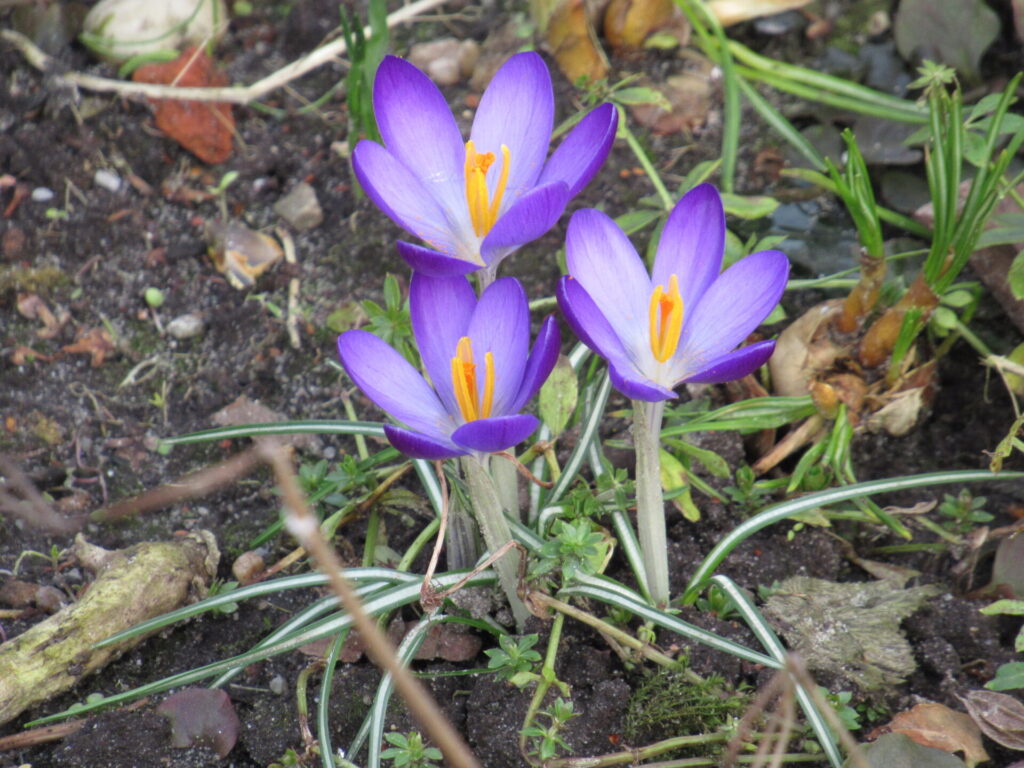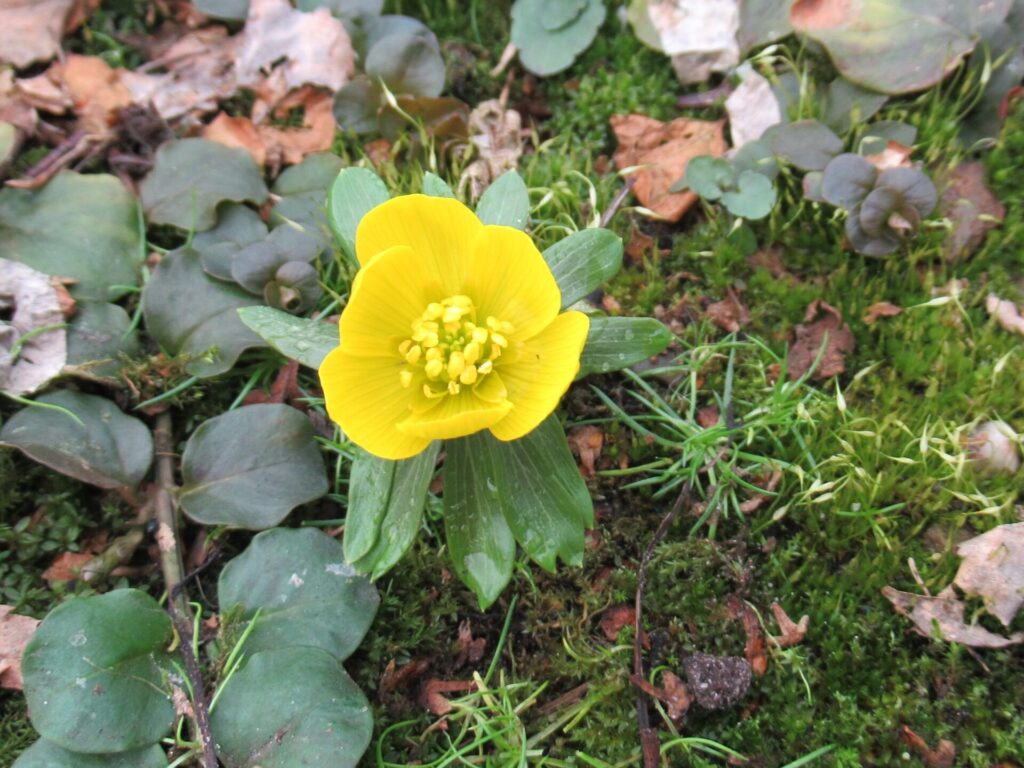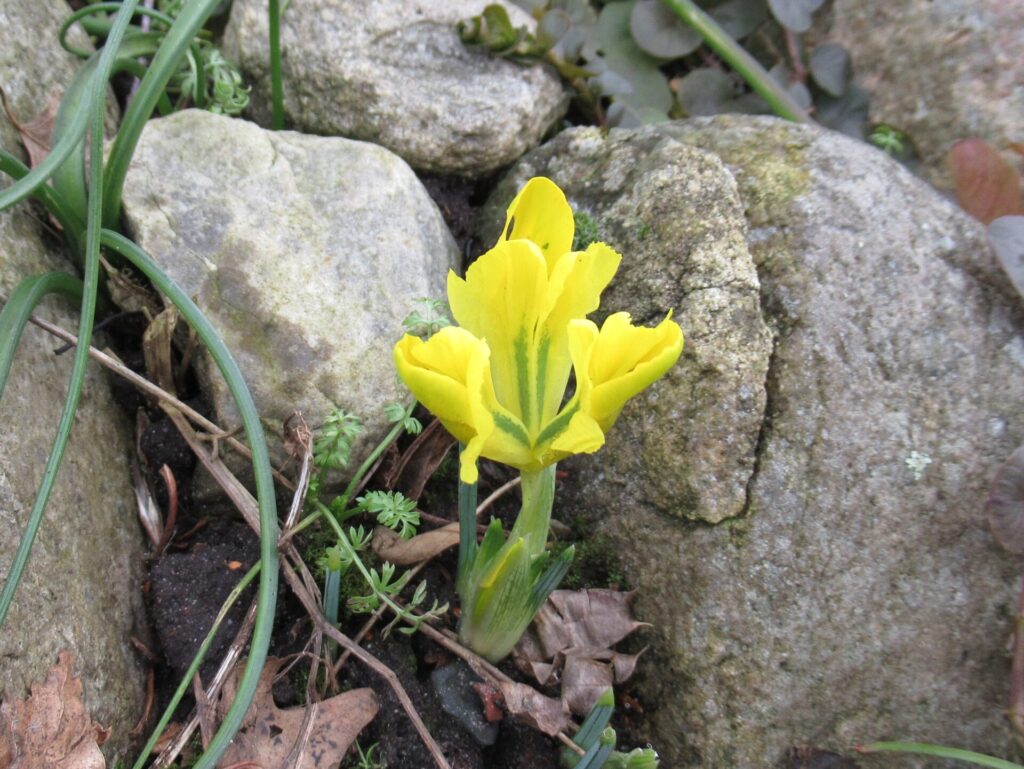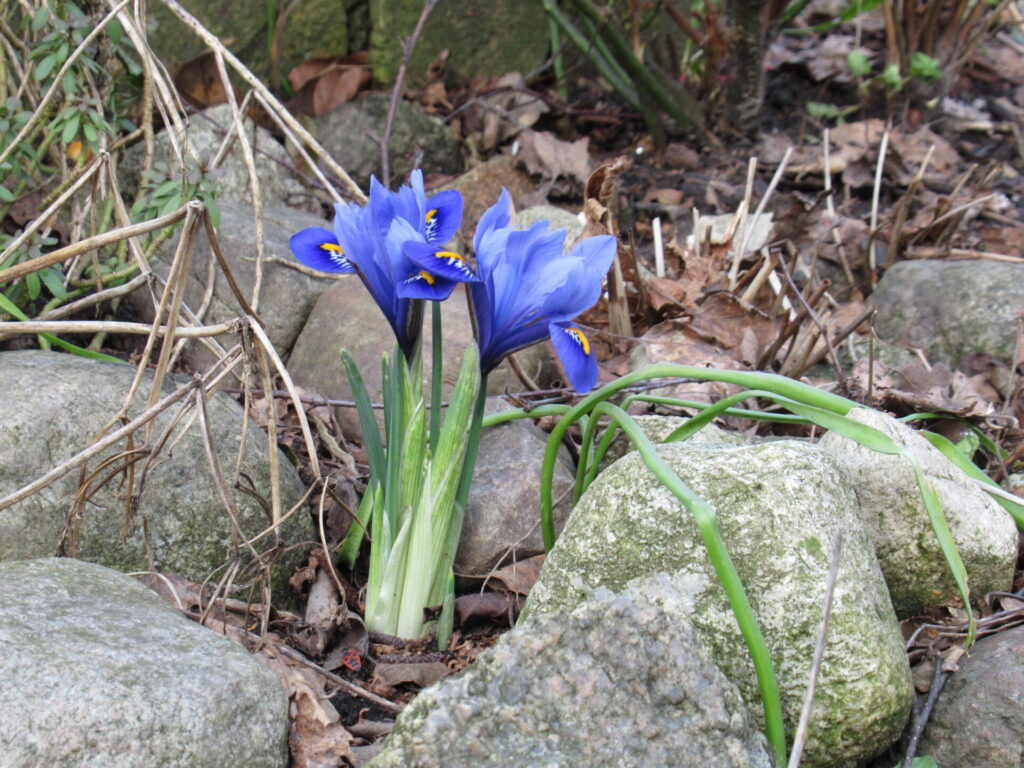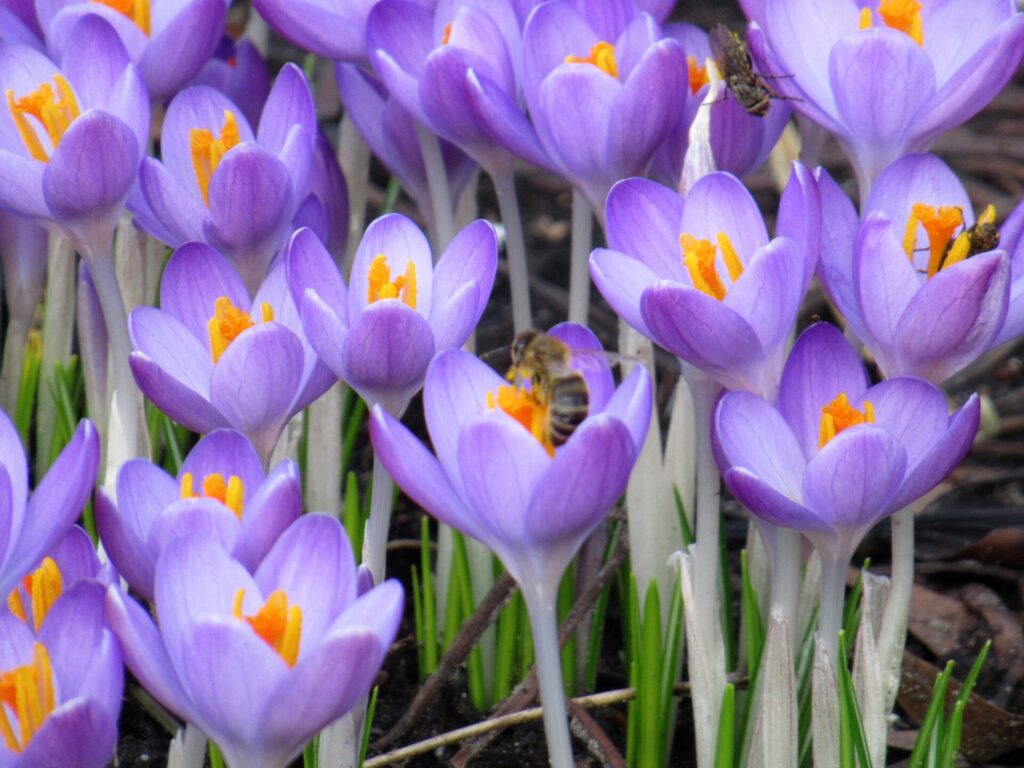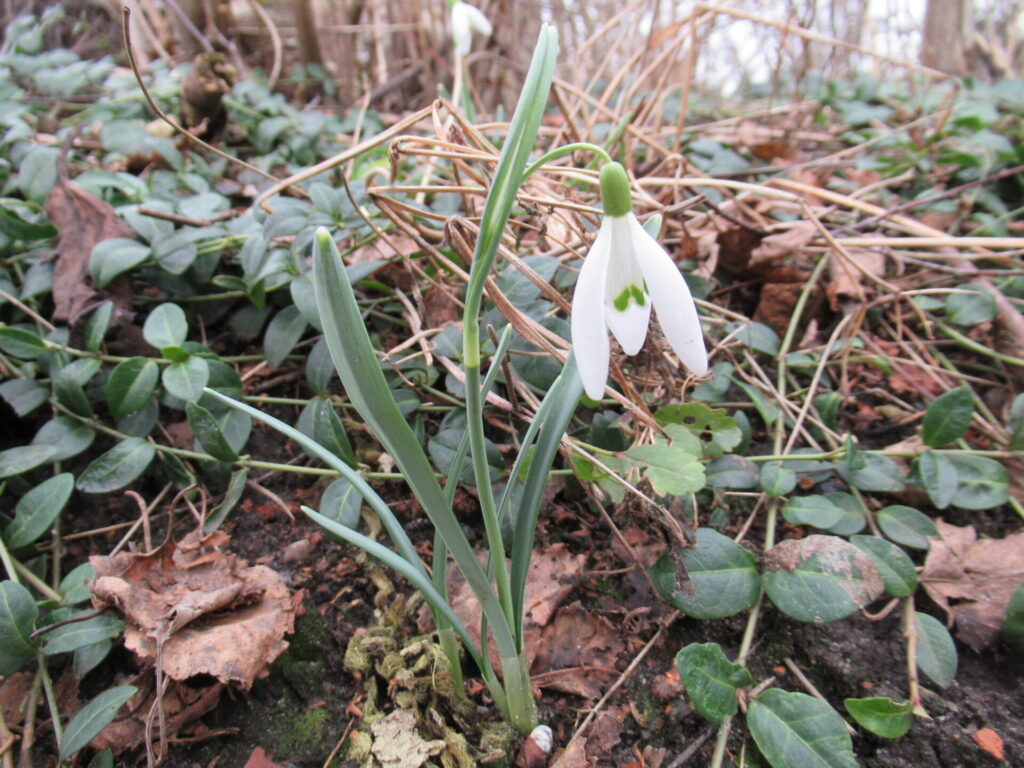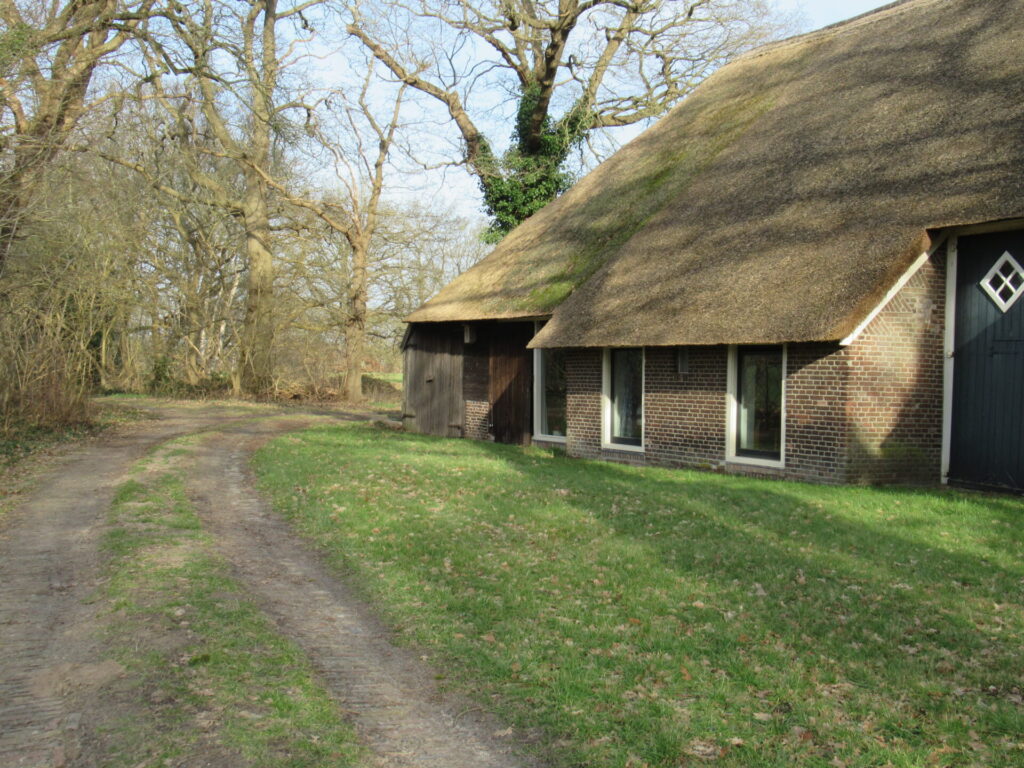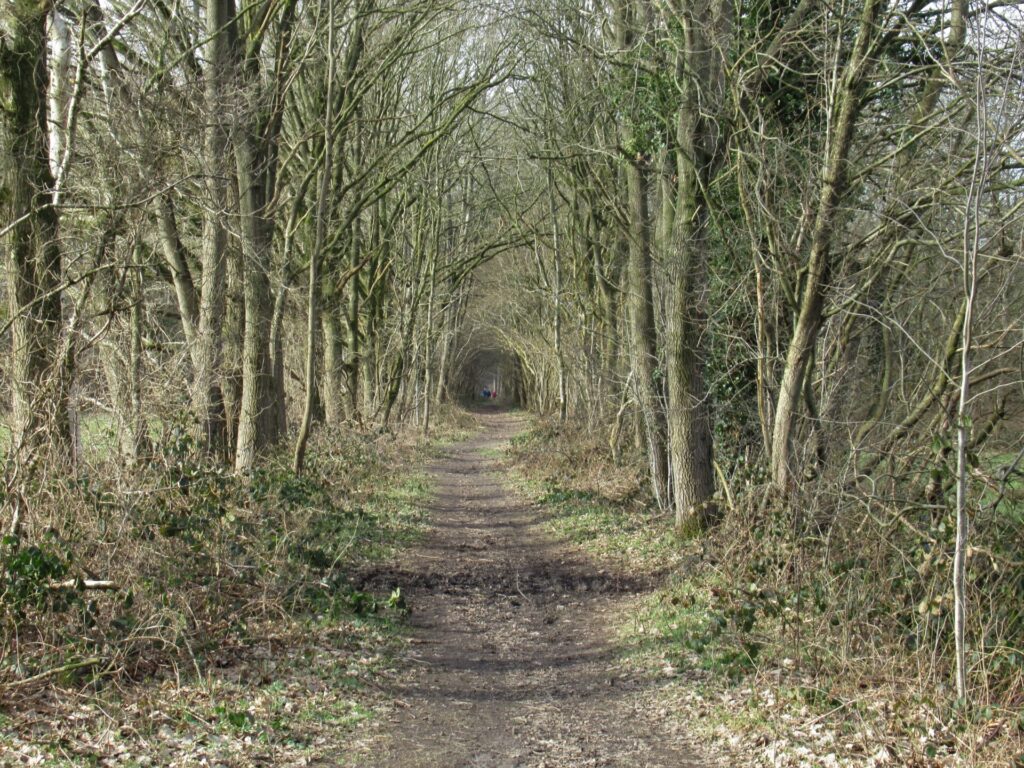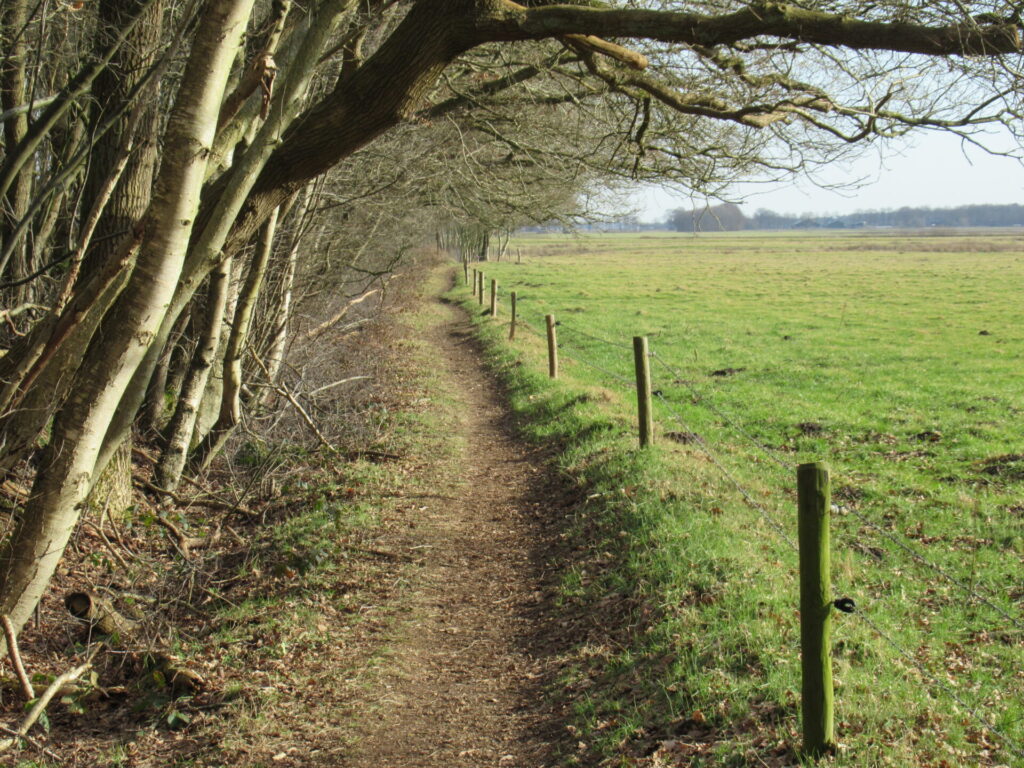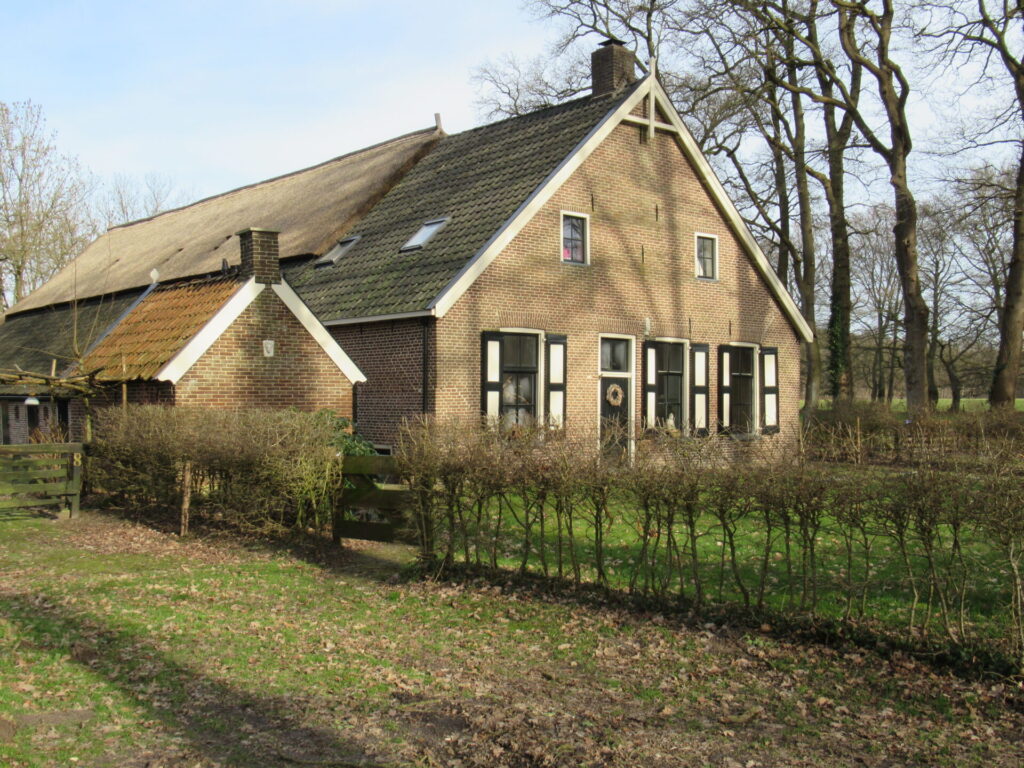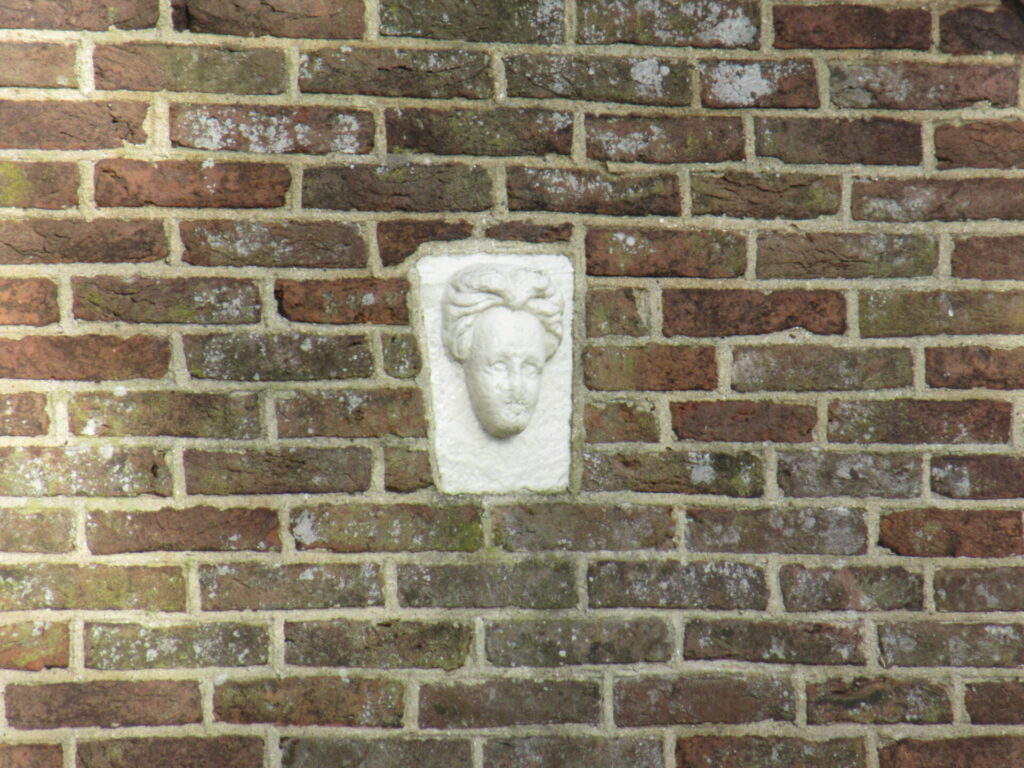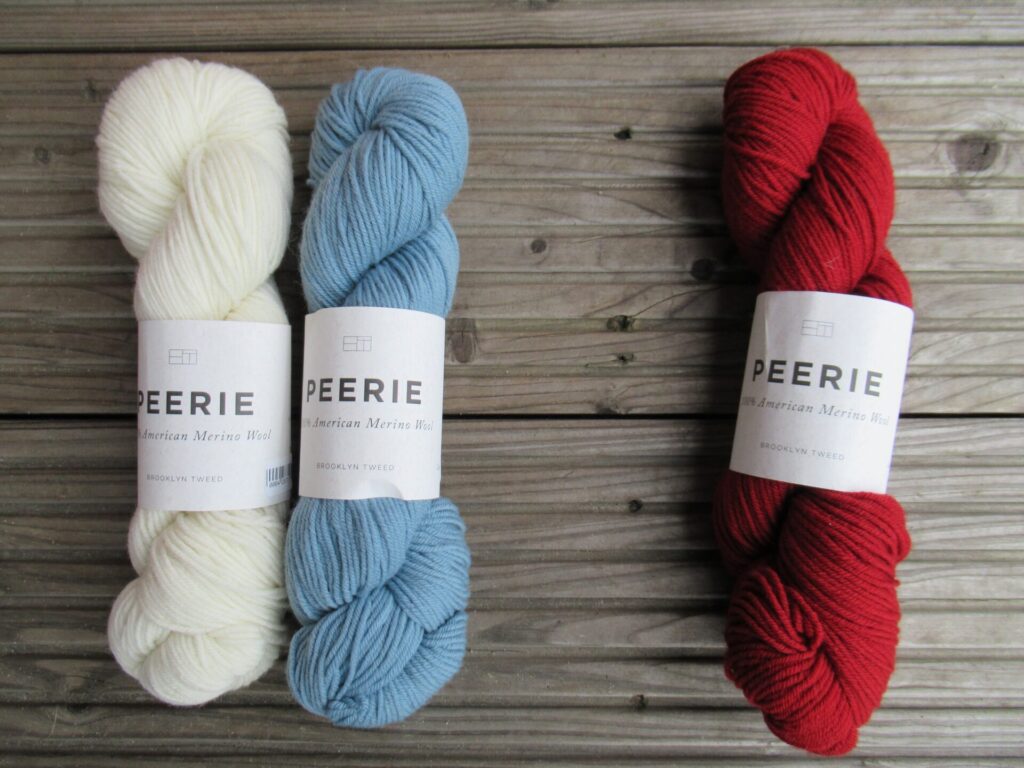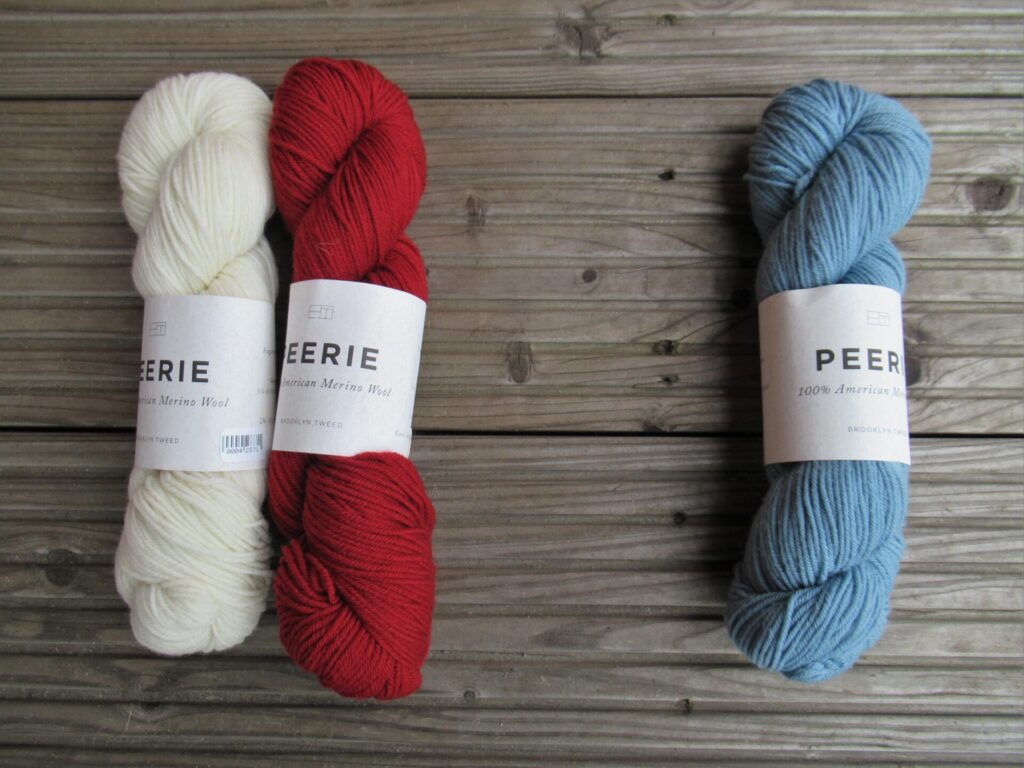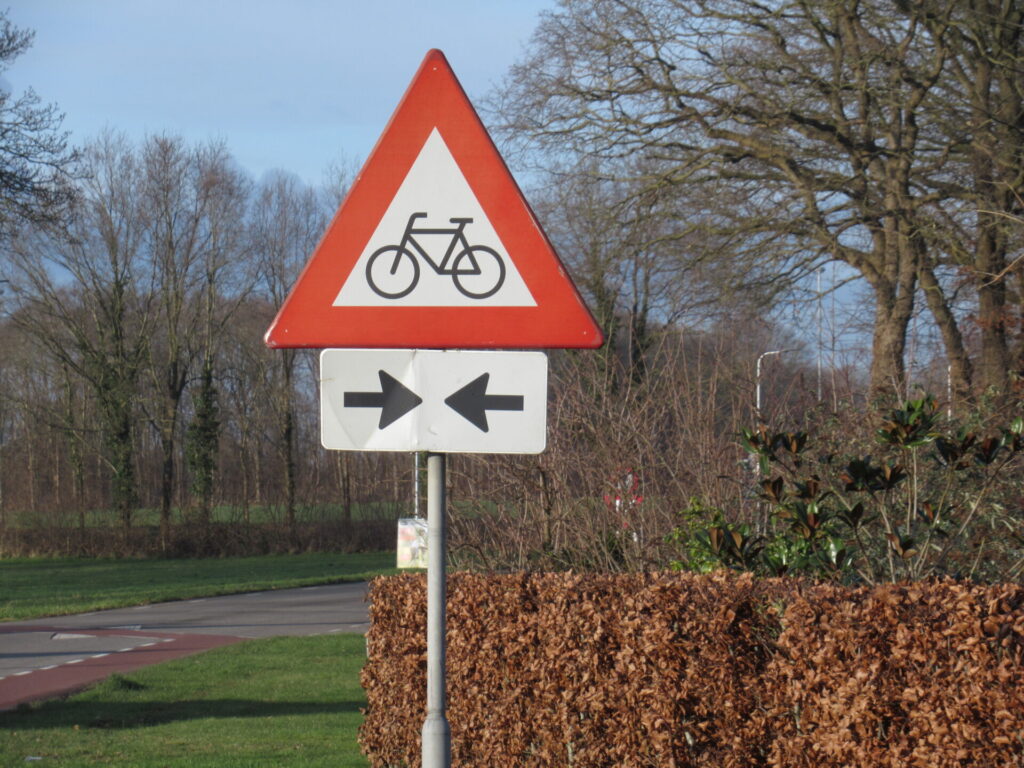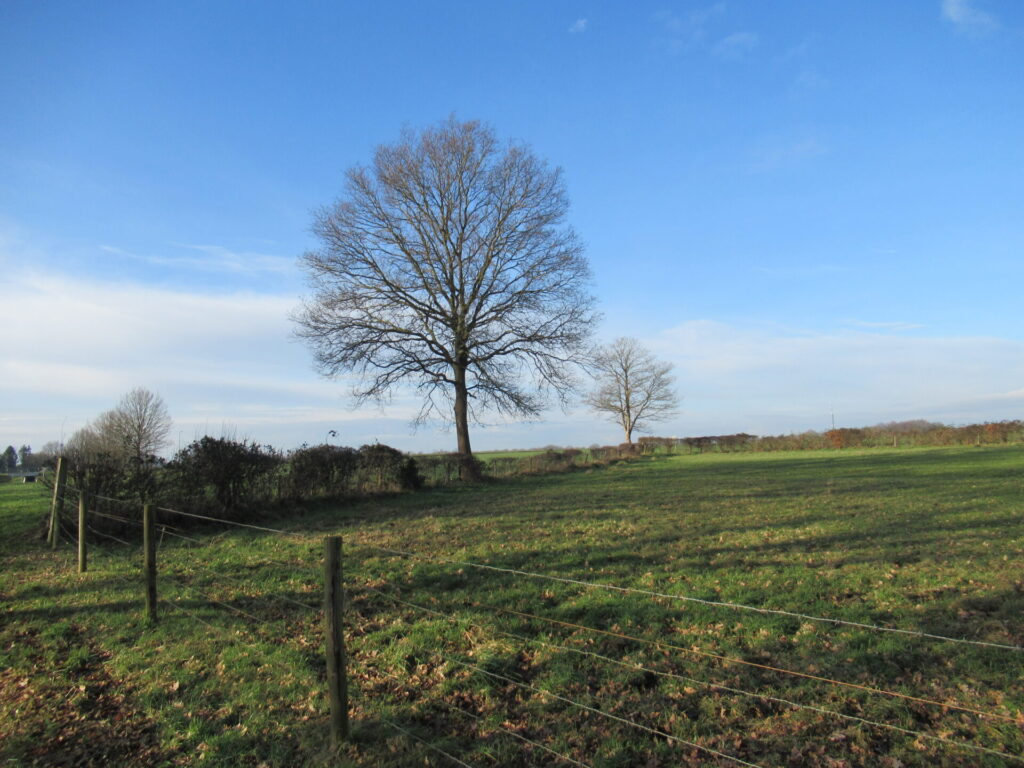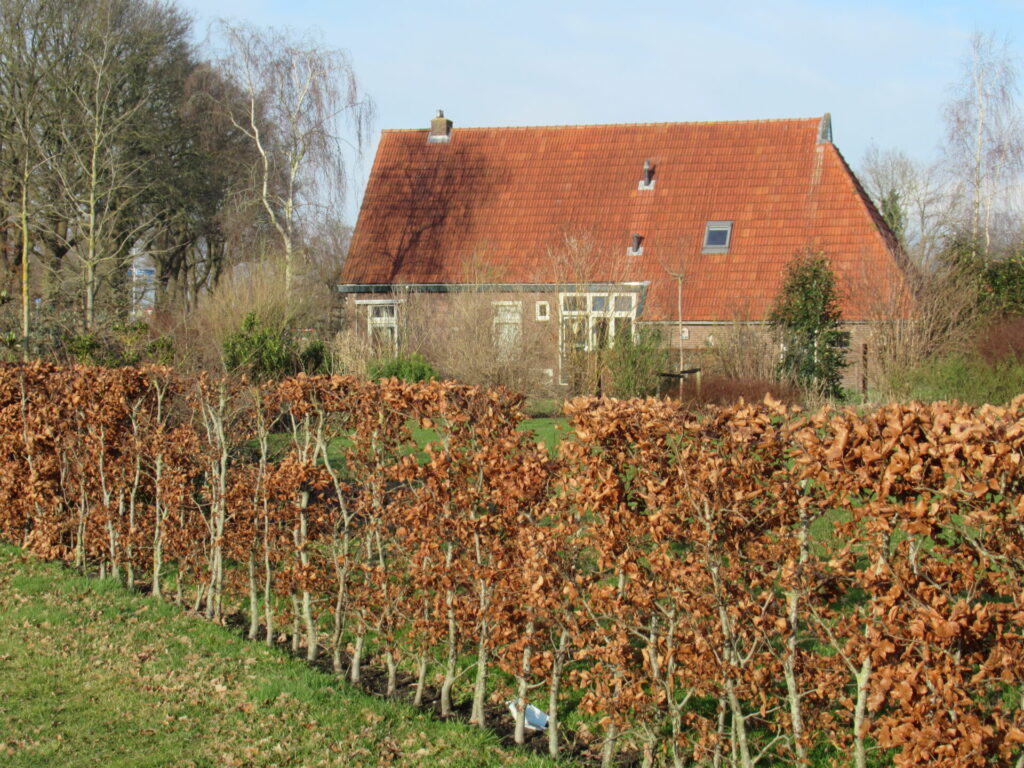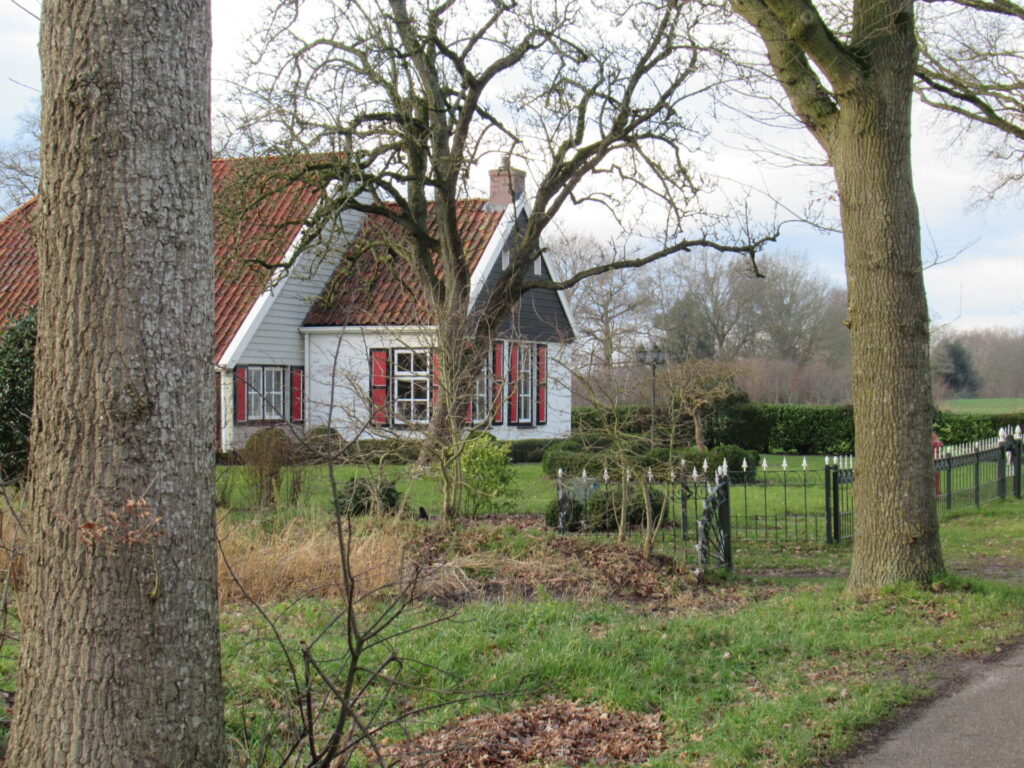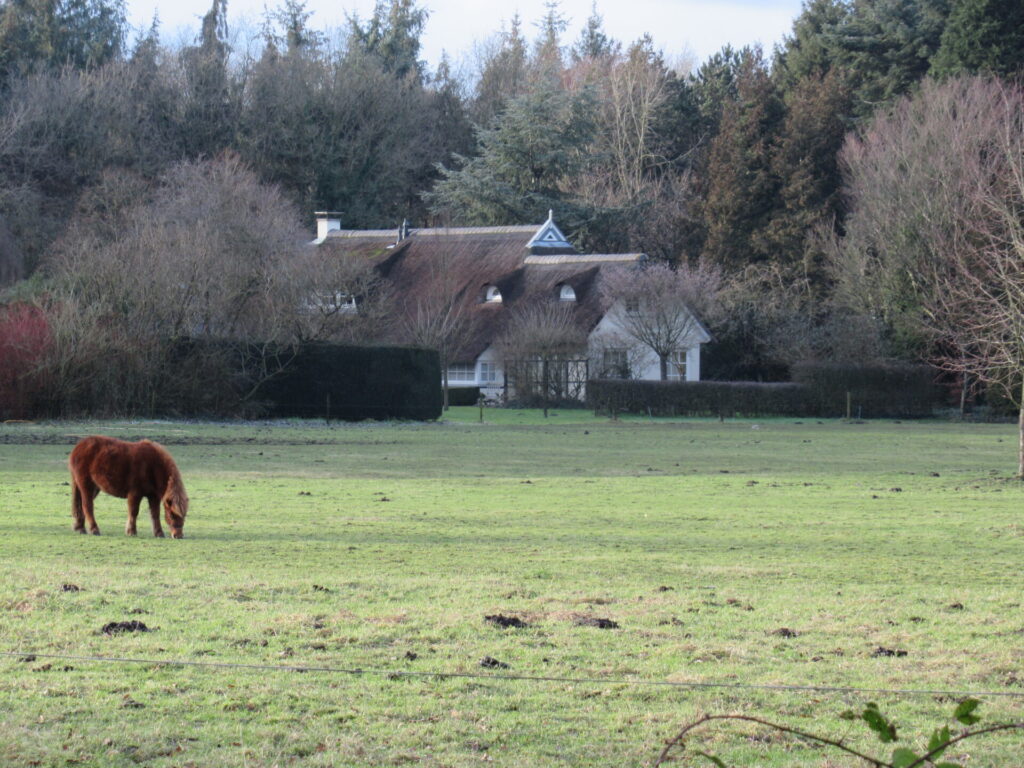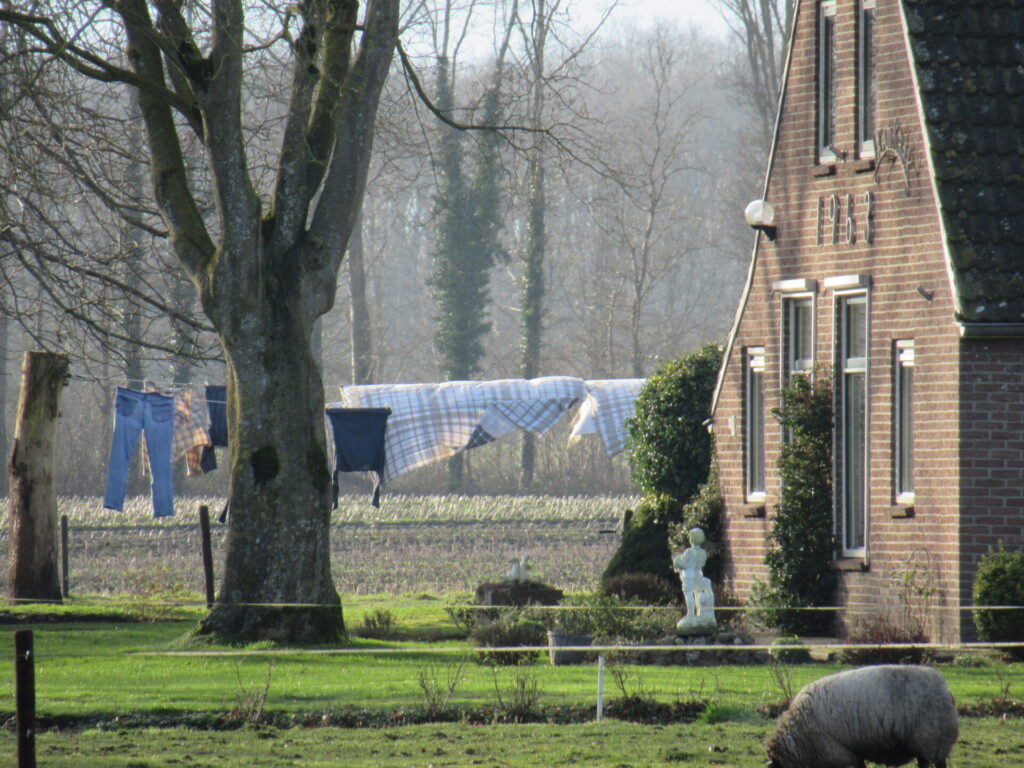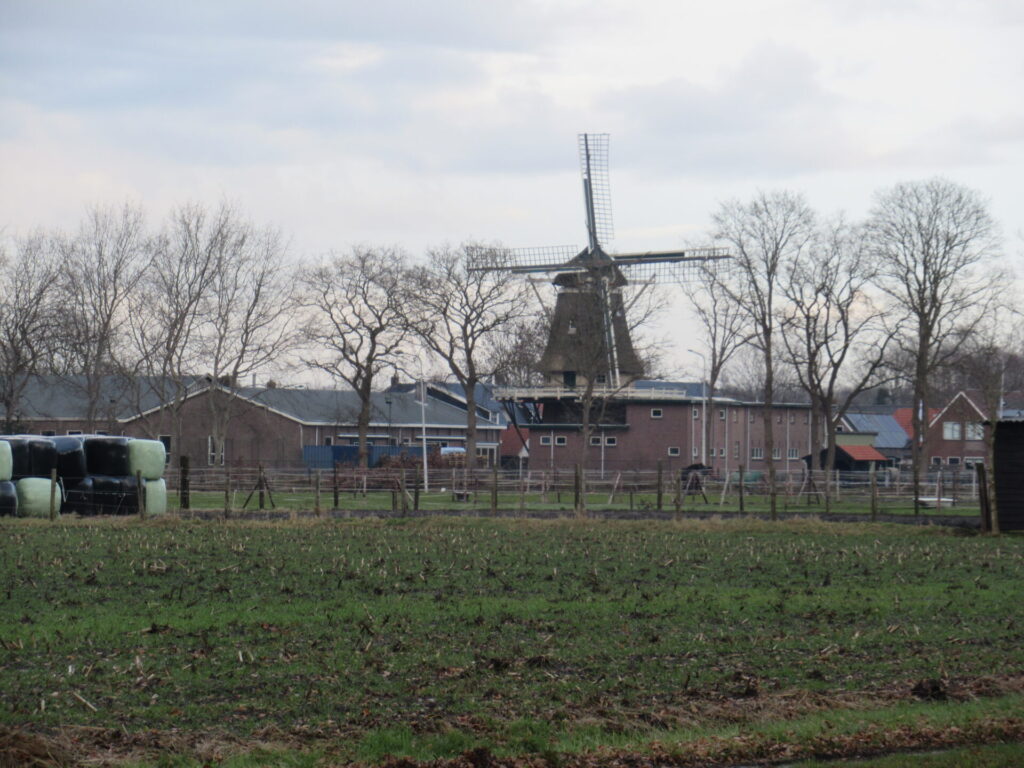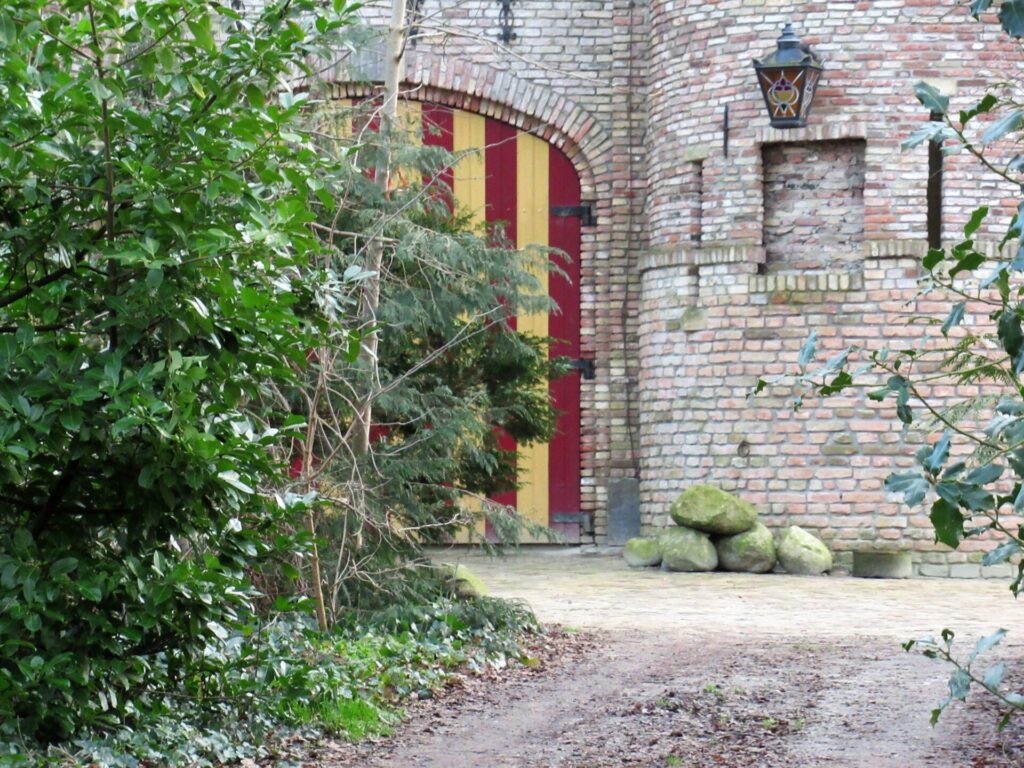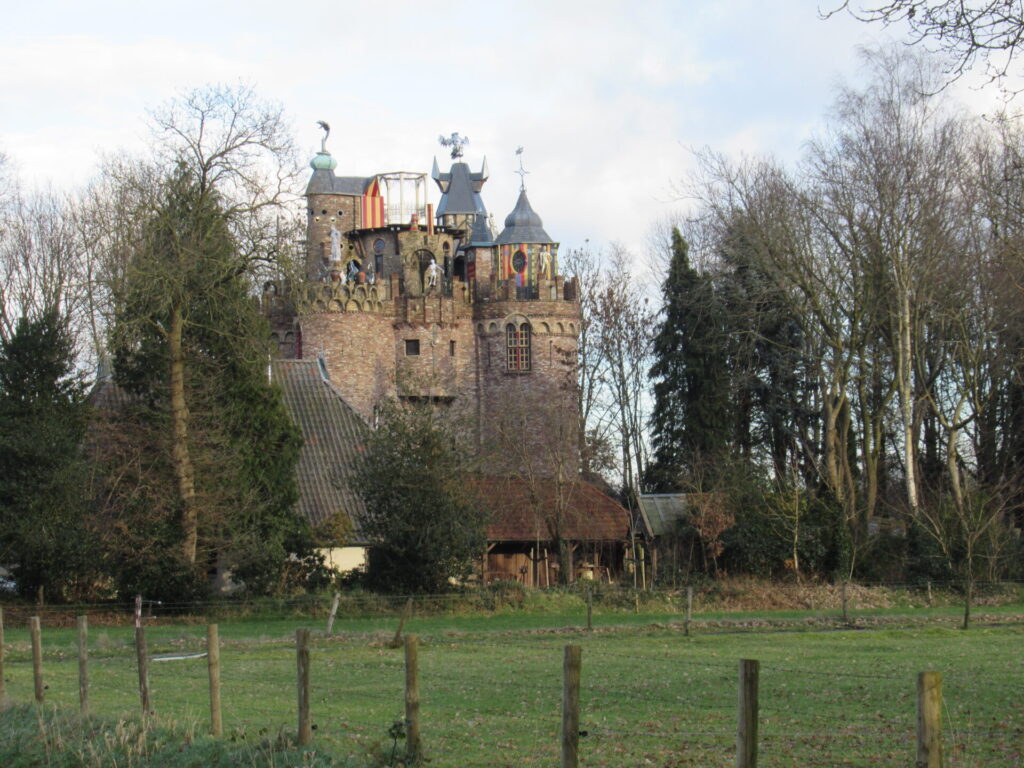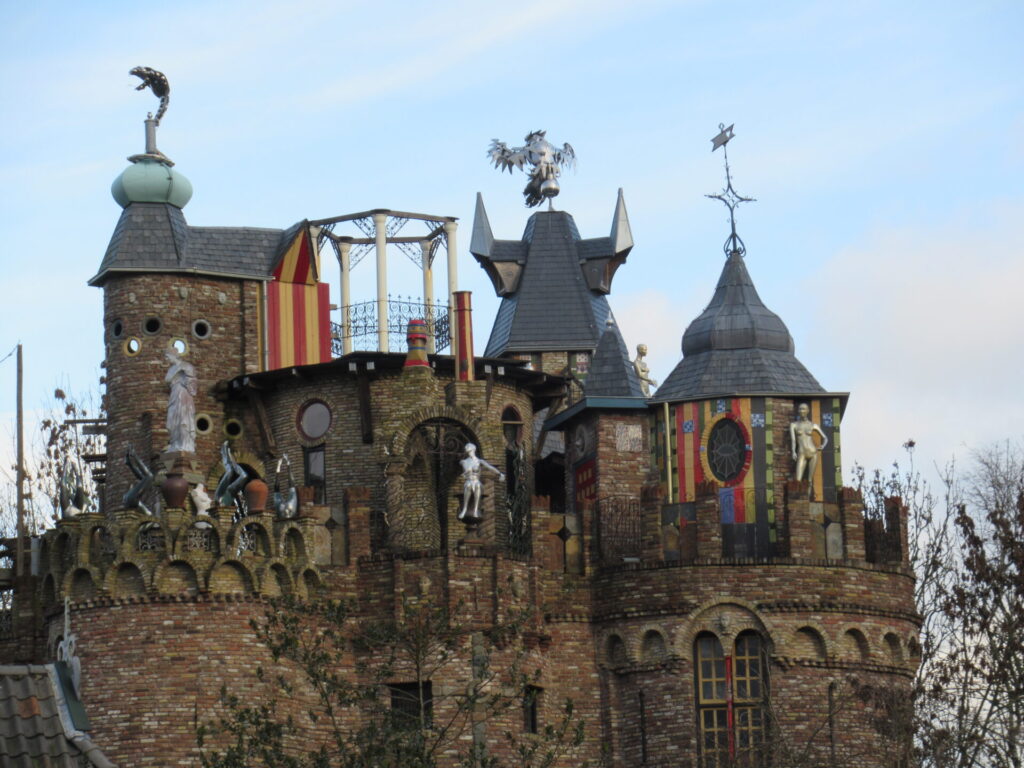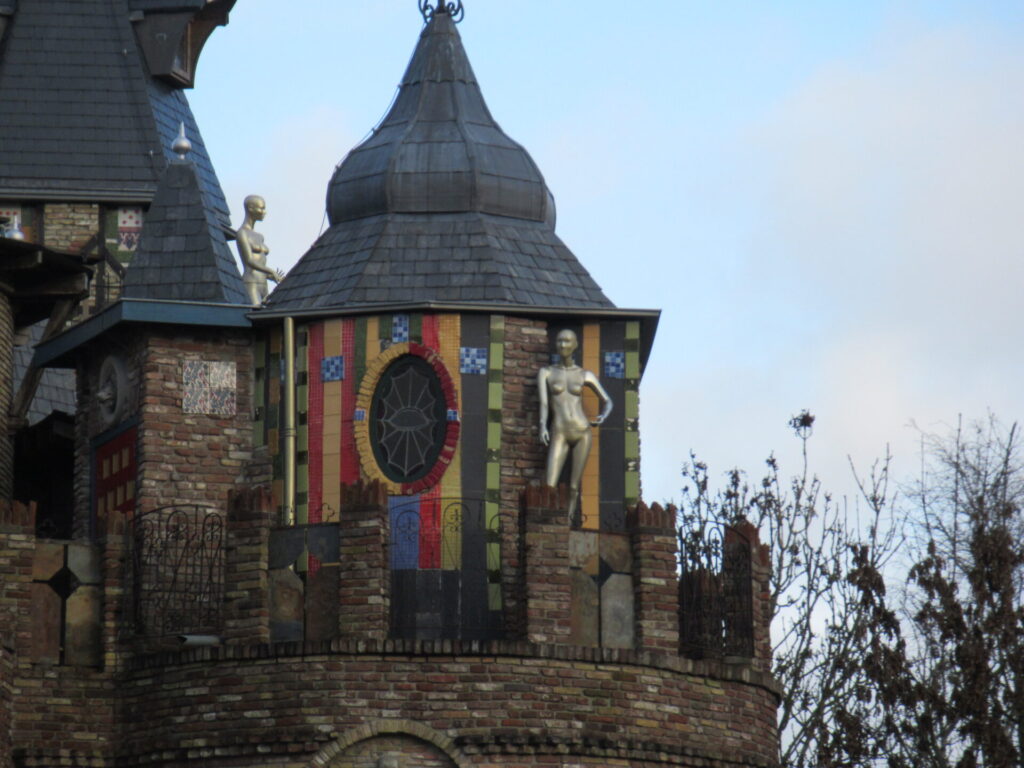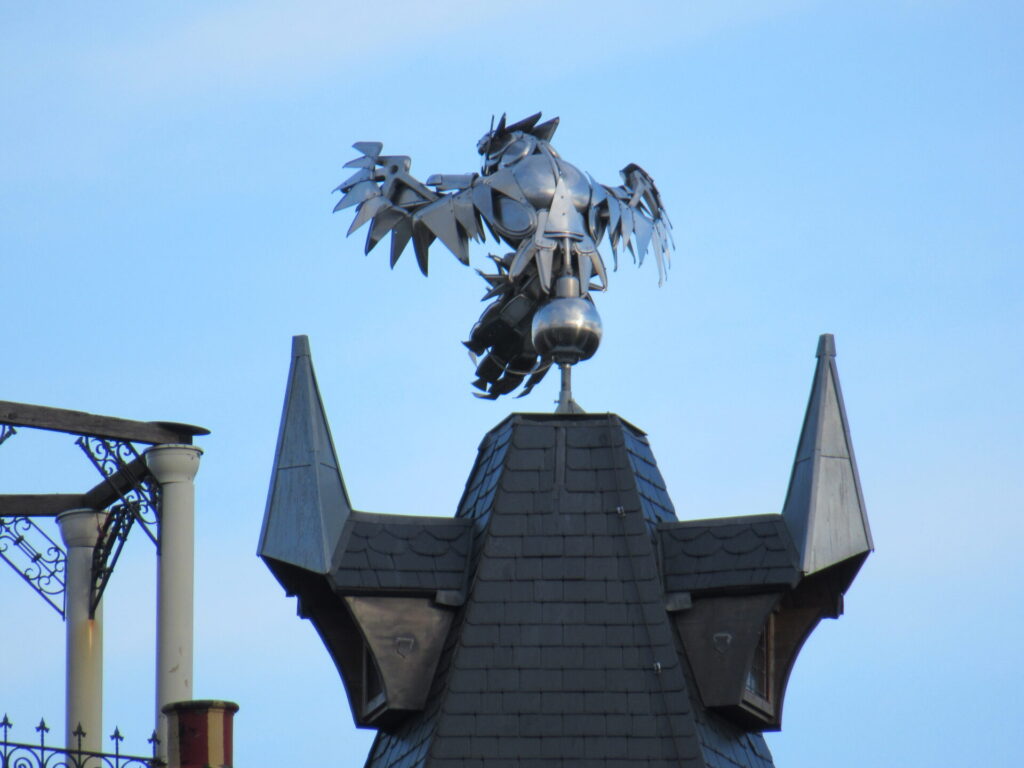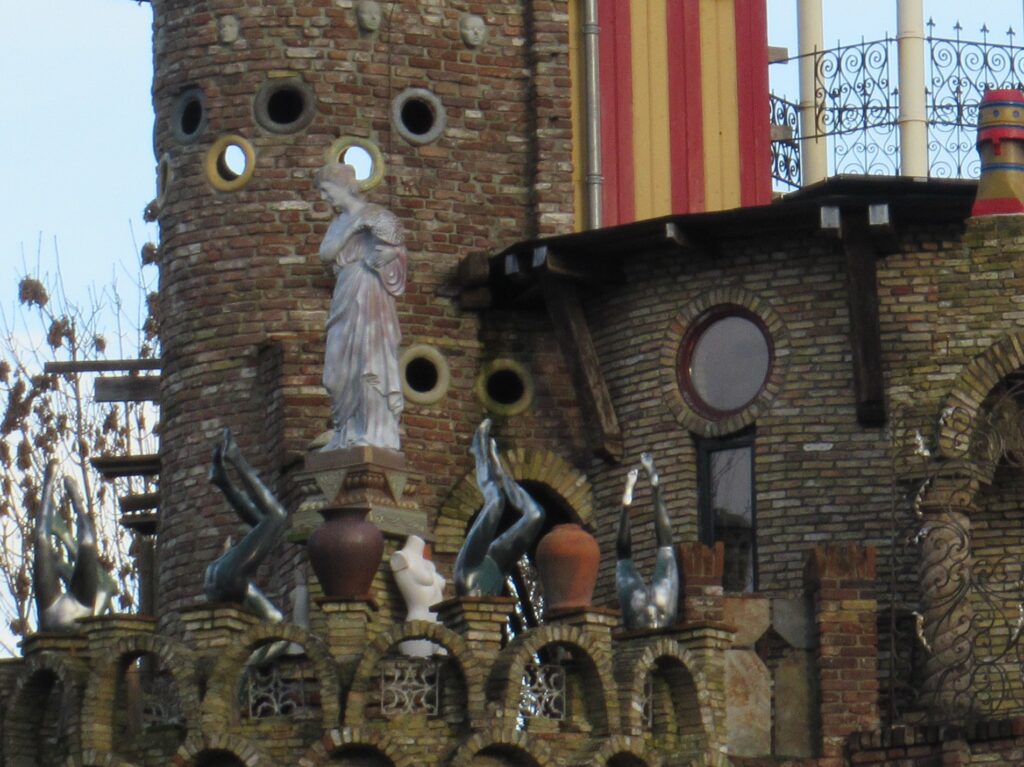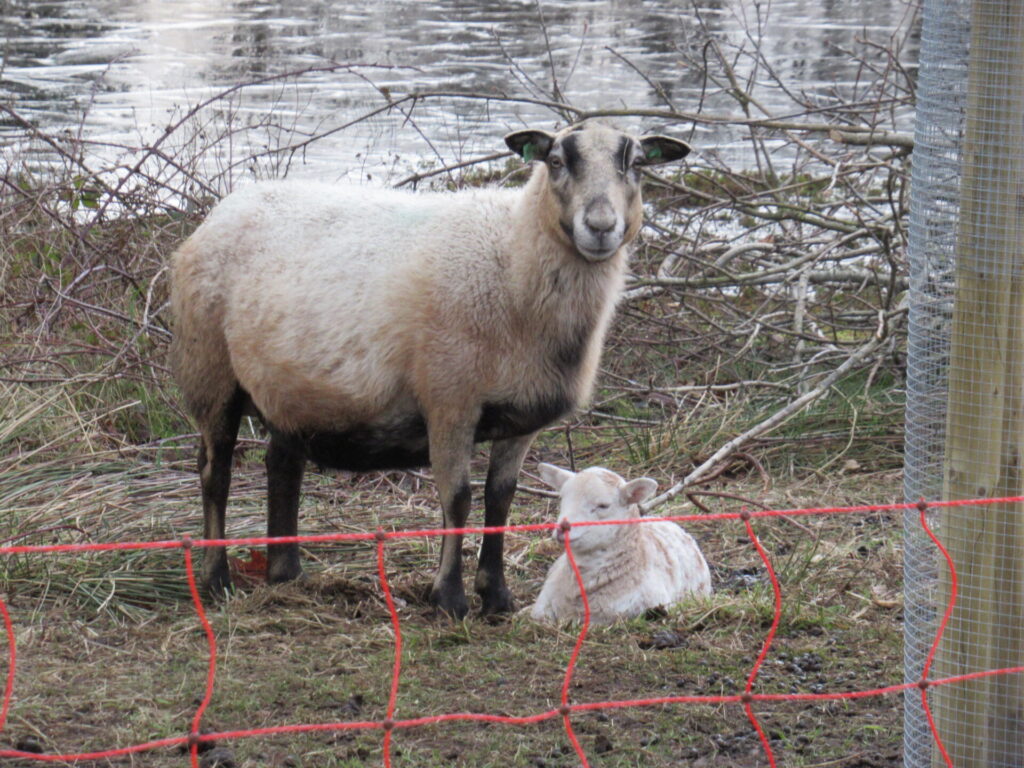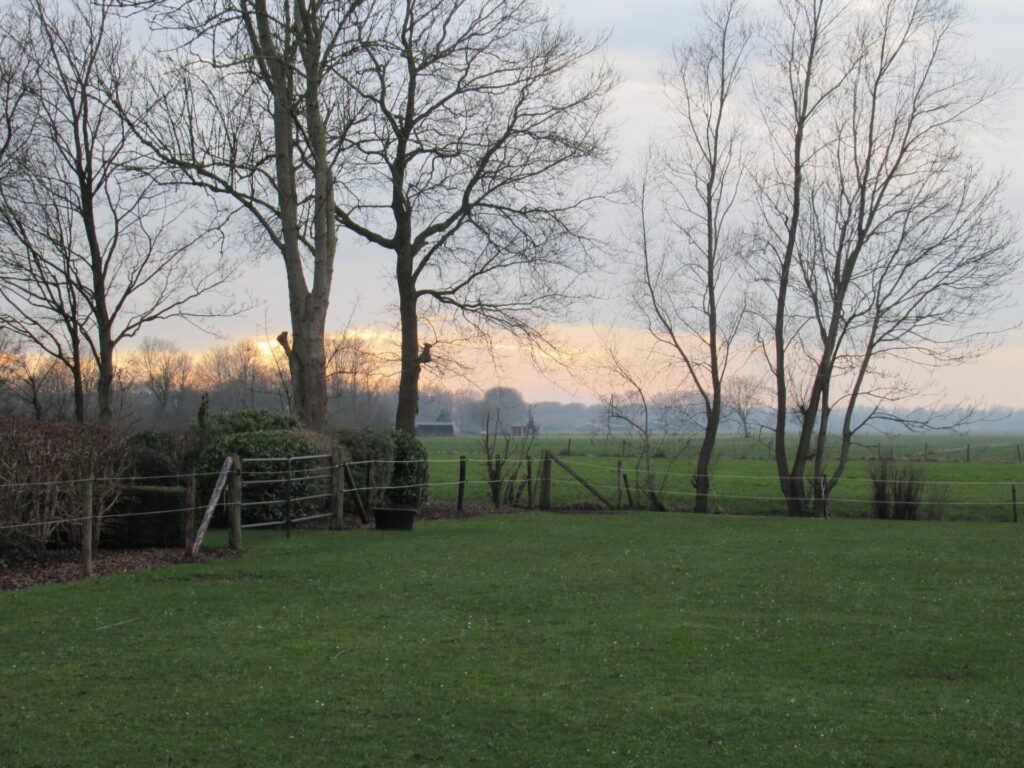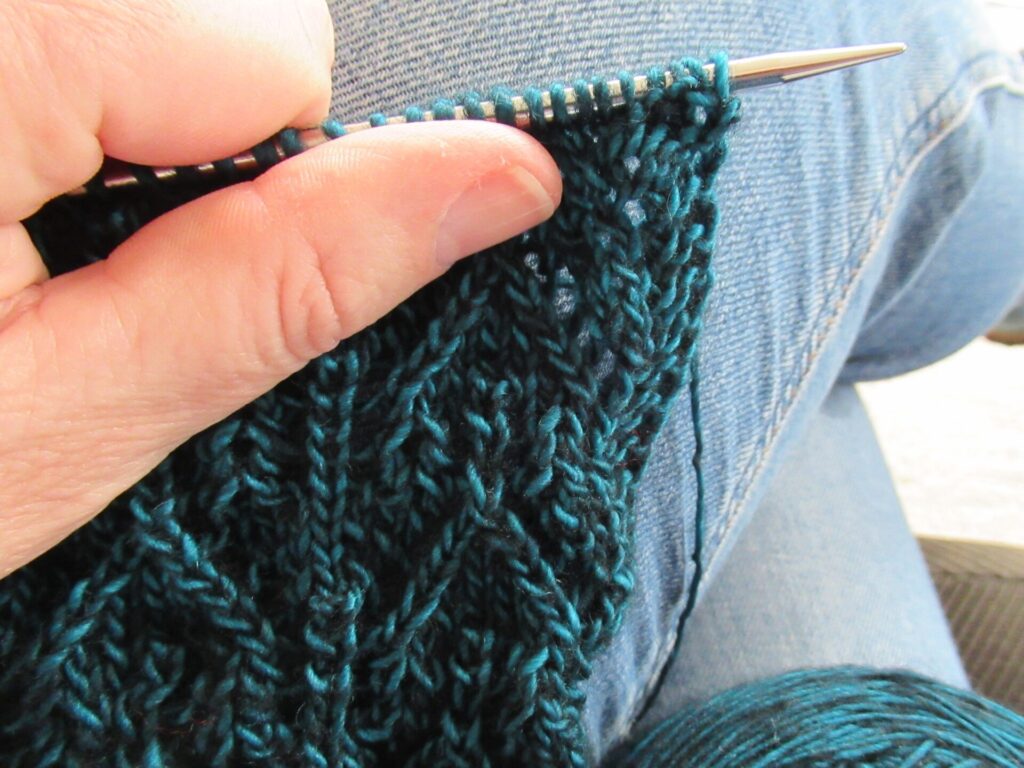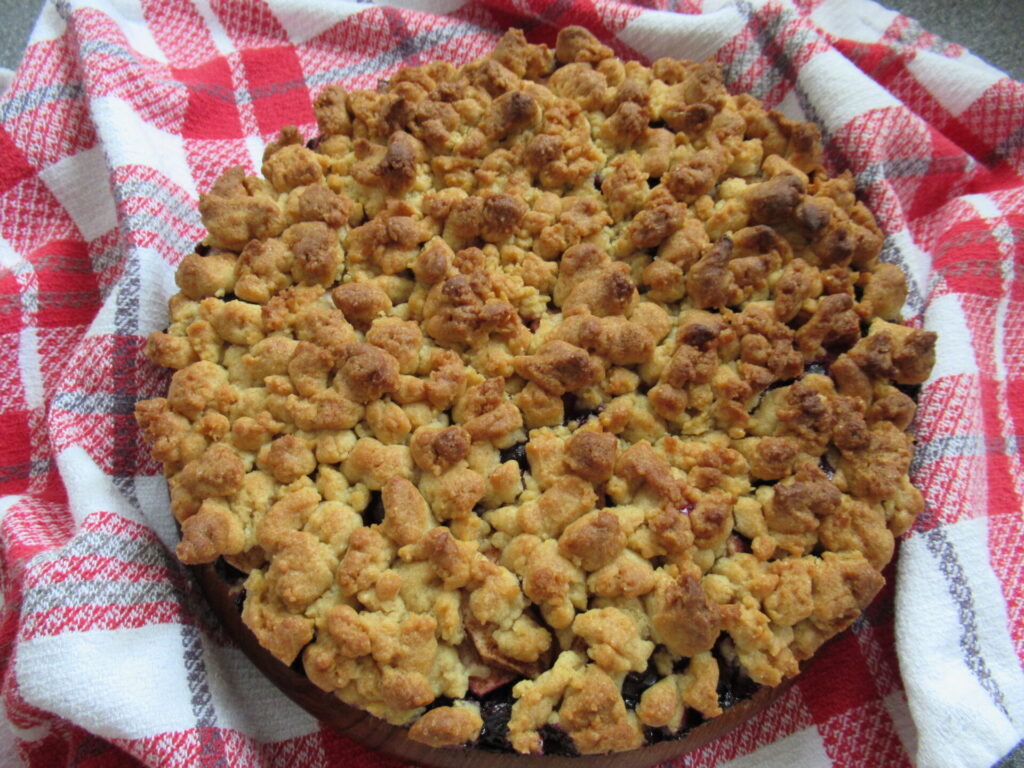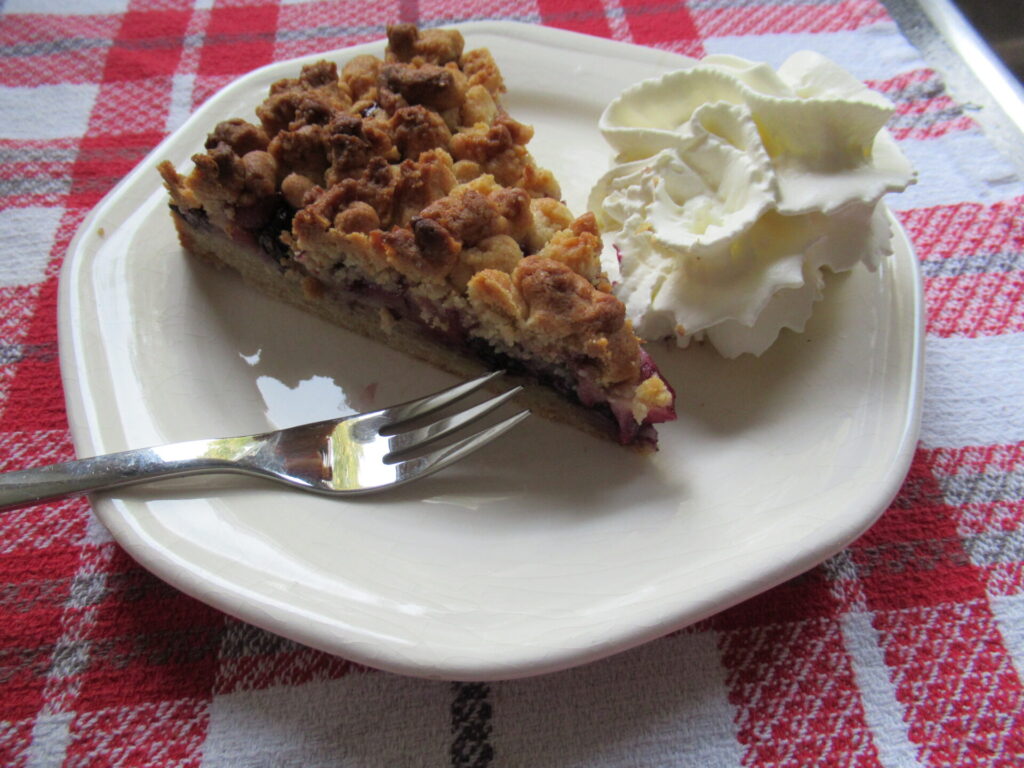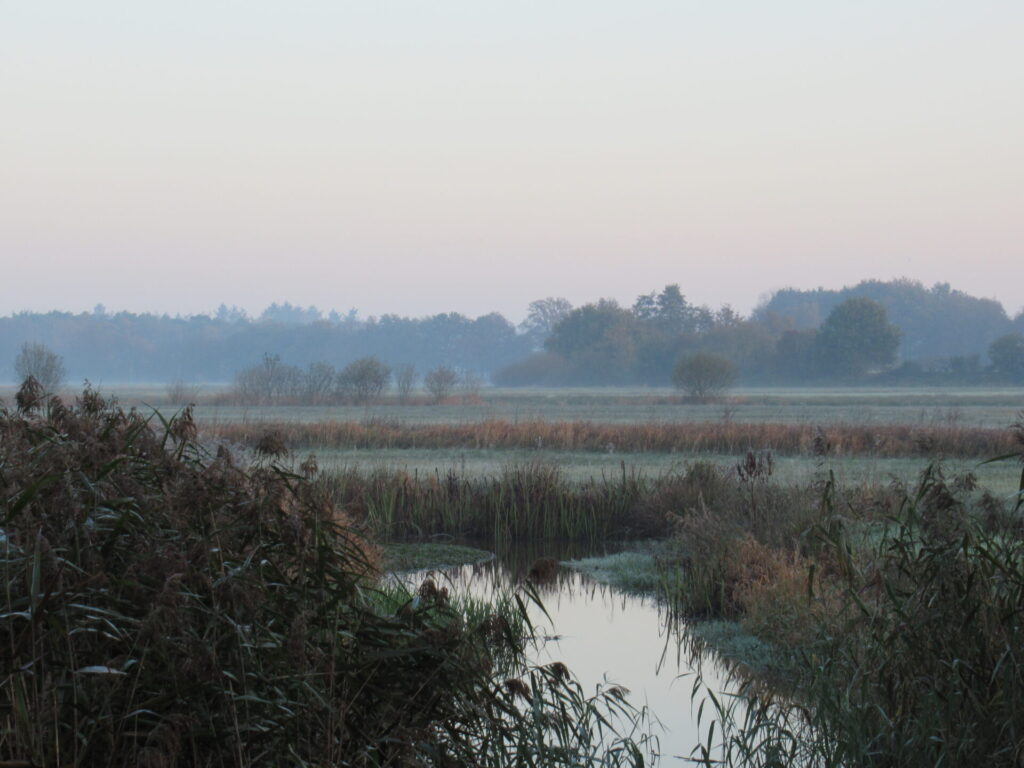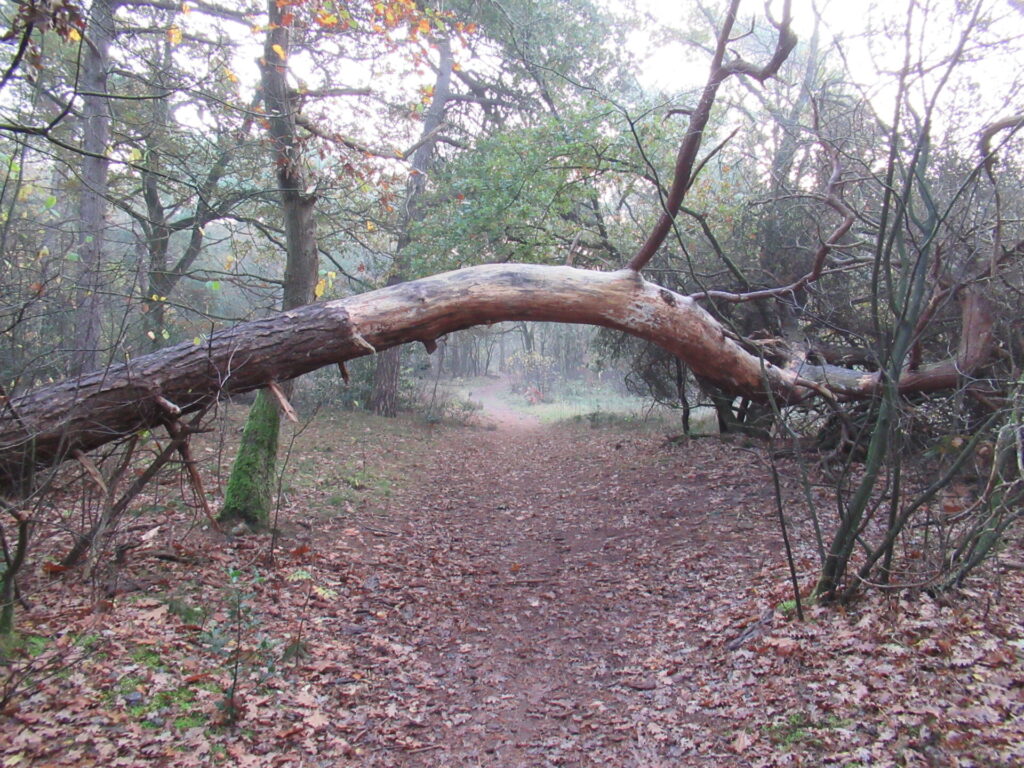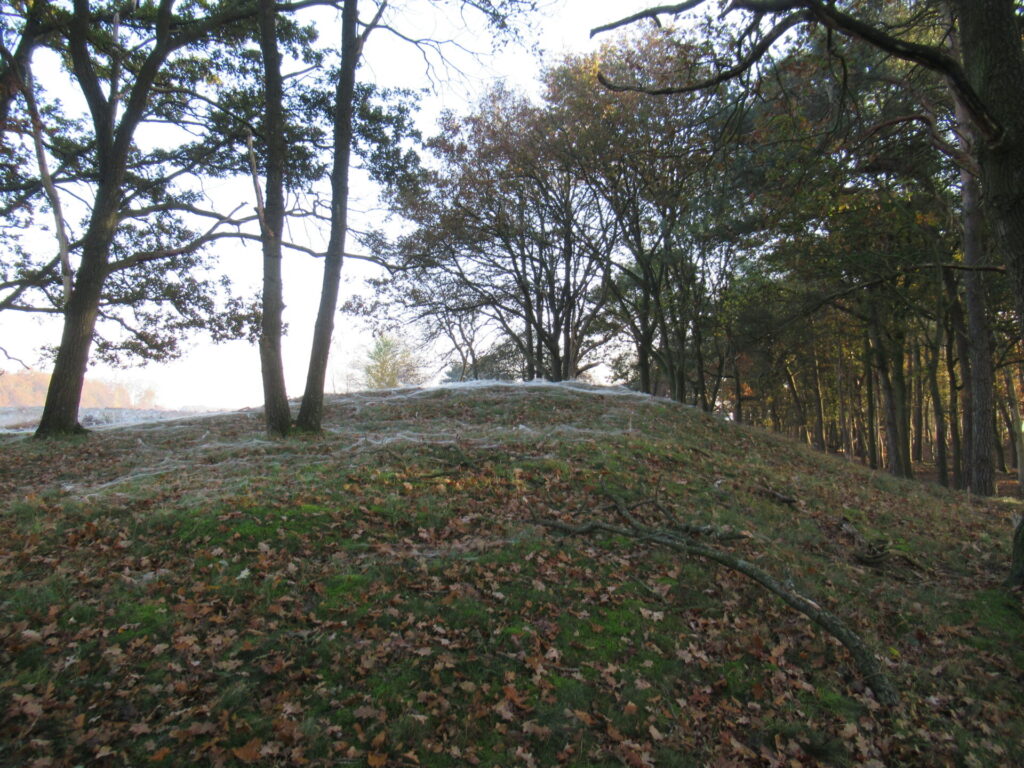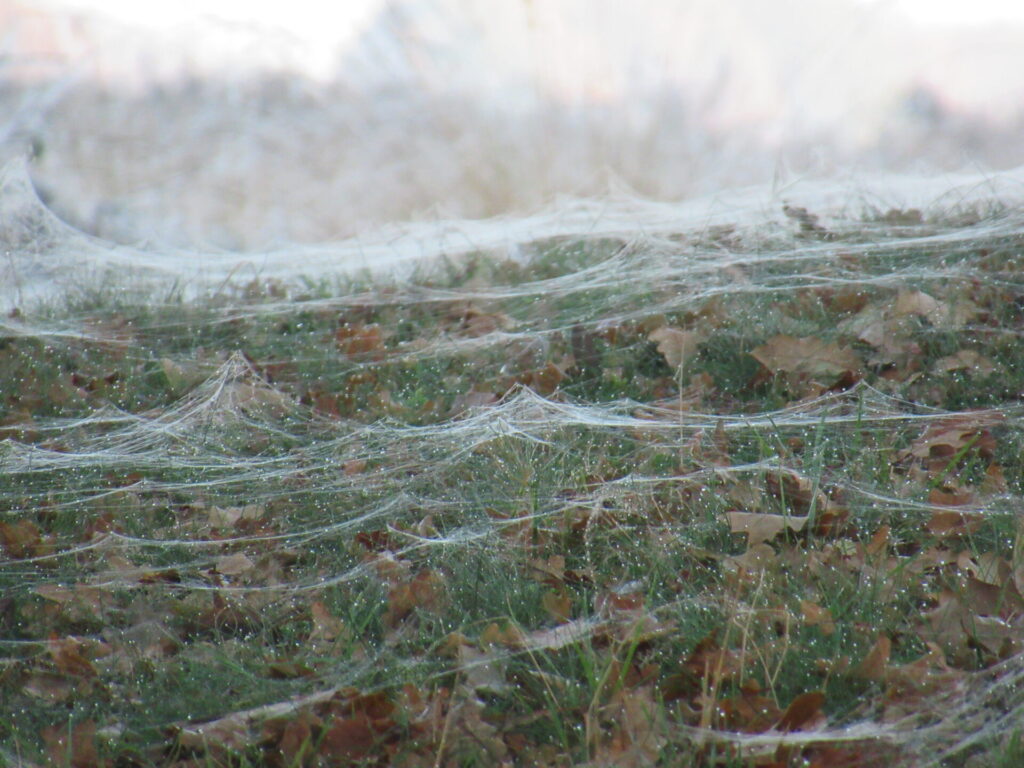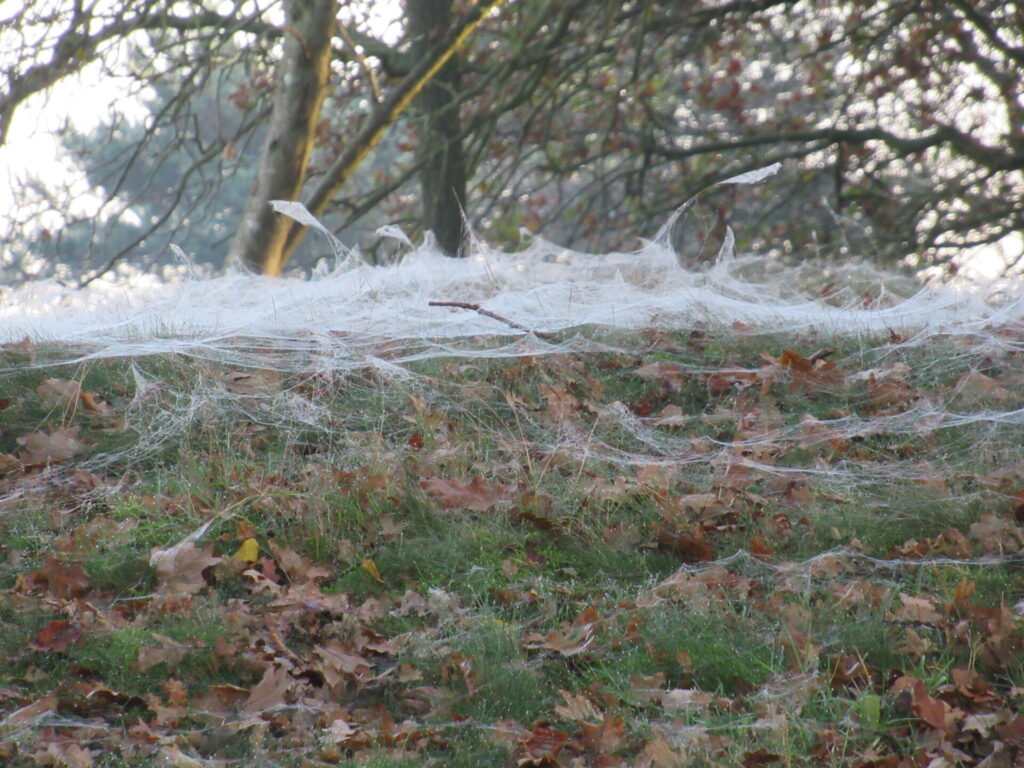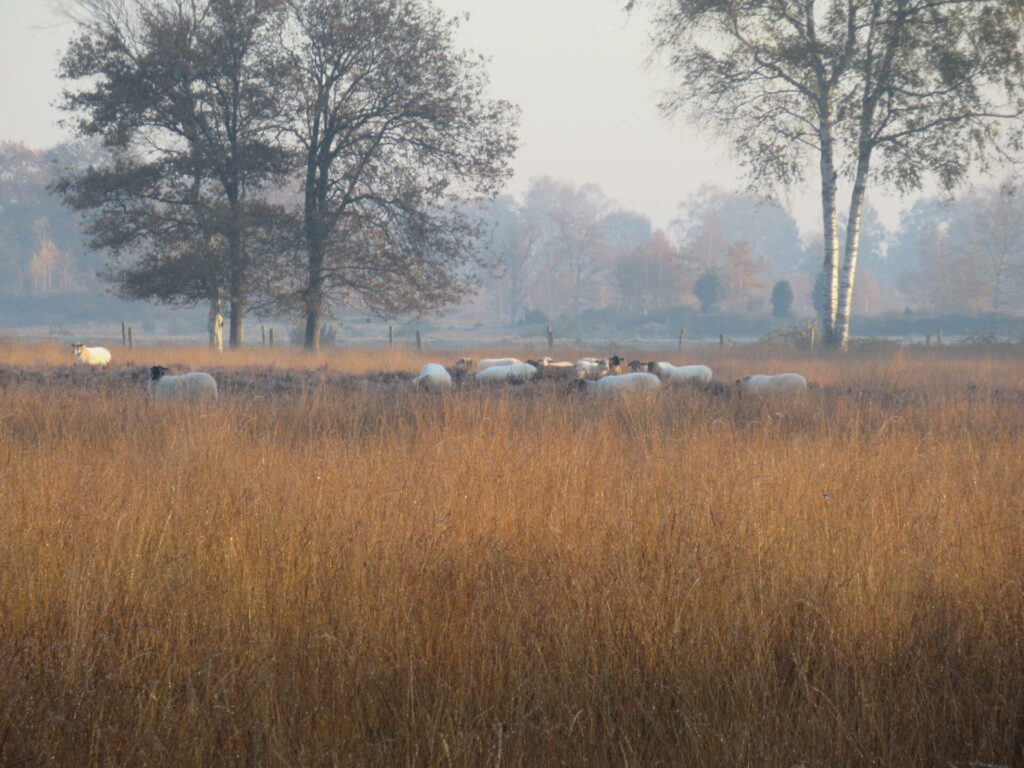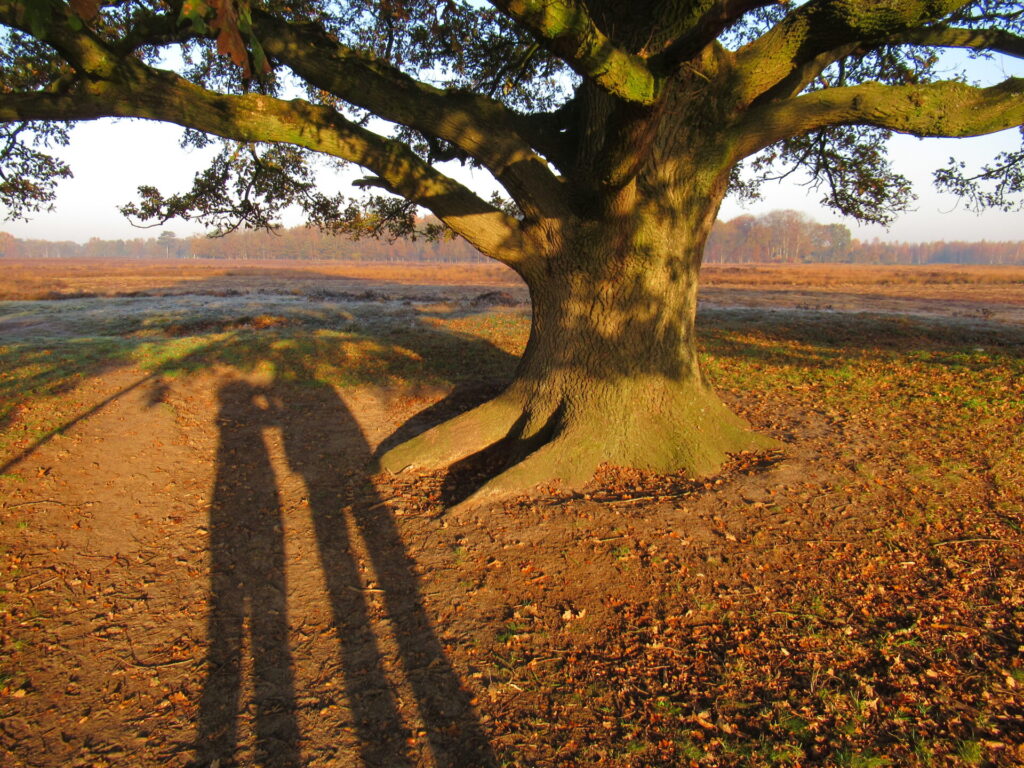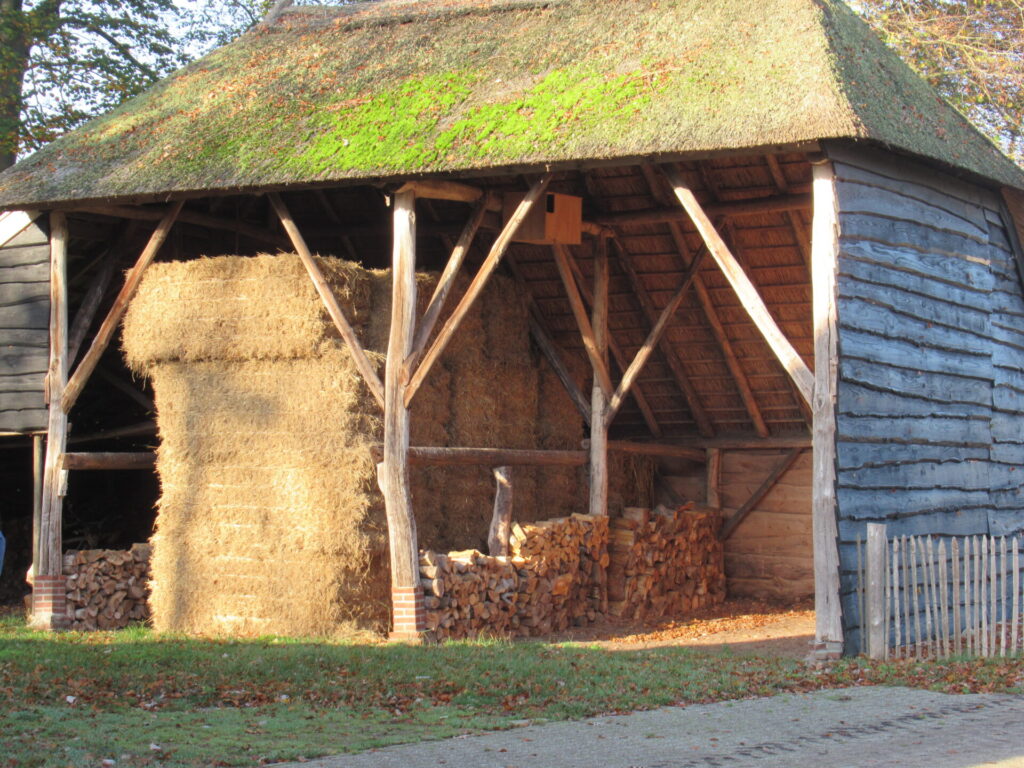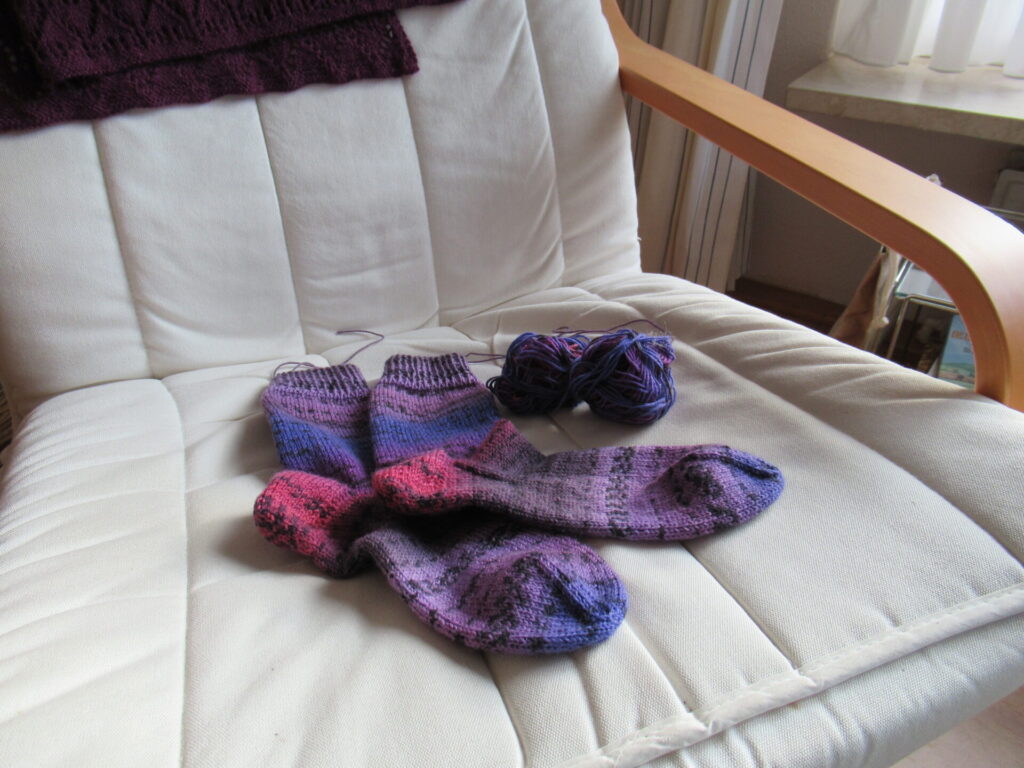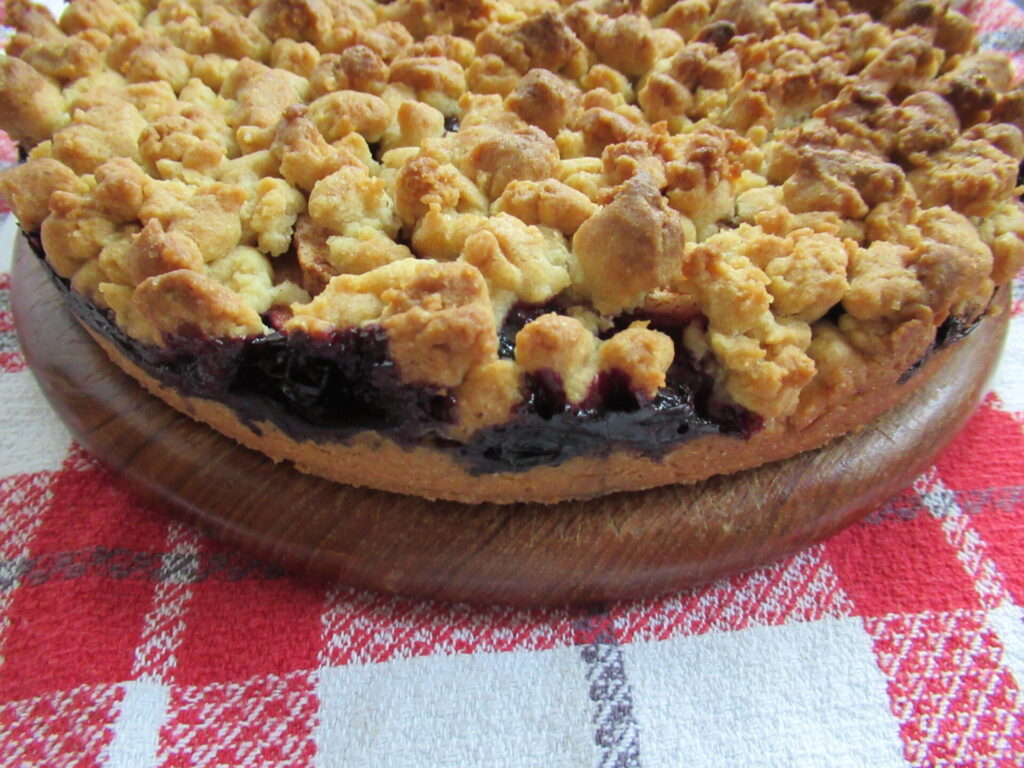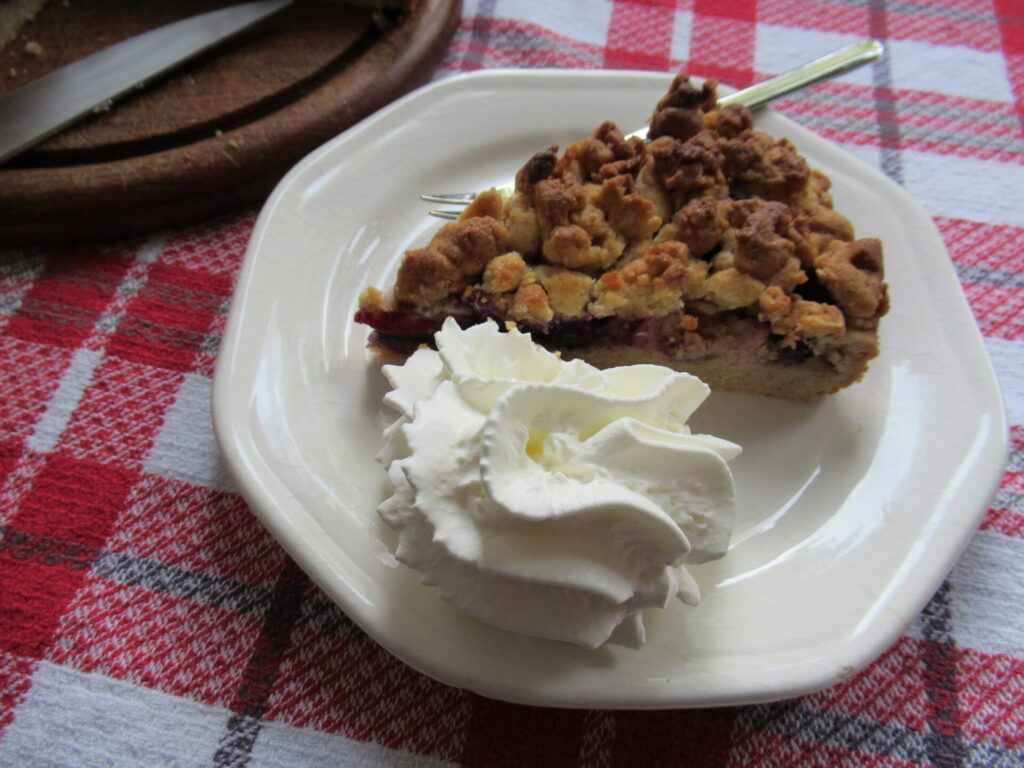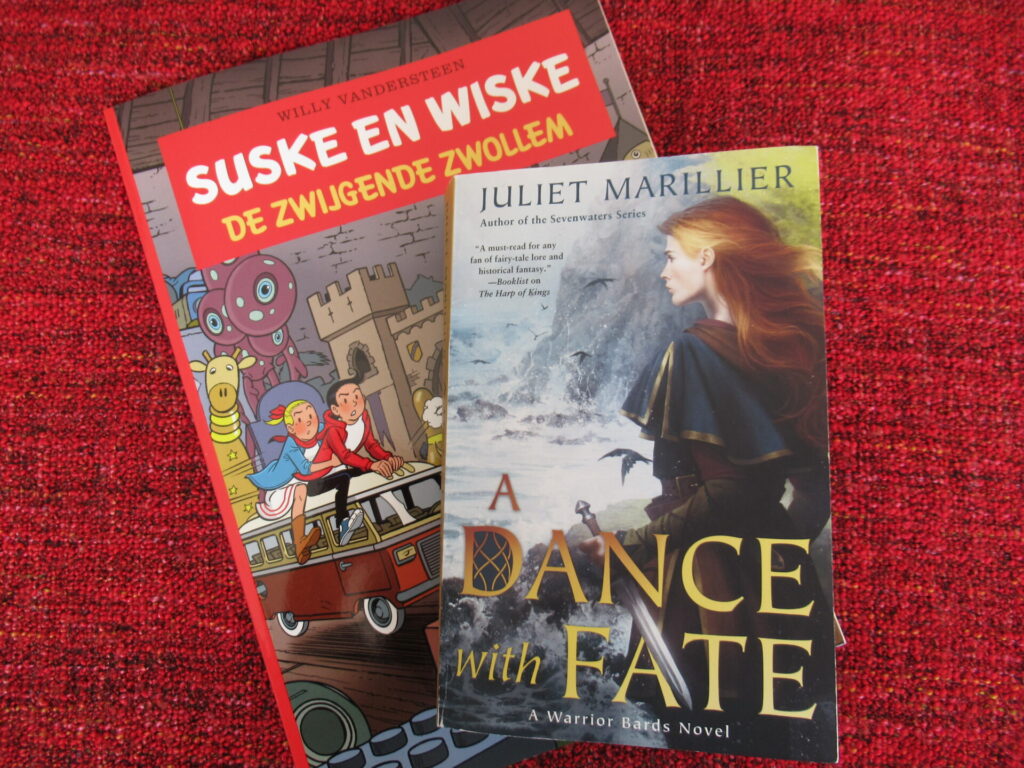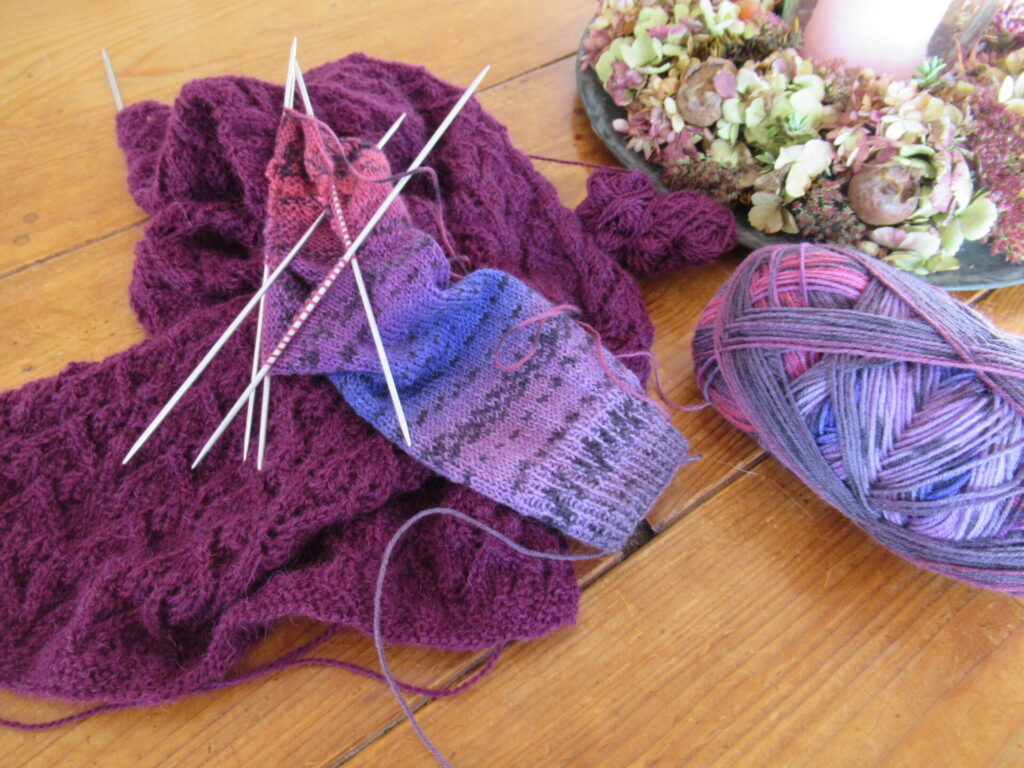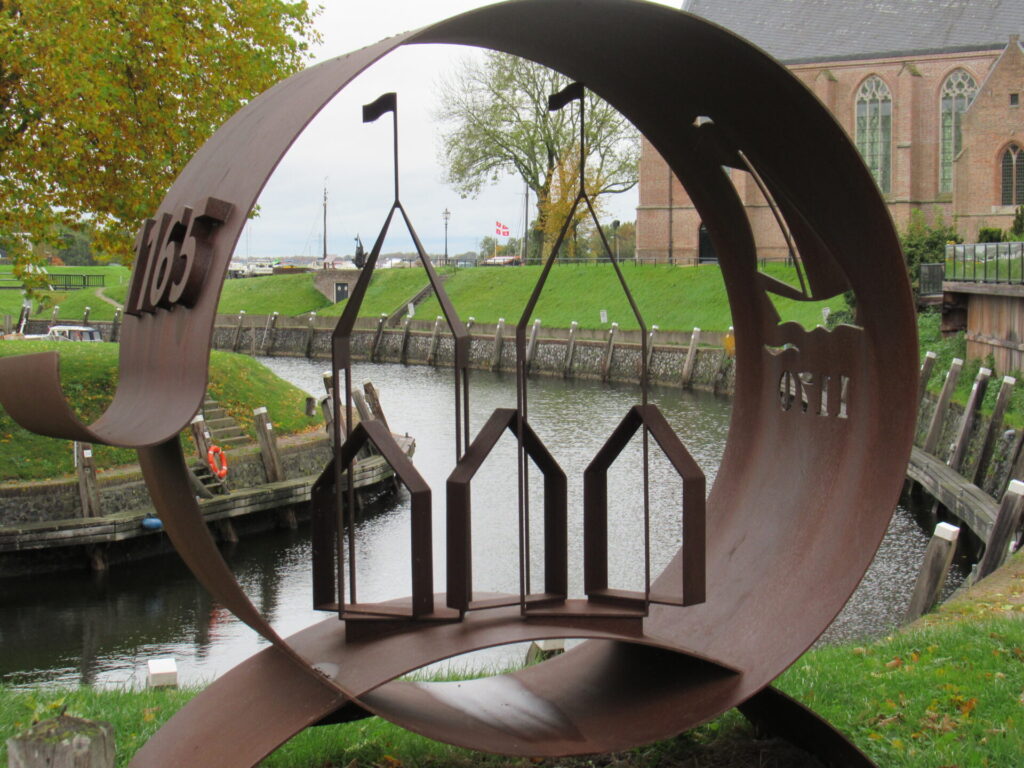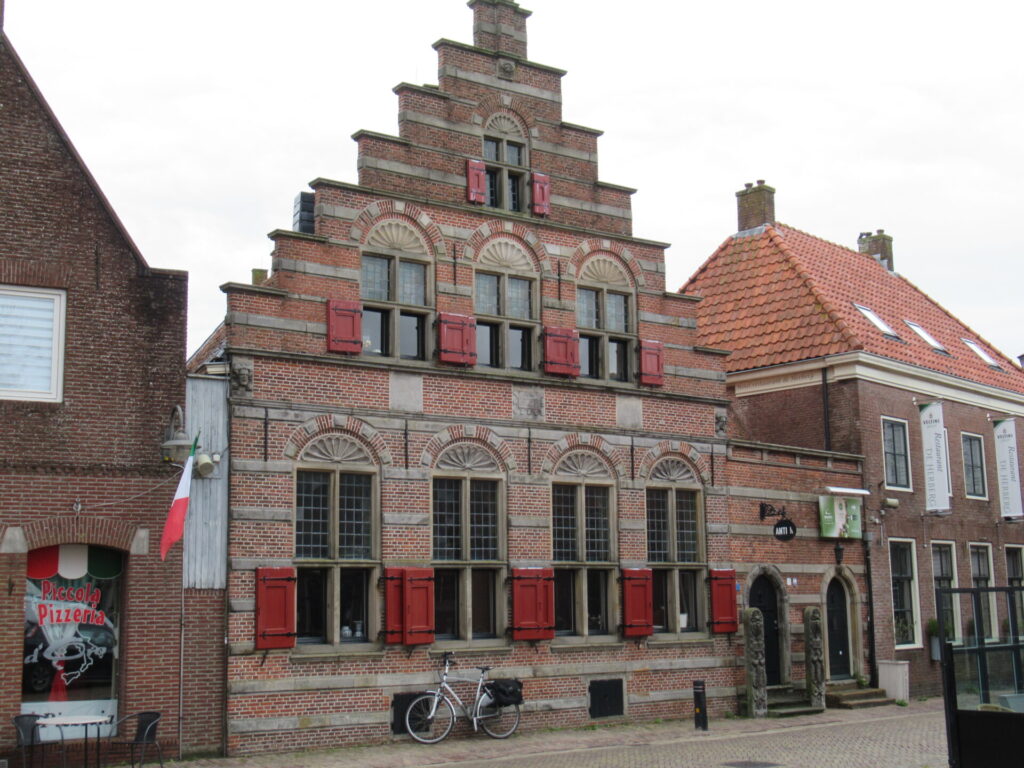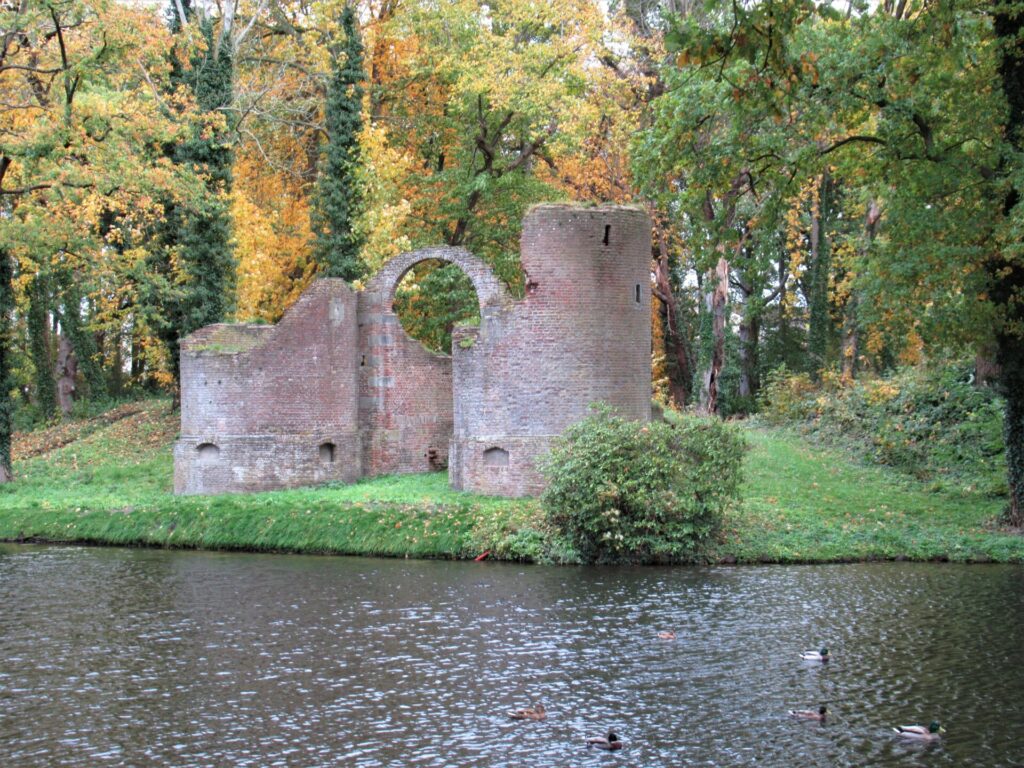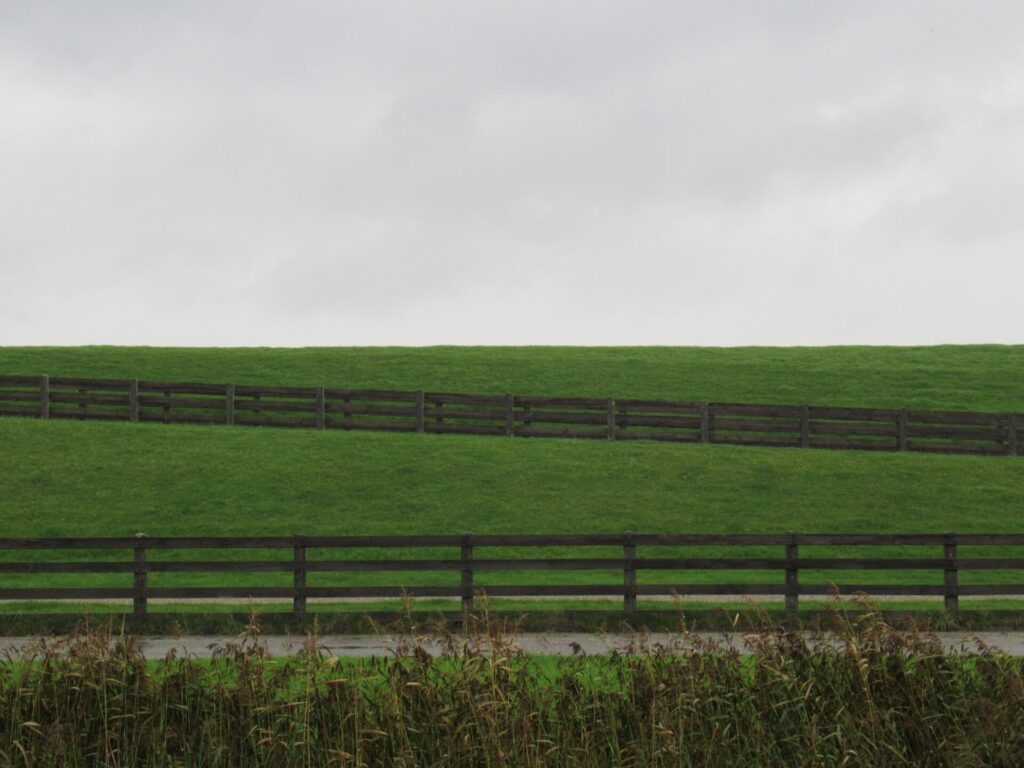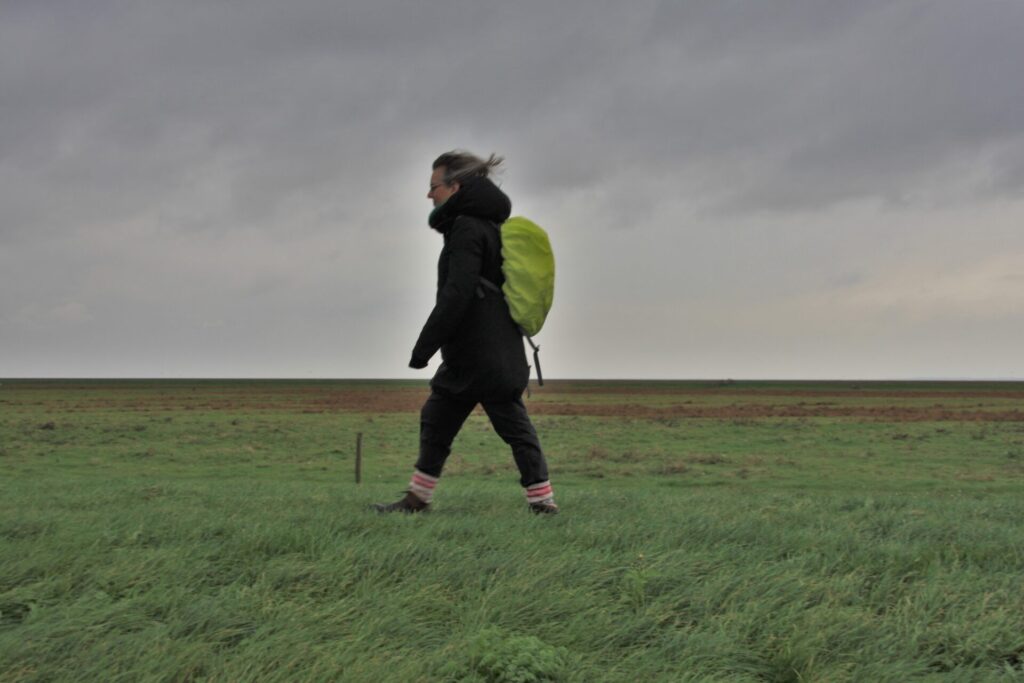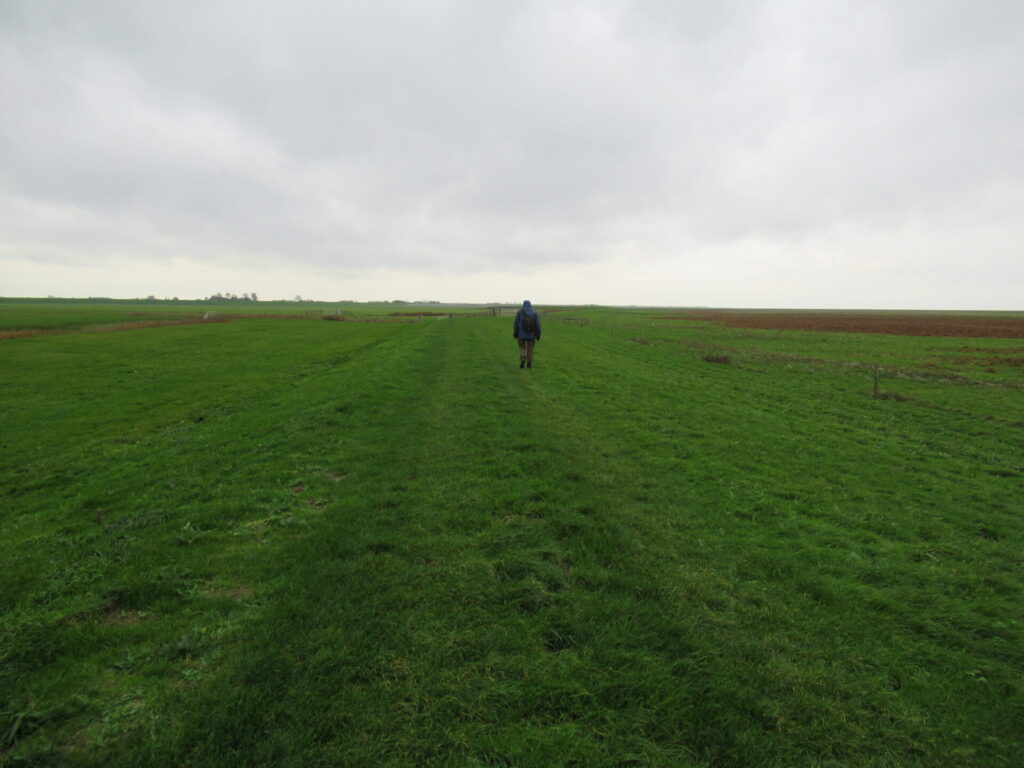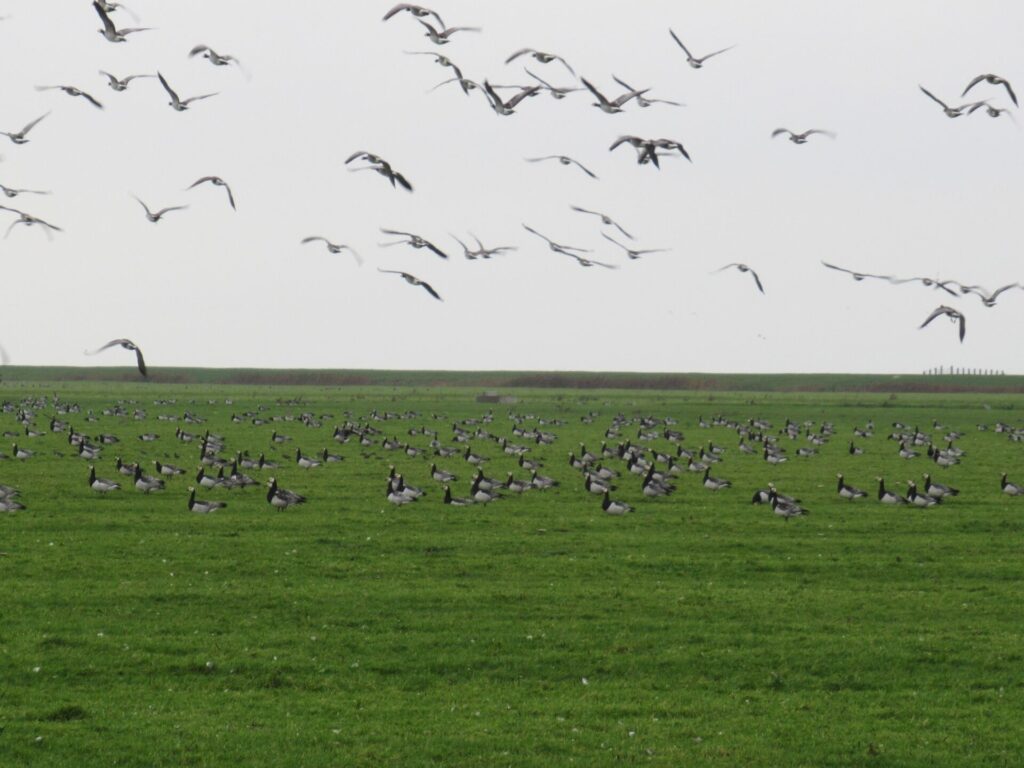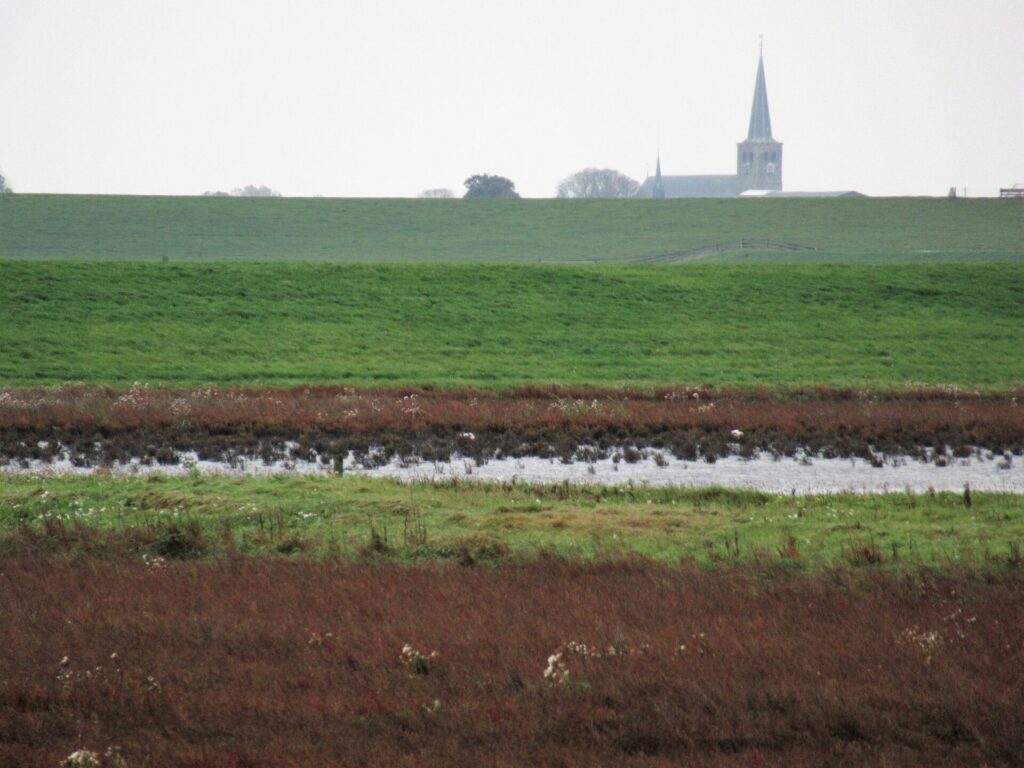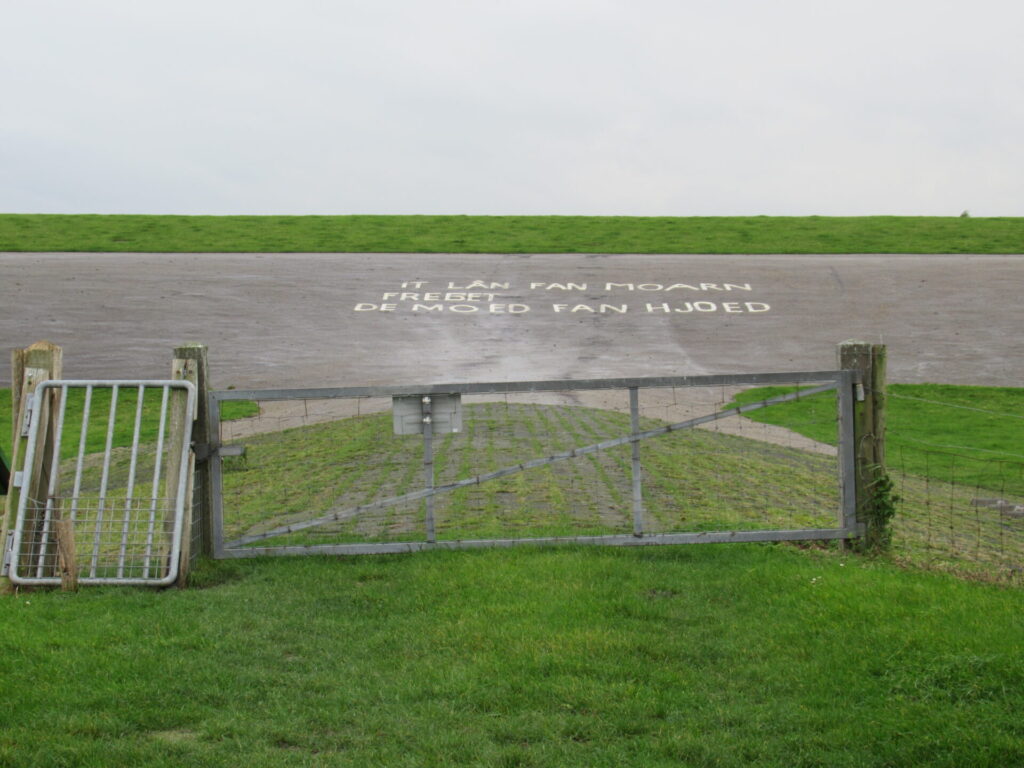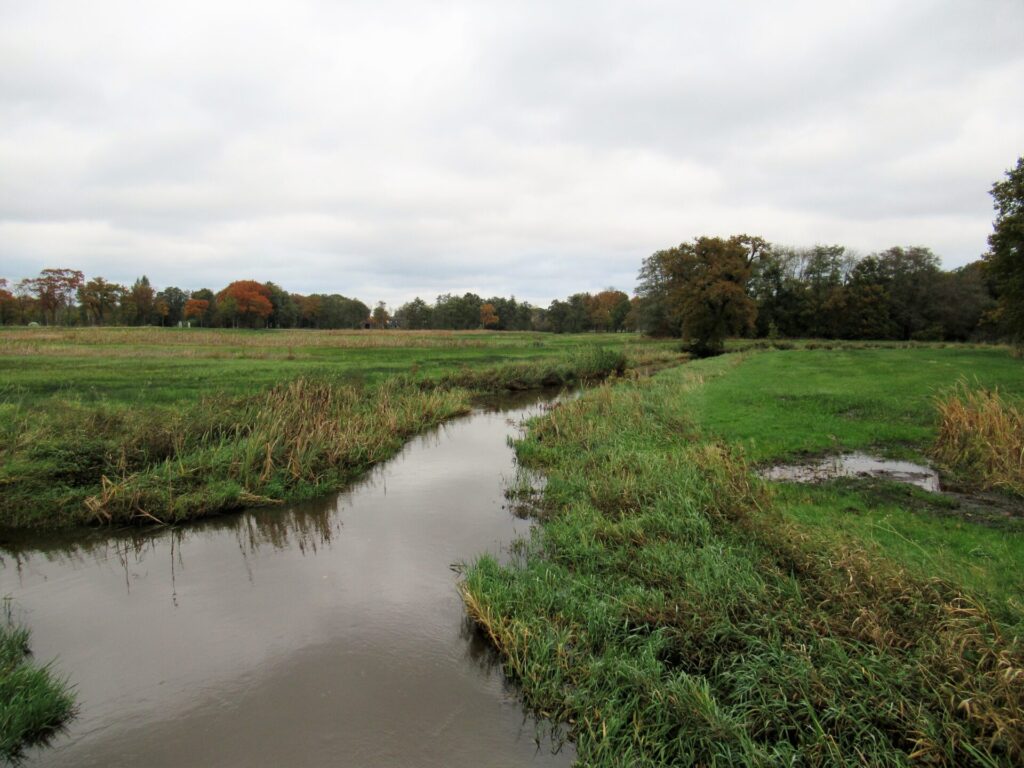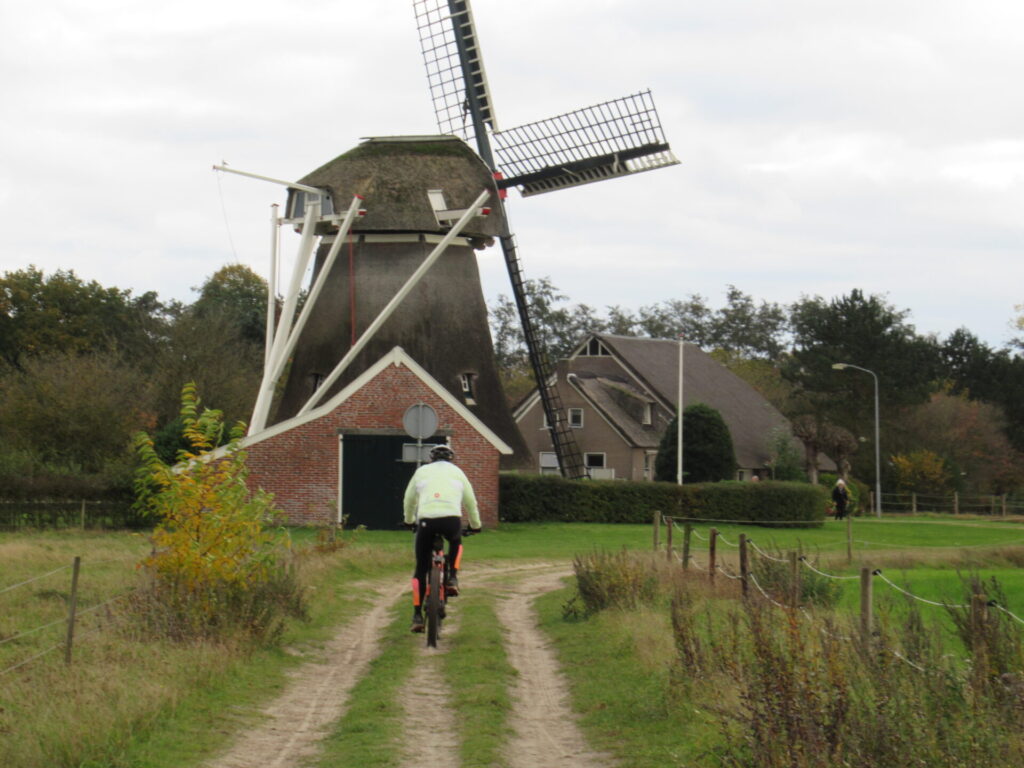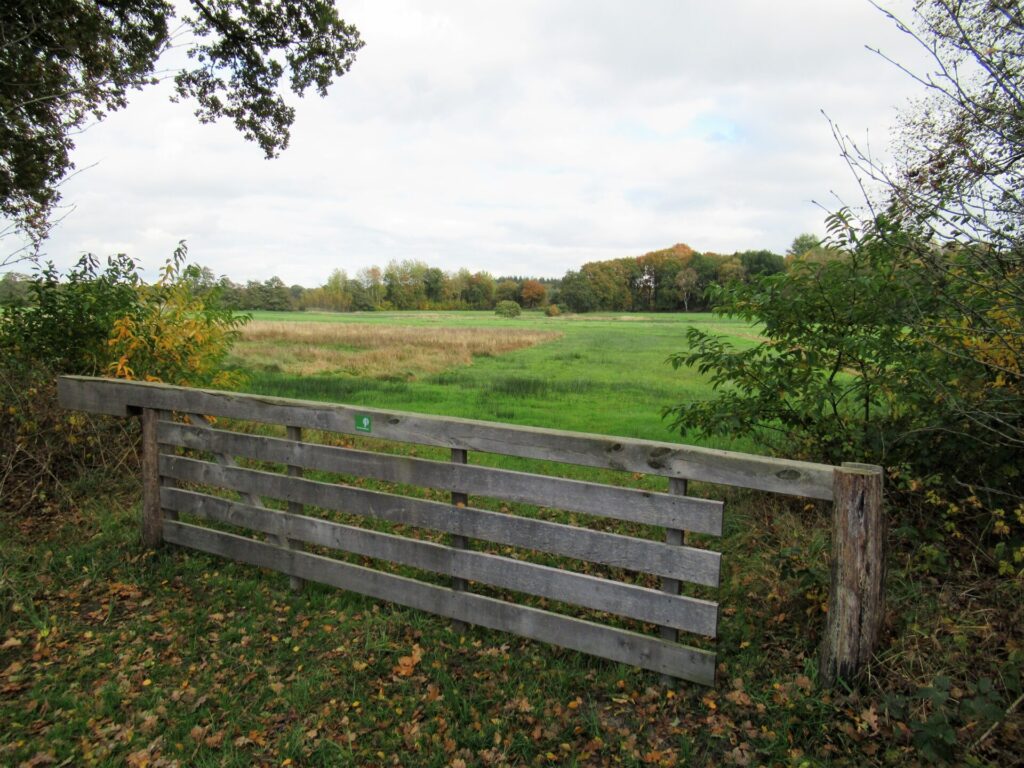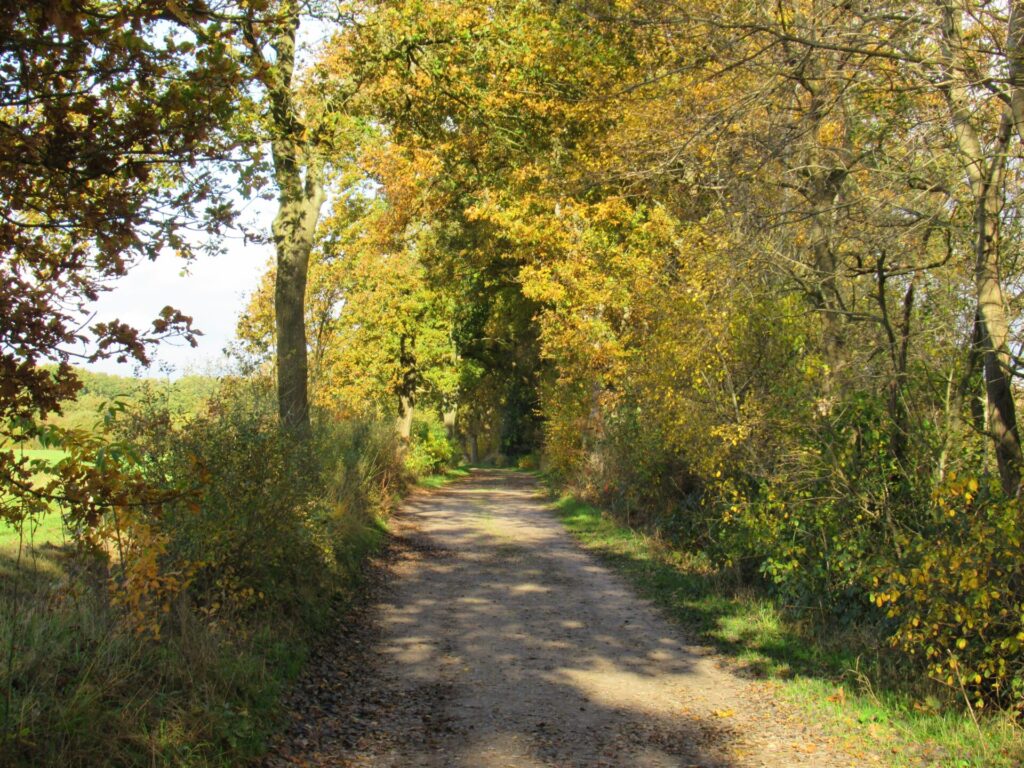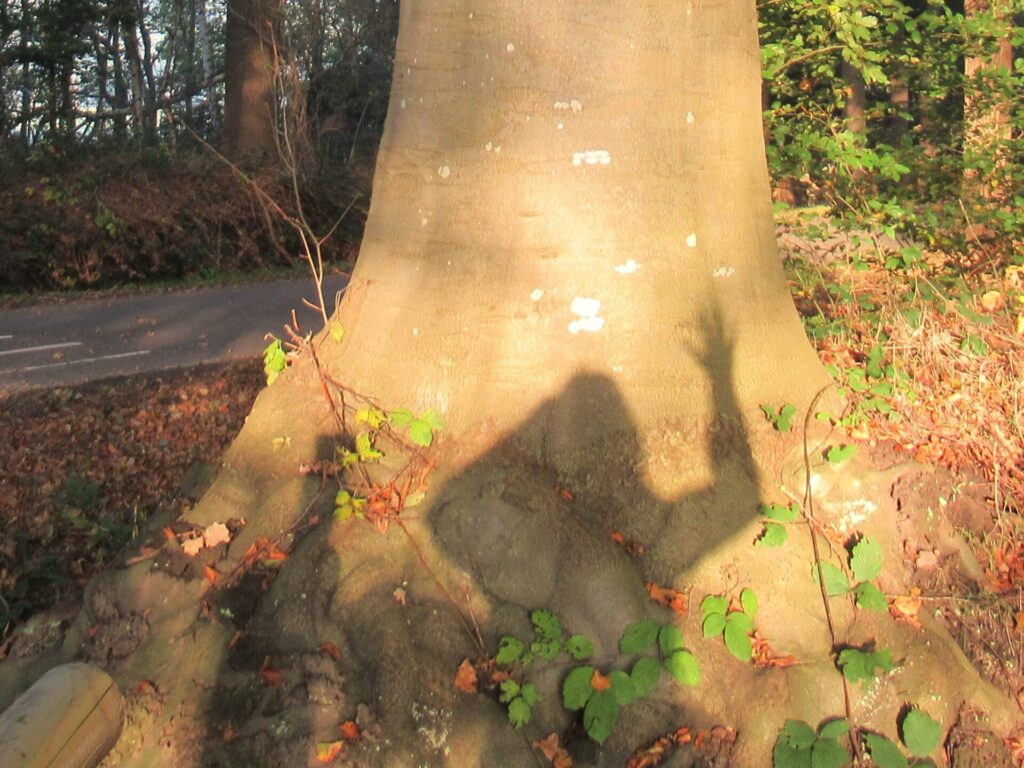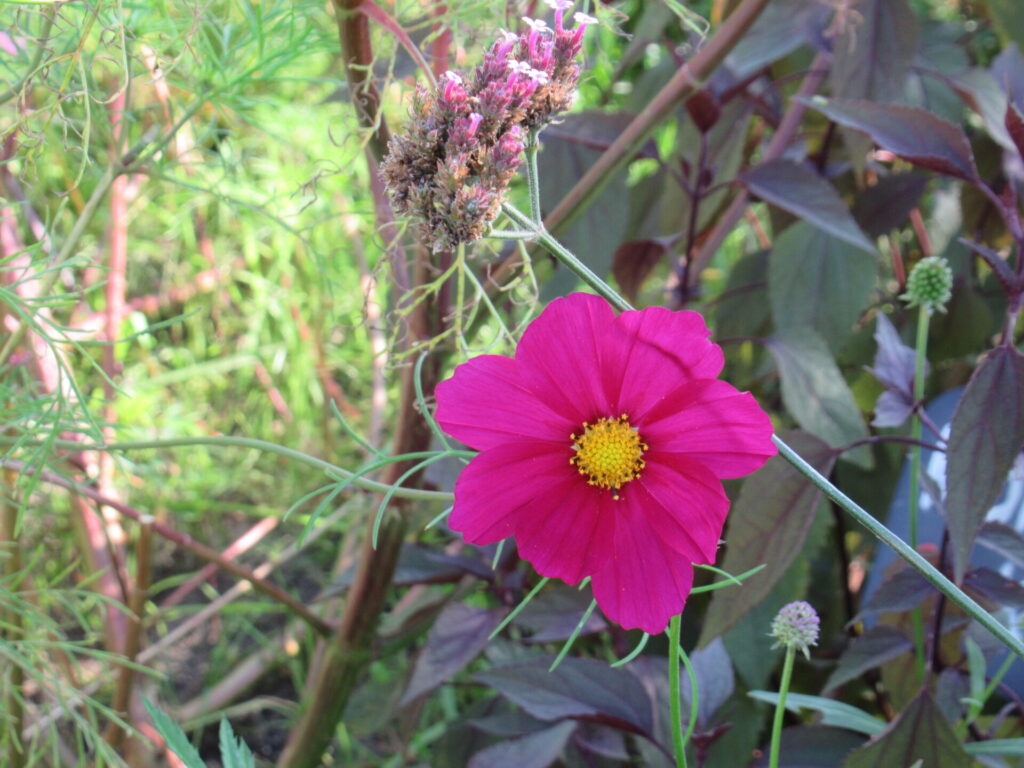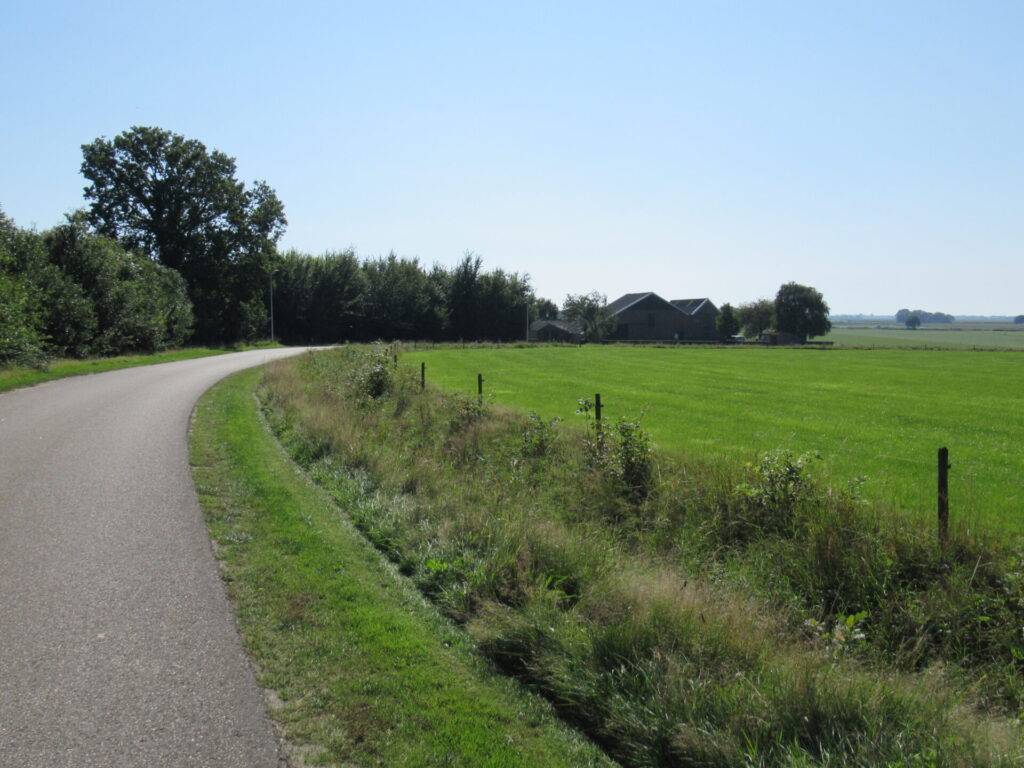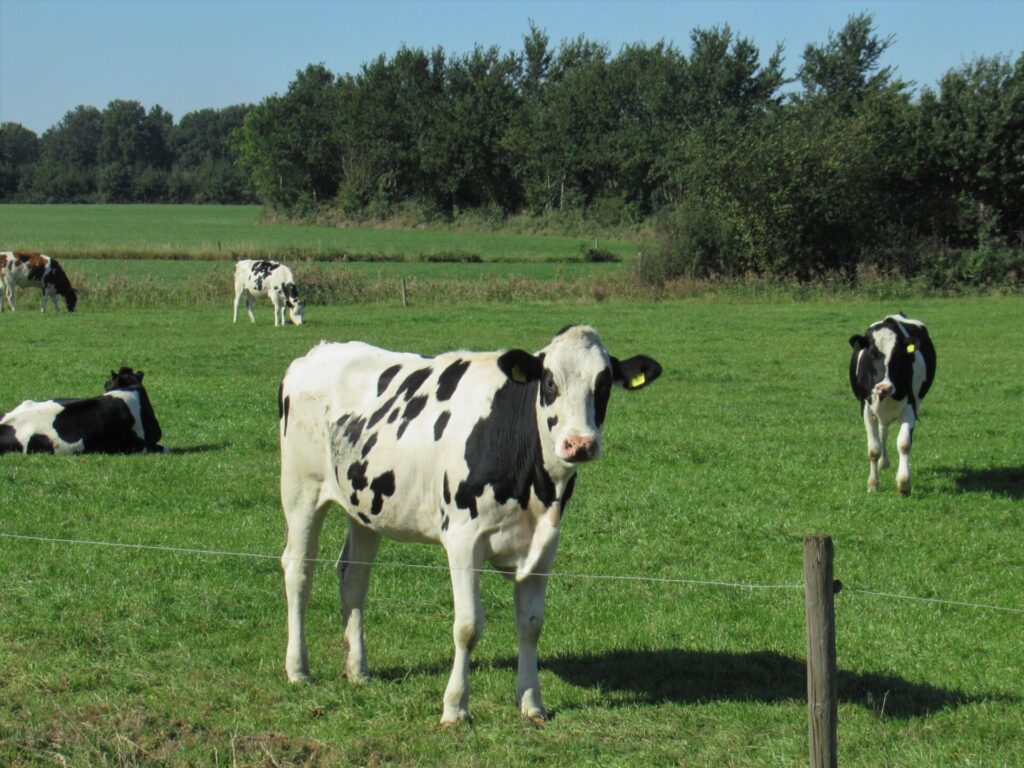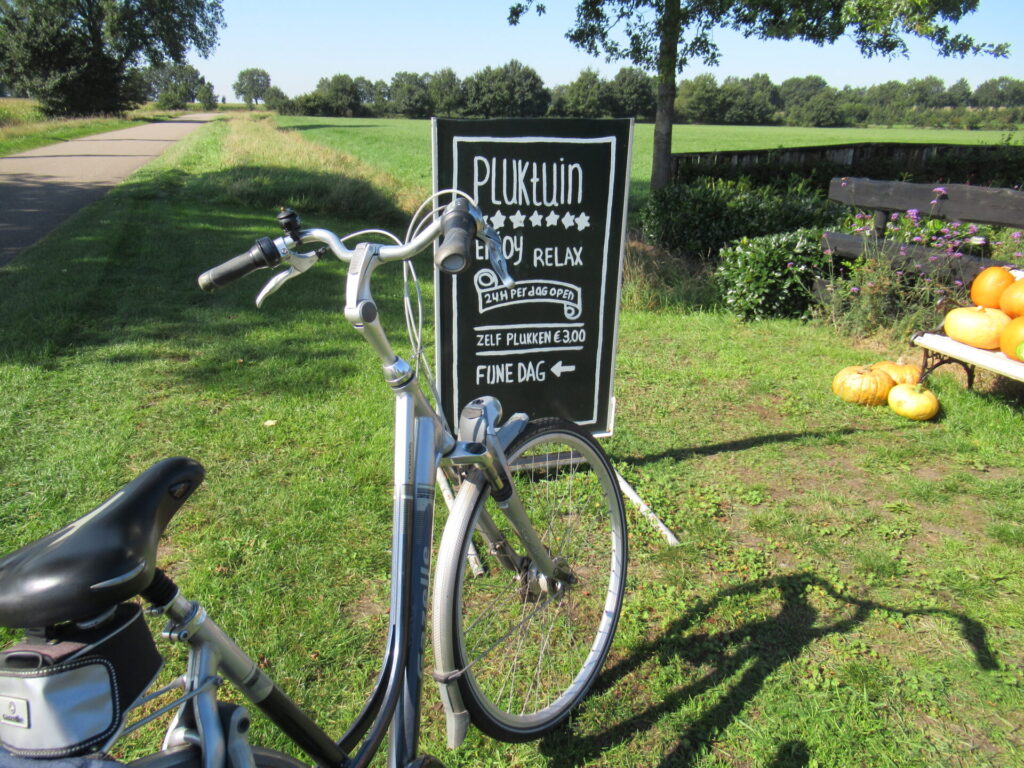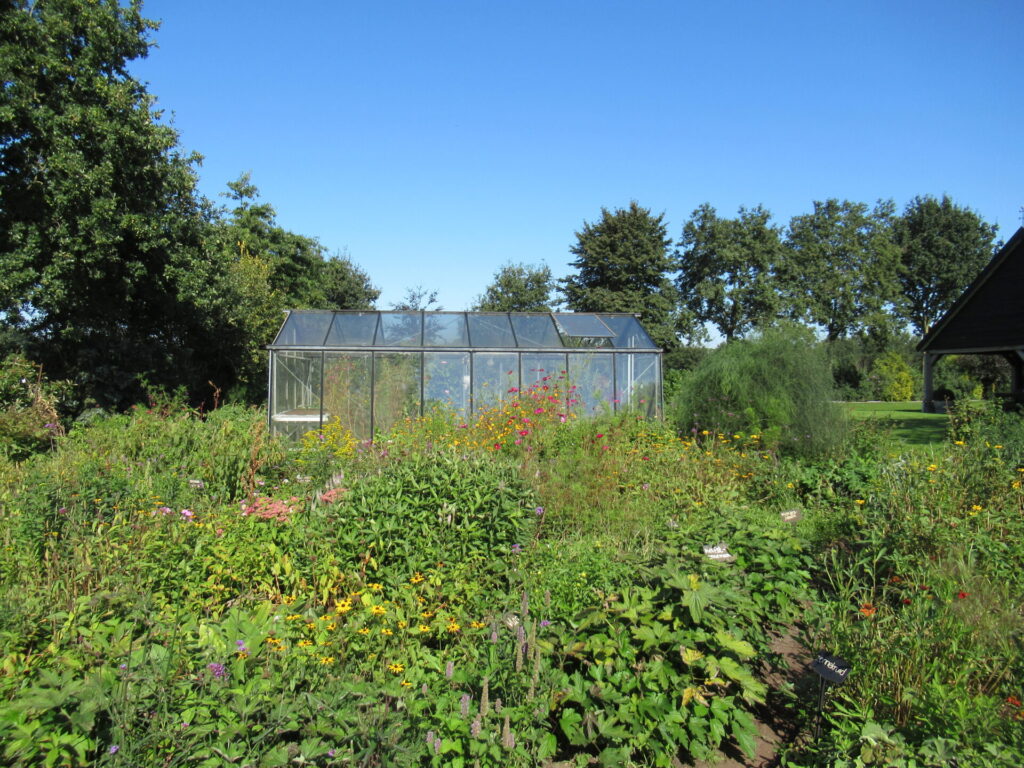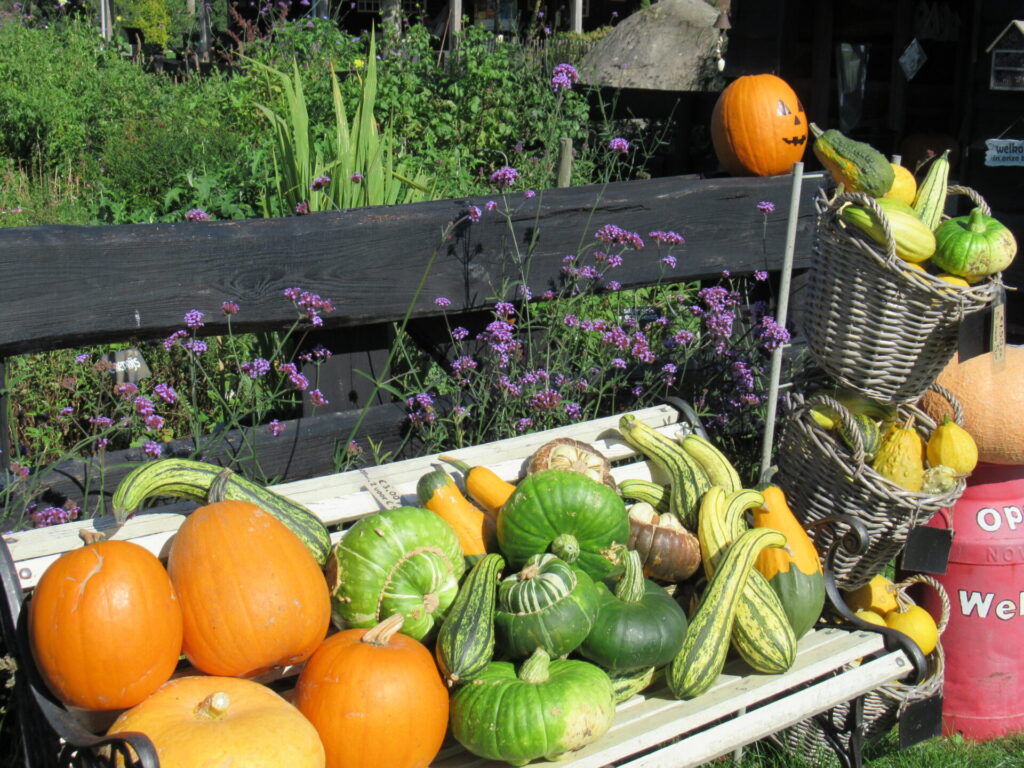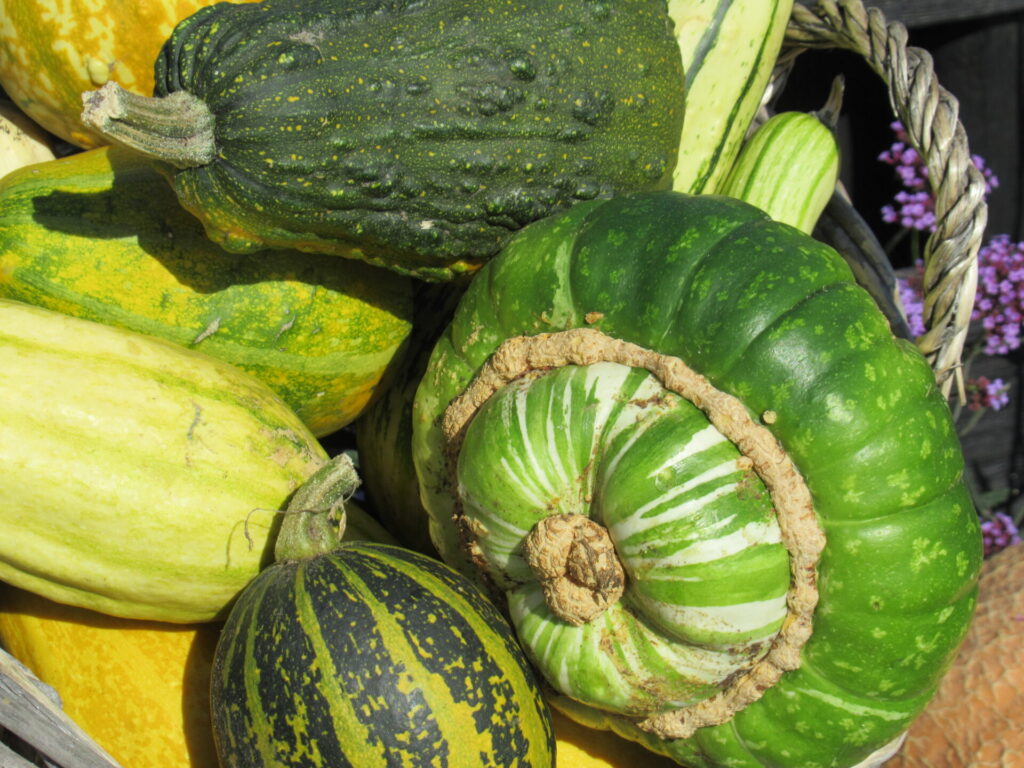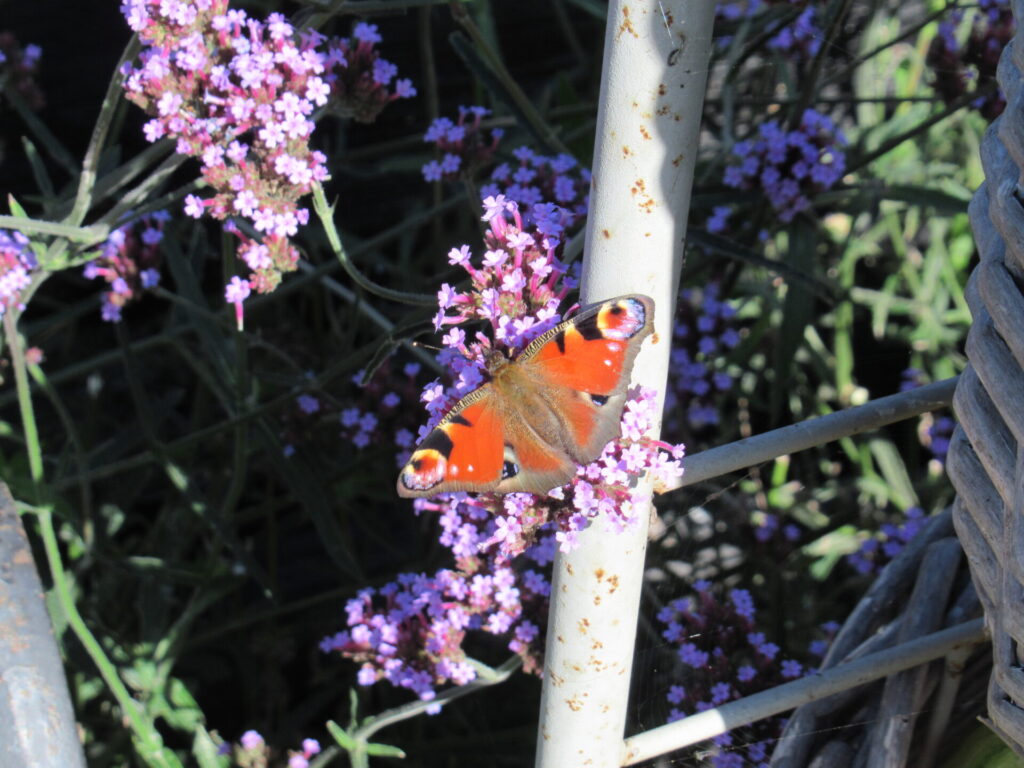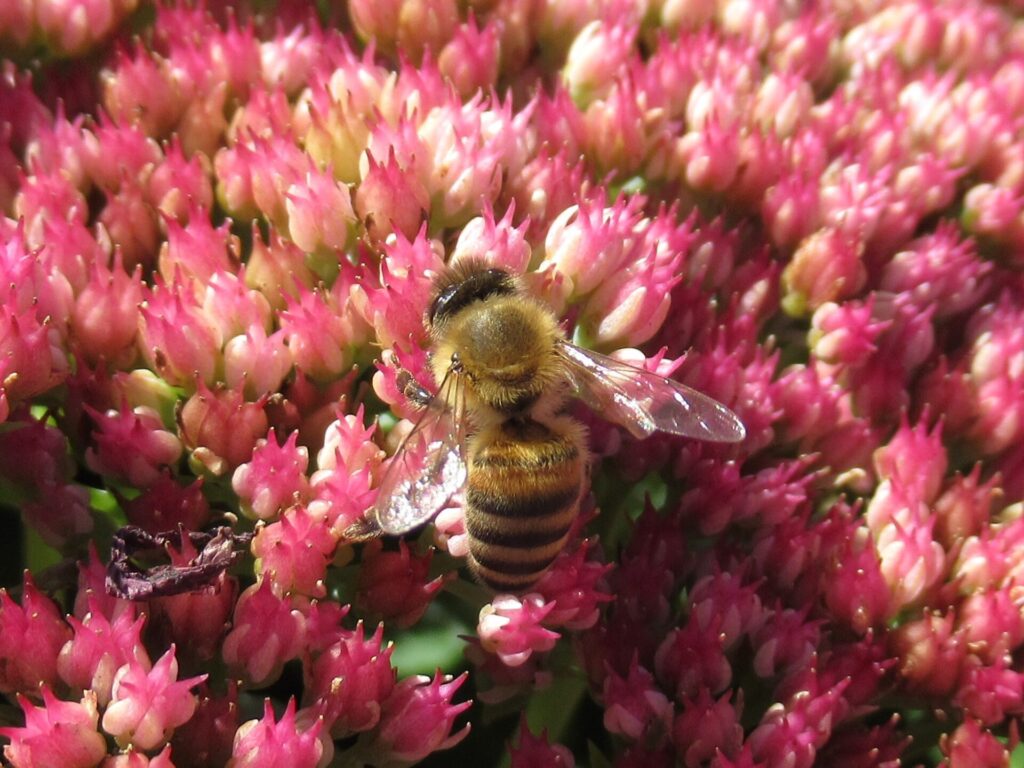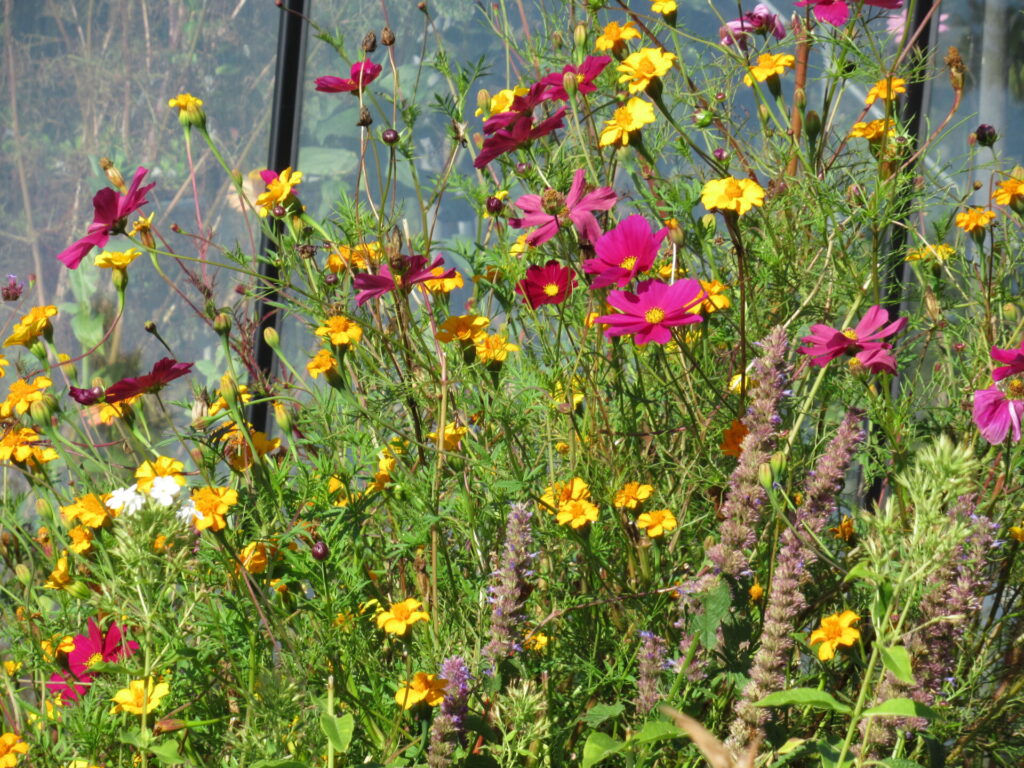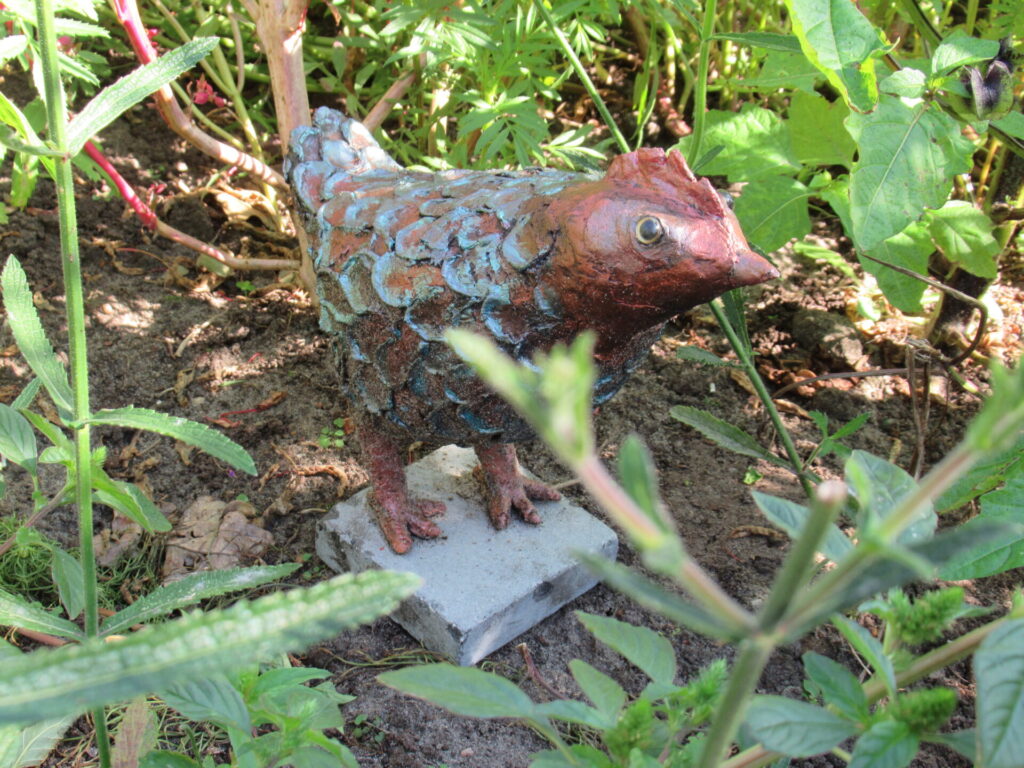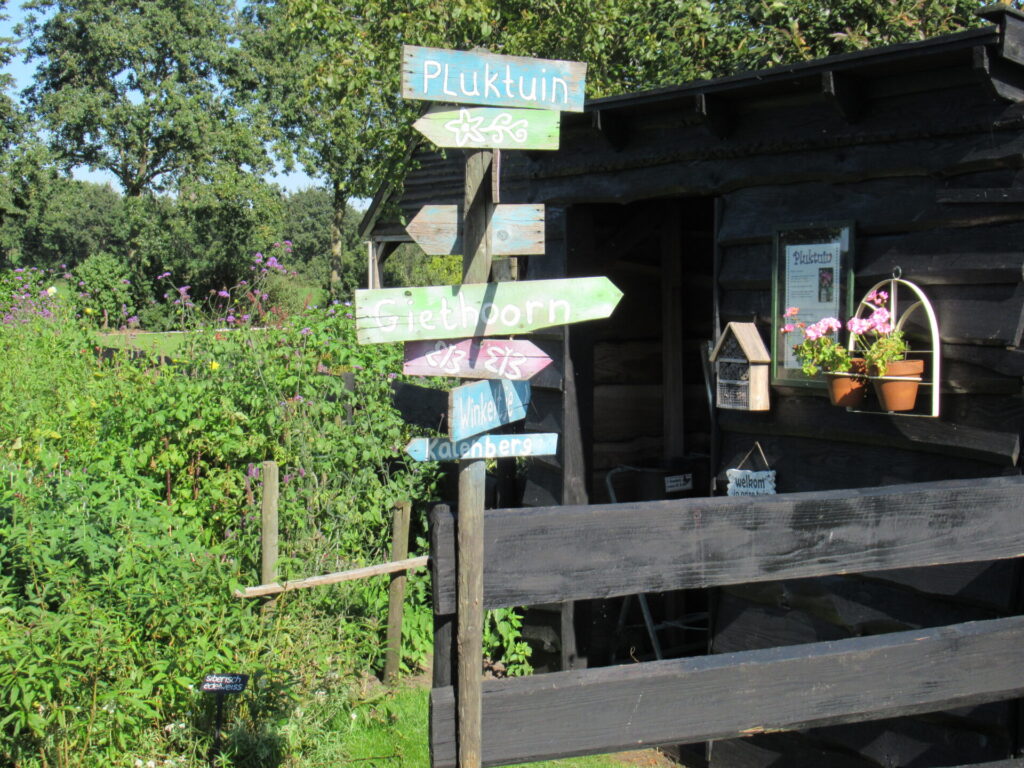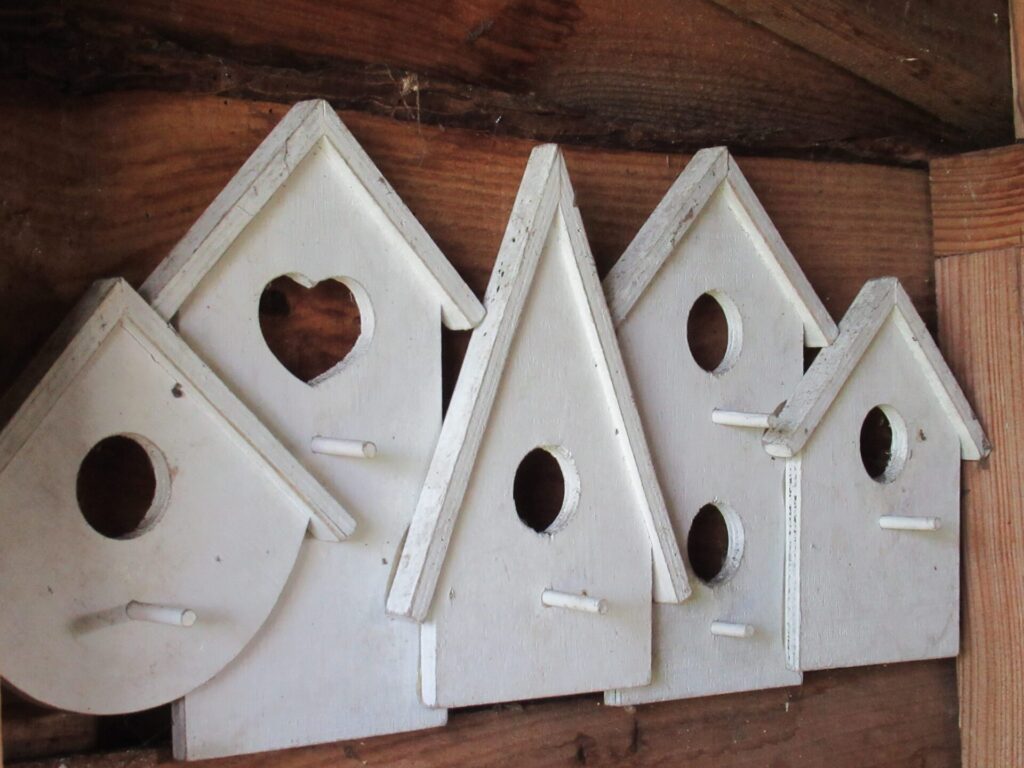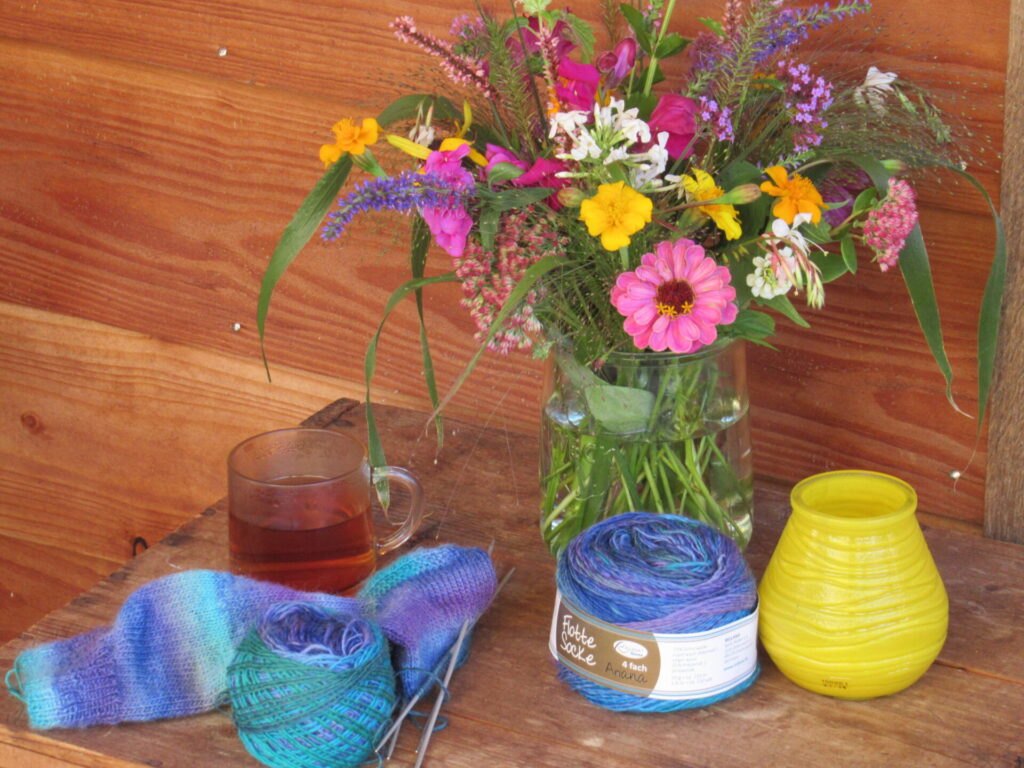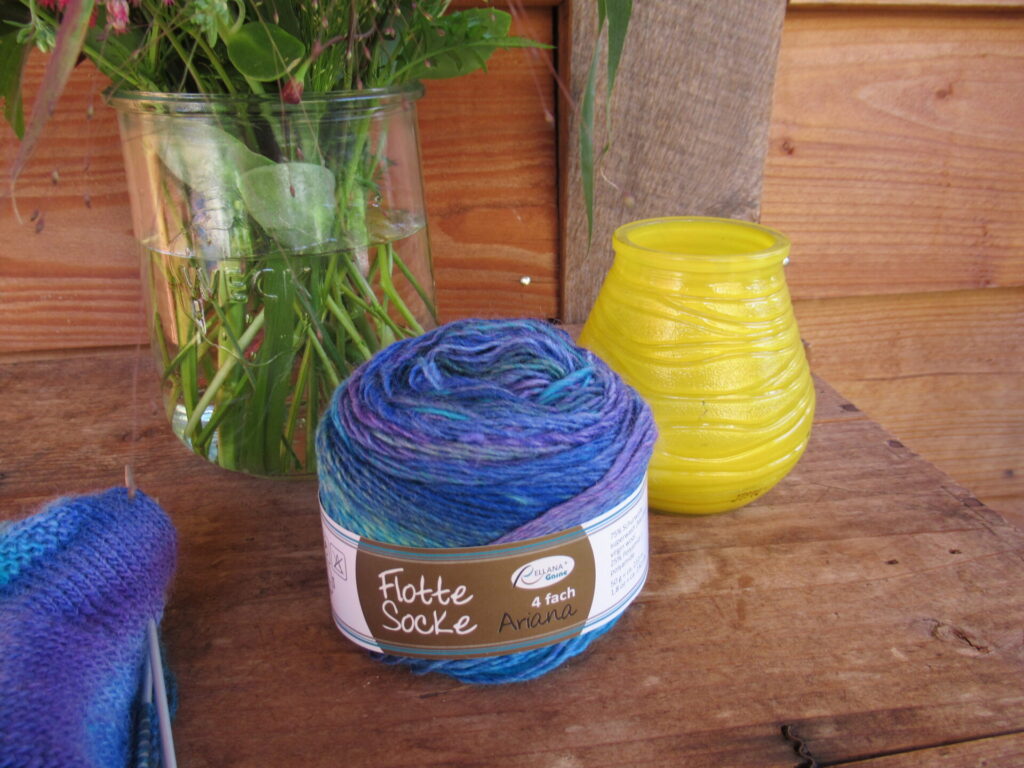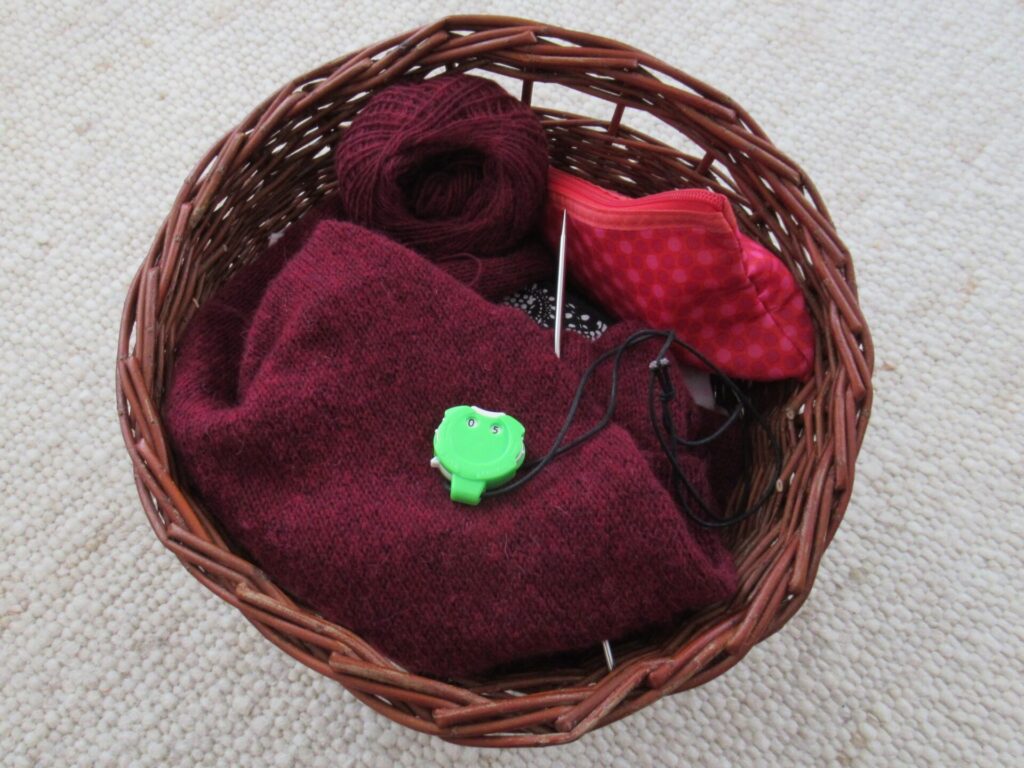
Hello!
With only a few days to go to the autumn equinox, the end of summer is in sight. It is still around 20˚C (68˚F) during the daytime here, but in the mornings the smell of autumn is in the air and some days have a misty start.
It’s that transition time, with the heather still in bloom…
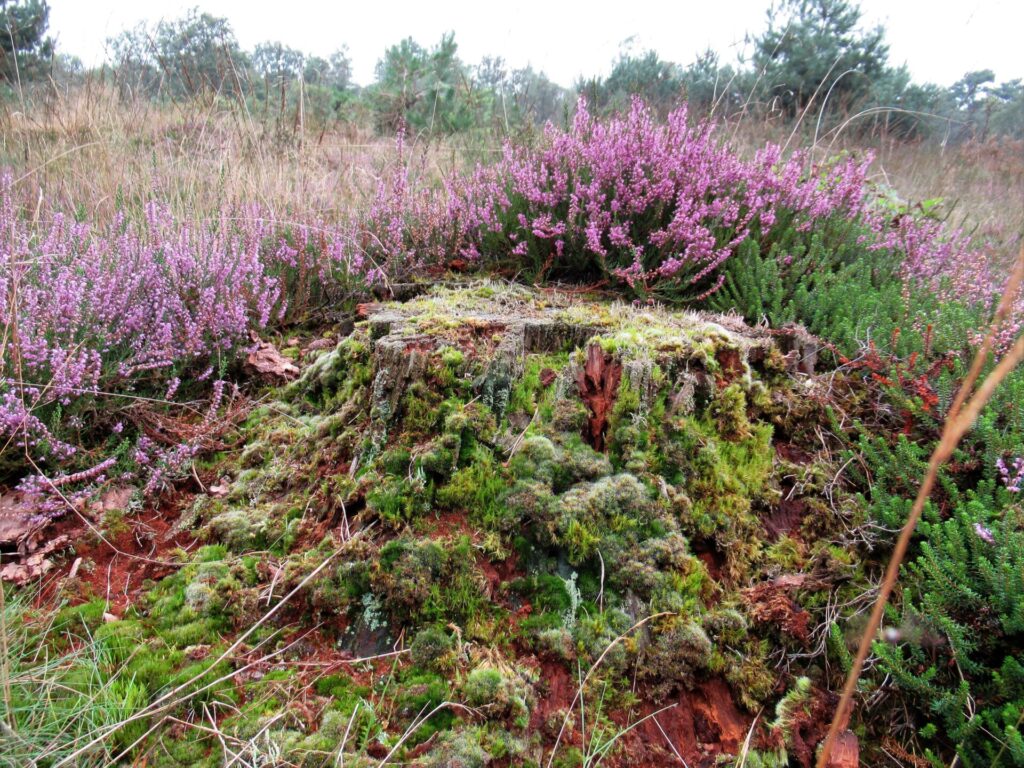
… but also loads of mushrooms and toadstools already, some with elegant skirts…
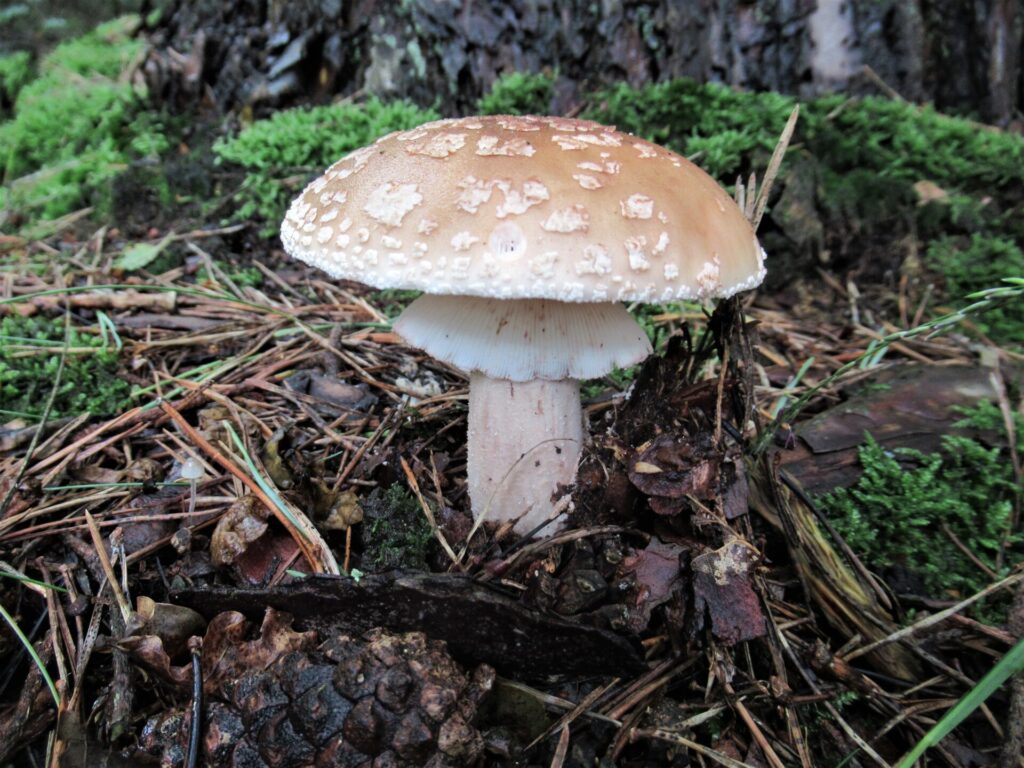
… some in bright yellows, oranges and reds.
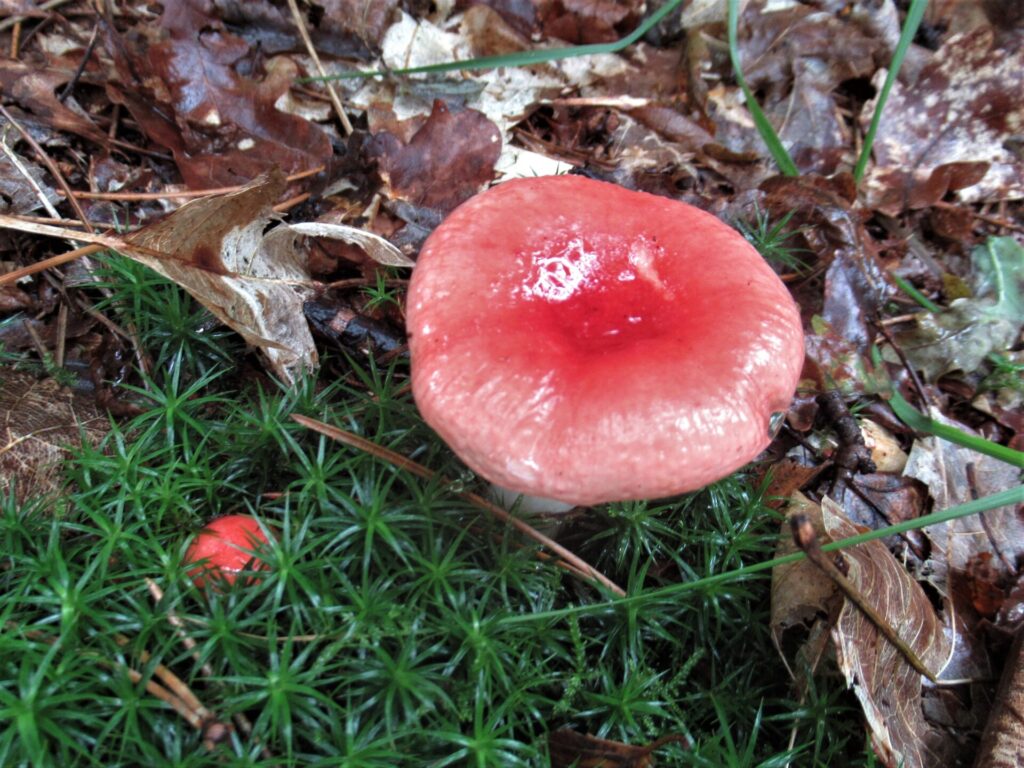
The garden is past its best, but there are still some late roses and a few flowers on the buddleia. On our garden table the friendly faces of the pansies brought along by a friend remind me of the lovely afternoon spent knitting in the garden with a small delegation of my knitting group.
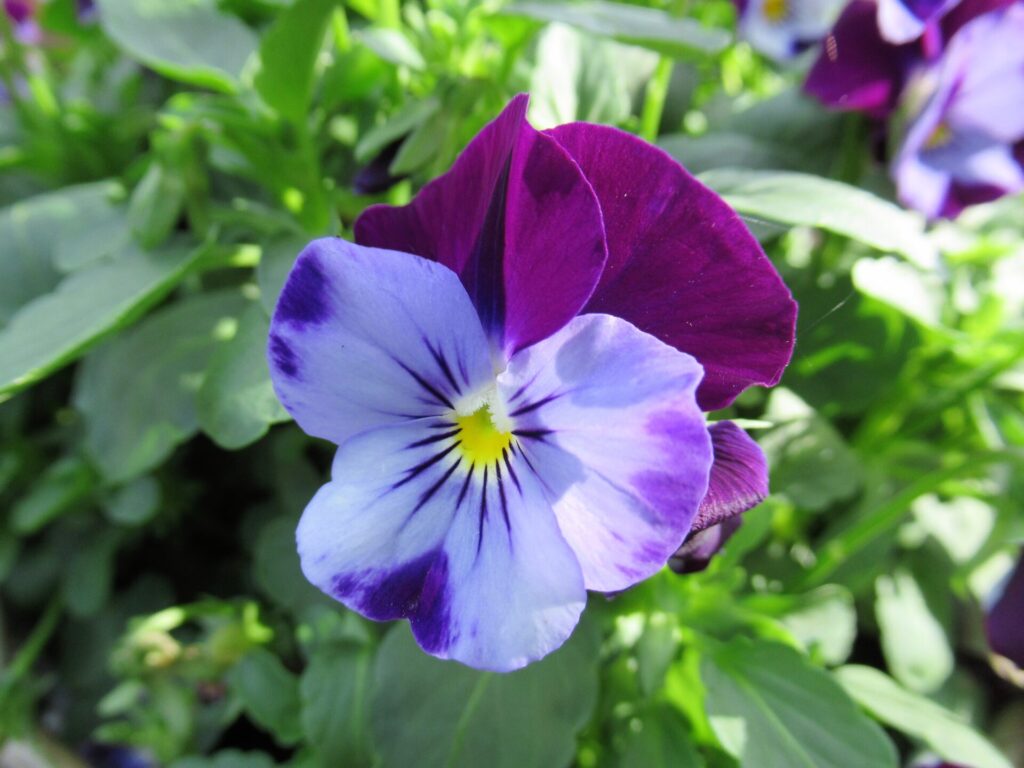
I know that for many people the end of summer is a melancholy time, with rainy days and dark nights approaching. For me, it is the other way around. I feel much more in my element in the other three seasons, with their cooler weather and more muted light. I actually enjoy rainy days, with the water drip-dripping from the berries in the hedgerows.
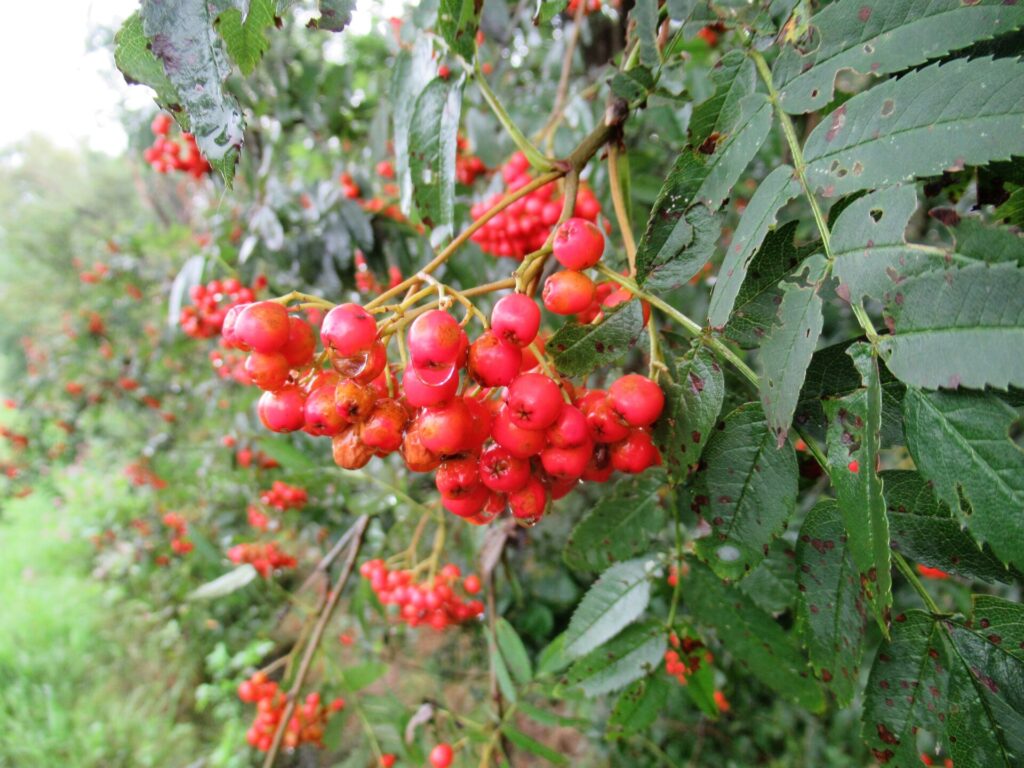
And I am looking forward to the long dark evenings, with lots of time for knitting. My great big striped linen stitch wrap has come out of its summer storage. The back of the fabric is almost as nice as the front and looks a bit like seed stitch.
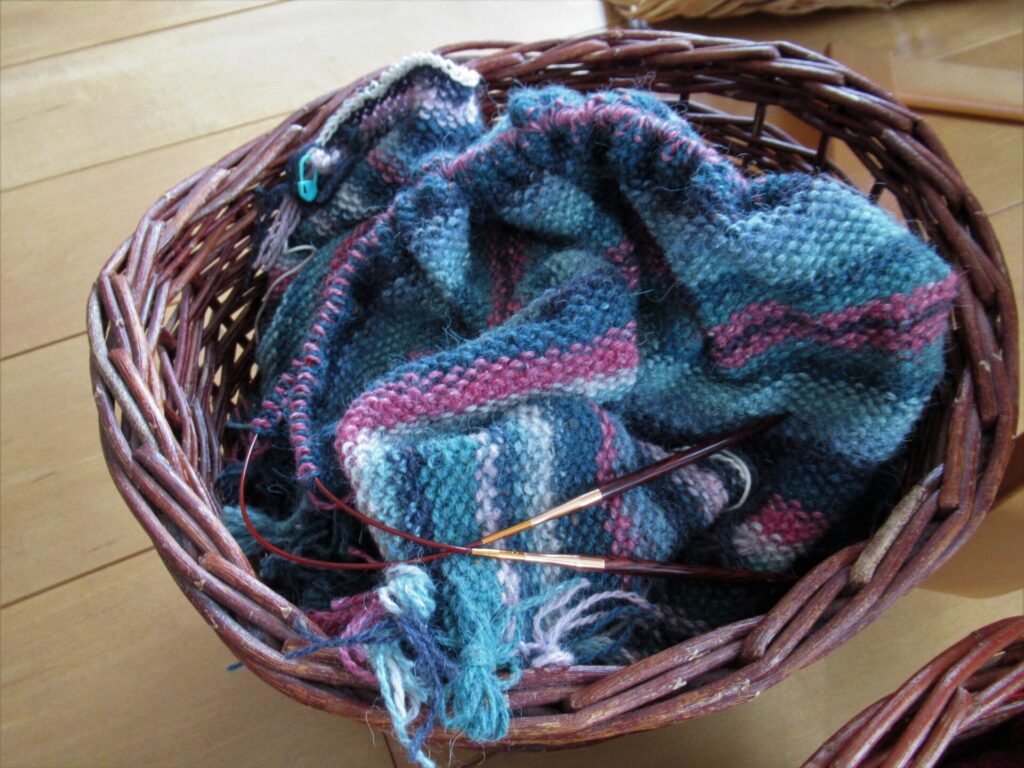
My linen yarn, on the other hand, is now going into storage. I knit a few swatches to see if it would be suitable for a Siw top (Ravelry link) and decided that it isn’t. Knit at the gauge required for that pattern, the fabric became far too open to my liking.
Never mind. I now know how the yarn knits up and what my preferred gauge for it is. I’ll look for a more suitable pattern for it next year, and I’ll look out for a more suitable yarn for Siw as well.
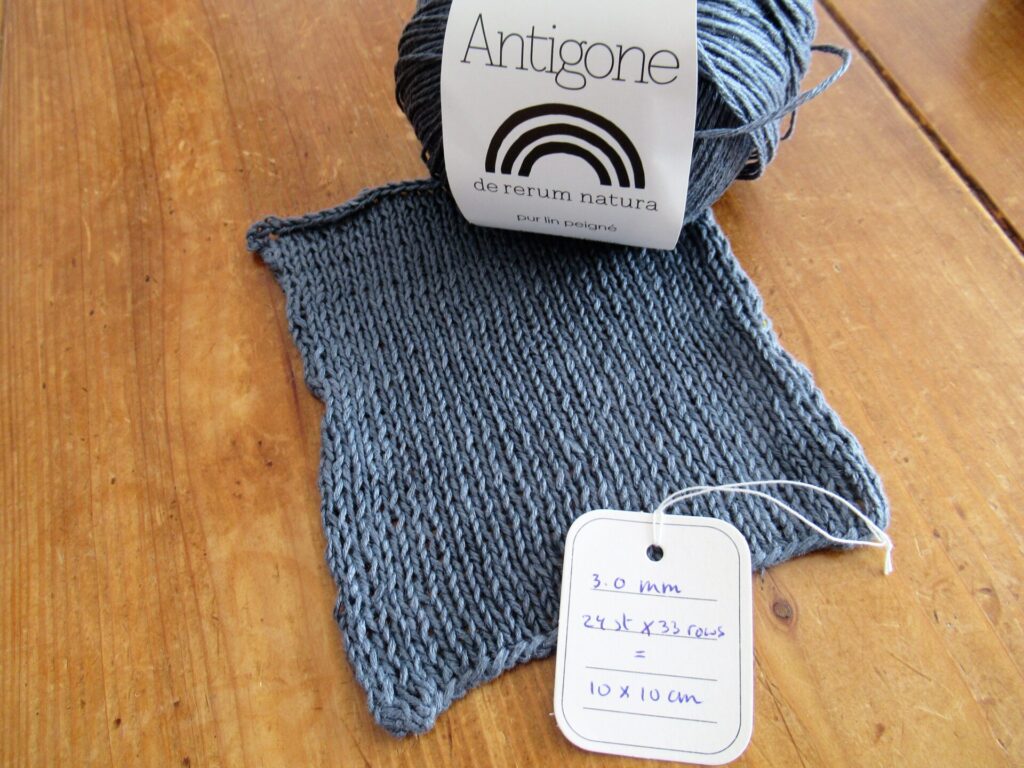
In case you’re interested in the details: the yarn is ‘Antigone’ from French company De Rerum Natura, and is a 100% organic linen. This colorway is called Voie Lactee (Milky Way) and is a deep blueish grey. It feels rather like twine on the ball, but becomes more supple after washing.
I am storing it away with the gauge swatch with a label attached to it to remind me of the needles I used. That’s something for next spring. Now is the time to knit with more woolly yarns.
I’ve started a cardigan for our daughter in a deep Burgundy blend of merino wool, alpaca and cotton.
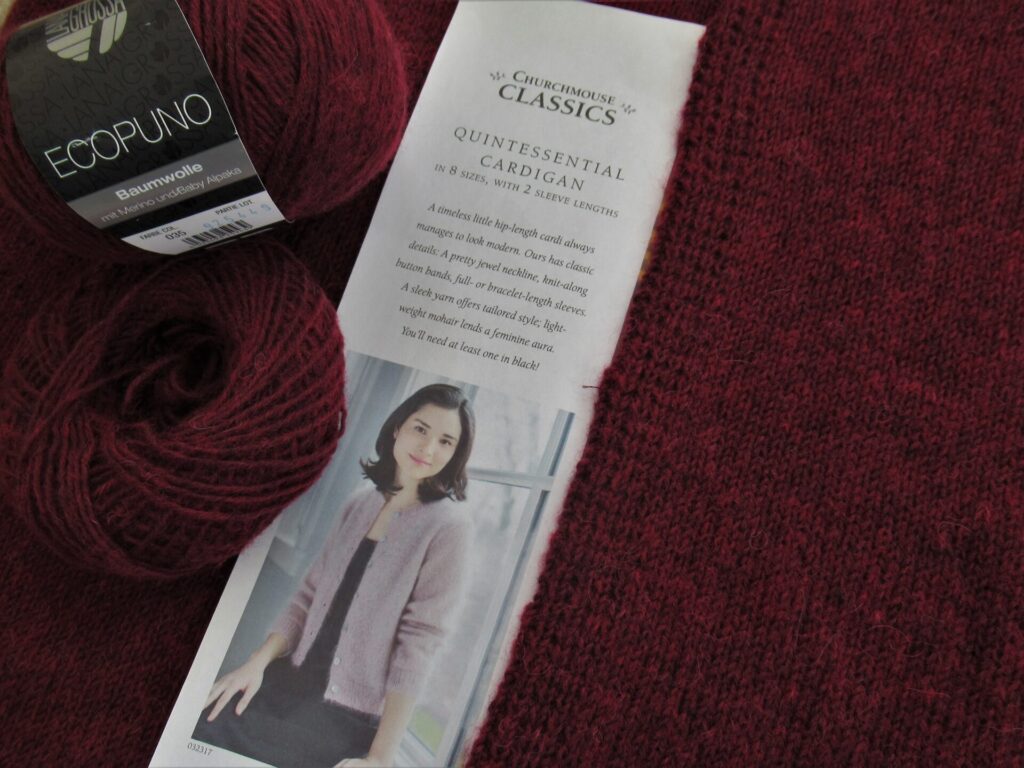
The Quintessential Cardigan is a very simple cardi in stocking stitch, but with great details, like a few short rows just above the ribbing at the hem so that it hangs better, a choice of sleeve lengths and a neat button band with slipped stitches. And that is where I slipped up.
My brain isn’t always functioning at its best in the evenings, you see. The pattern said that I should slip the stitches WYIB (with yarn in back) on wrong-side rows. And that is what I did. At least I slipped them with the yarn held toward what will be the back of the fabric when it is worn. But… that is the front of the fabric on the rows where you’re slipping the stitches. It’s very simple really. It is only confusing when written out here and to my foggy brain in the evenings.
The button band in my technique looked really nice.
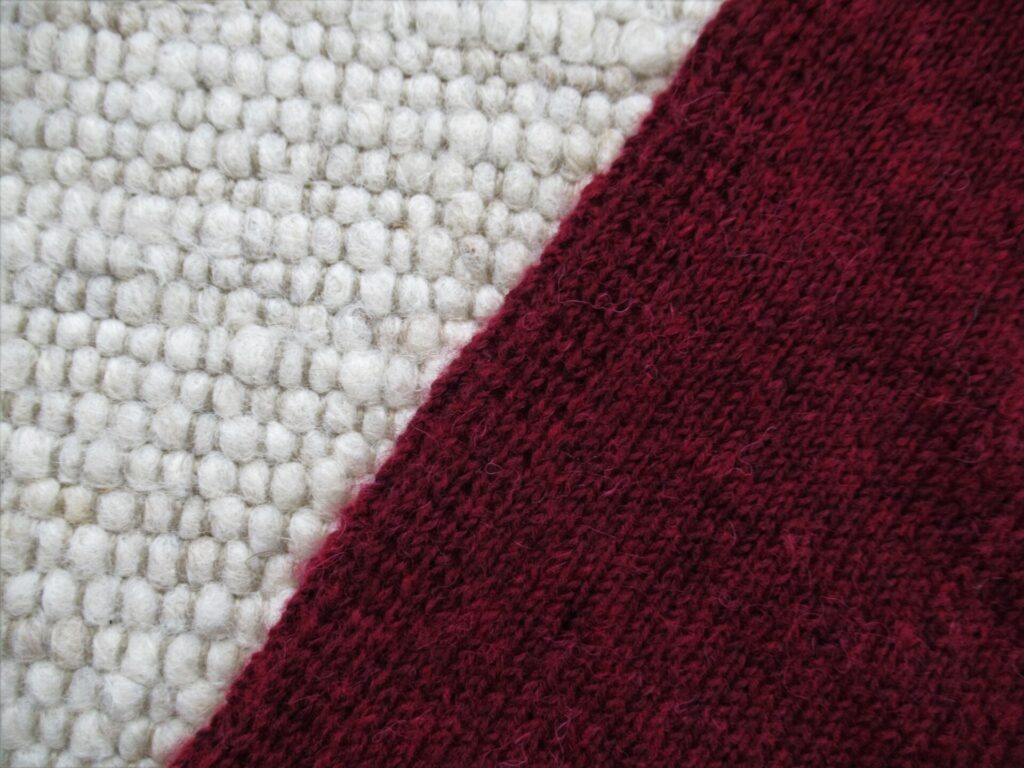
But it rolled inwards and was not the stable band it should have been. There was a niggling voice at the back of my mind telling me this all along, but I ignored it. It was only when I had finished the entire front that it really dawned on me that something wasn’t right. I should have known! I have knit button bands like this before!
Oh well, there was nothing for it but to frog the front. So I made myself a cup of tea, put on some music and took a deep breath.
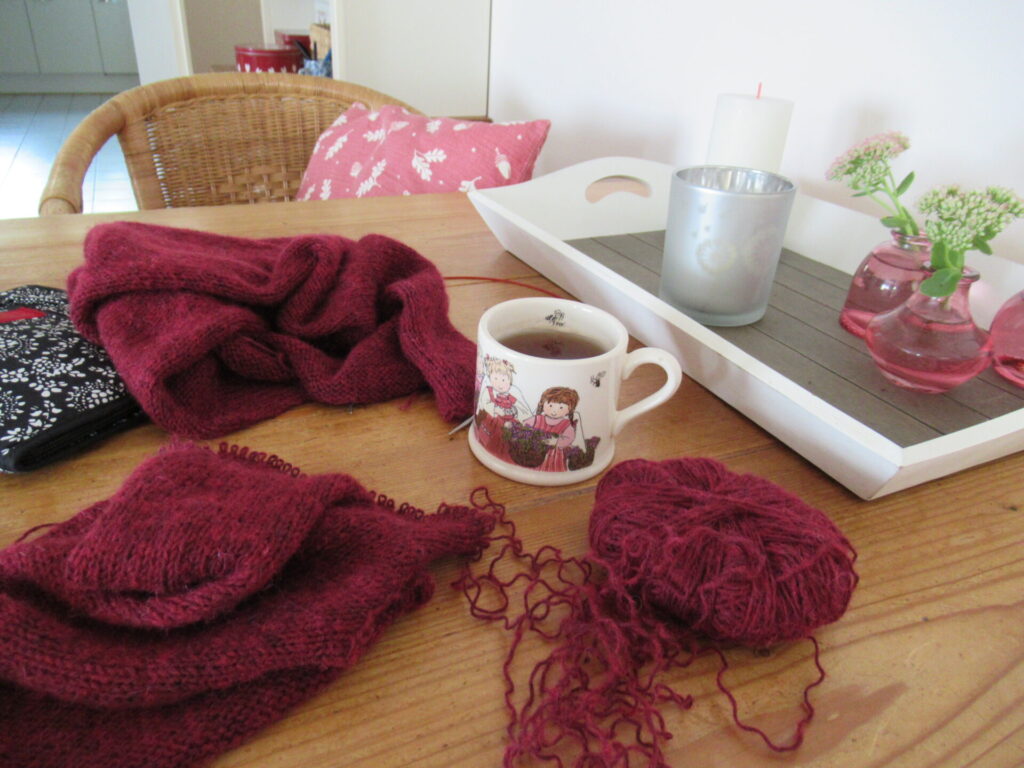
Unravelling four evenings of knitting took less than six songs on the CD my husband gave me for my birthday.
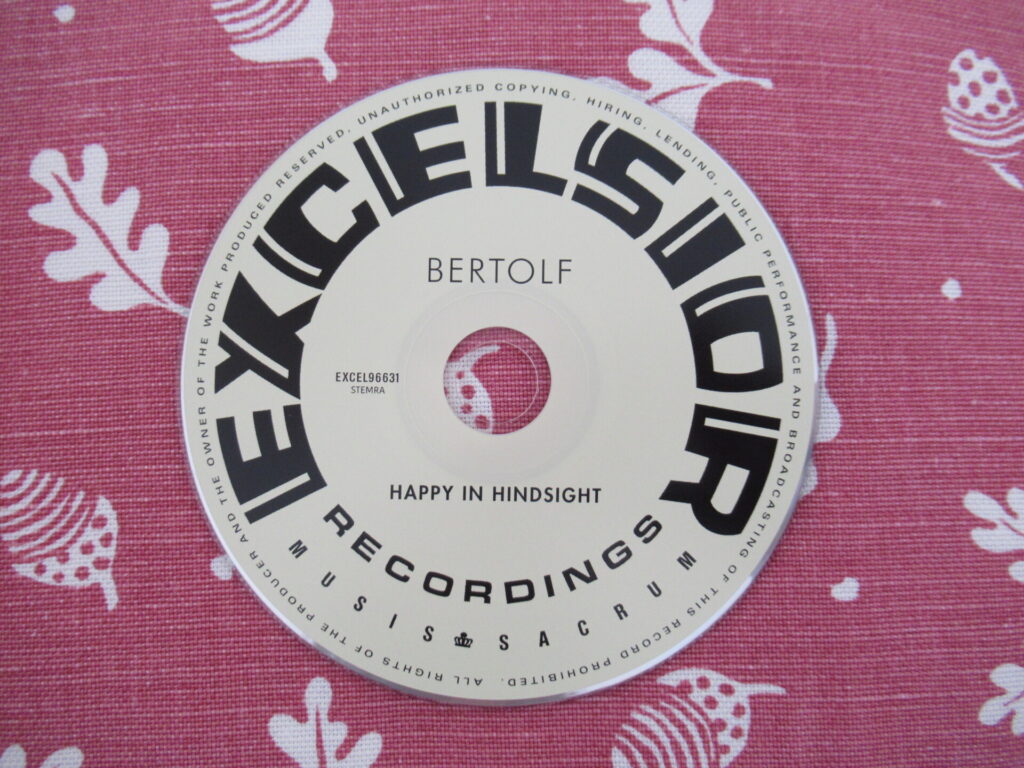
It is the latest album by Bertolf, a singer-songwriter from the nearby city of Zwolle. If you’re feeling melancholy at the end of summer, the cheerful song Don’t look up, Don’t look down might be just the pick-me-up you need. Listen to it once, and you’ll be humming it all day. You can see Bertolf playing it live on YouTube (notice the absence of an audience and everybody keeping a covid-safe distance.)
Apart from the cardigan with the frogged front and the linen stitch wrap, there is a pair of socks on my needles, I have a crochet project on the go, two shawls designed by myself need blocking and I’m fiddling with some remnants of fingering-weight yarn.
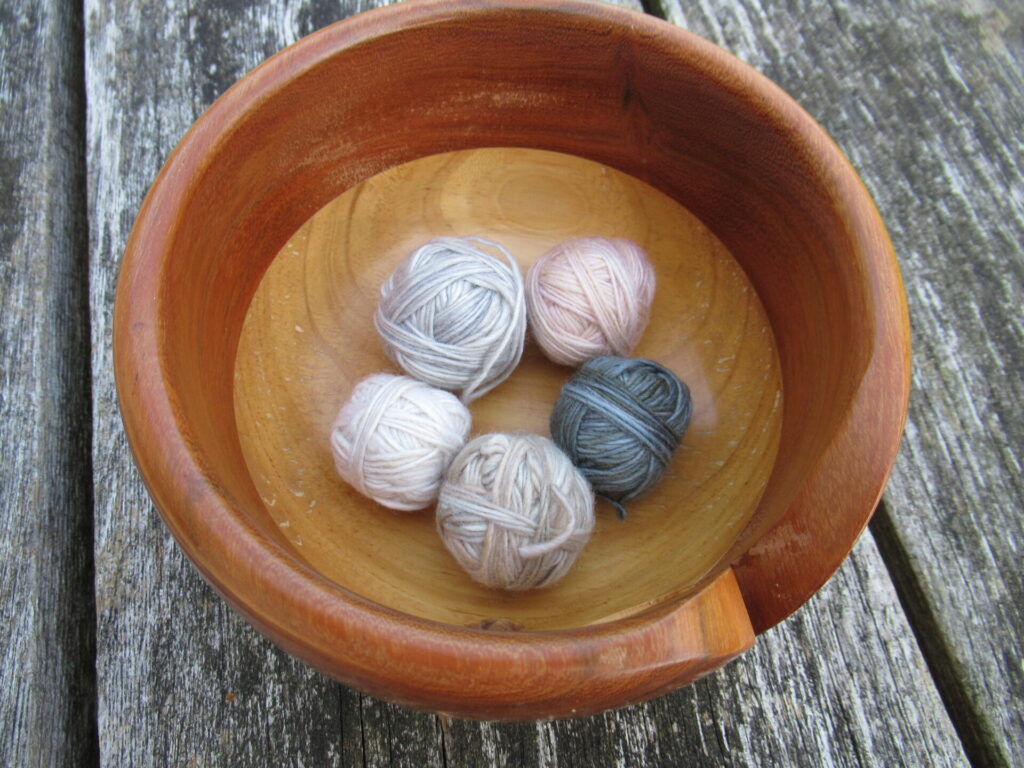
Then there is another cardigan I want to finish, a bag with a gradient of pink mini-skeins clamouring for attention, my big spinning project etc. etc. etc. In my love life, I am 100% monogamous. In my knitting… not so much.
To some, I may look obsessed, but I know that many of you will understand and share my tendency to surround myself with wool. There are even birds who do the same thing. Just look at what we found in one of our nest-boxes – the cosiest little nest lined with wool.
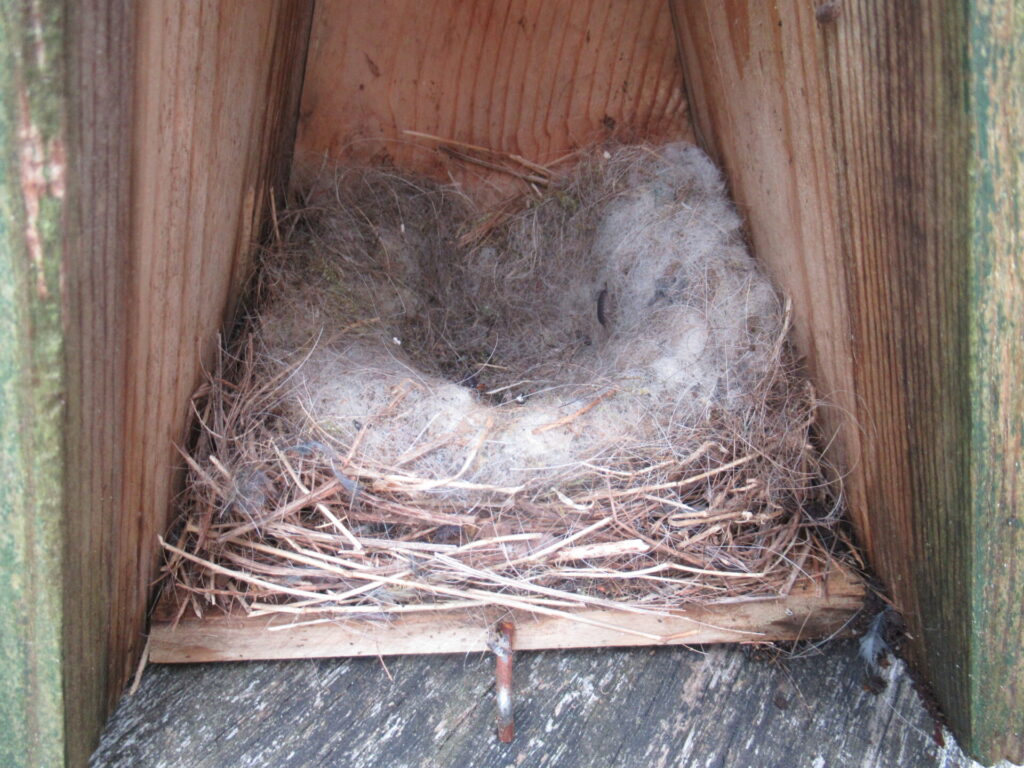
Thank you for visiting my wool-lined nest. Hope you’re all safe and cosy in your own. xxx
